Buckminster Fuller
description: American architect, systems theorist, author, designer, inventor and futurist (1895–1983)
181 results
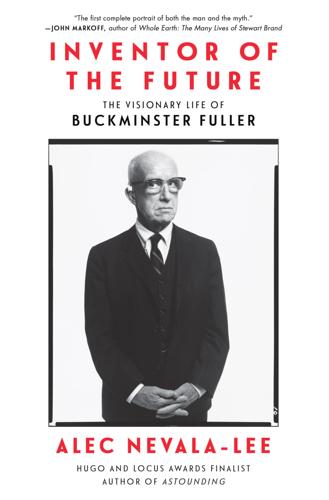
Inventor of the Future: The Visionary Life of Buckminster Fuller
by
Alec Nevala-Lee
Published 1 Aug 2022
Schedule of Lectures, Projects and Days” (R. Buckminster Fuller Papers, M1090, Series 4, Subseries 13, Mixed Materials 6–7) Lorance Loretta Lorance, Becoming Bucky Fuller Marks R. Buckminster Fuller and Robert Marks, The Dymaxion World of Buckminster Fuller RBF Richard Buckminster Fuller Sadao Shoji Sadao, Buckminster Fuller and Isamu Noguchi: Best of Friends SD R. Buckminster Fuller, Synergetics Dictionary: The Mind of Buckminster Fuller UOO R. Buckminster Fuller, Utopia or Oblivion Wong Yunn Chii Wong, “The Geodesic Works of Richard Buckminster Fuller” (dissertation) PROLOGUE: GEODESIC MAN “I’ve got Bucky Fuller here”: Taylor Barcroft, interviewed by author, July 1, 2020.
…
Full transcripts of the Everything I Know lectures were accessible at the time of writing at the website of the Buckminster Fuller Institute (https://www.bfi.org). Except where necessary to convey aspects of the writer’s thinking or personality, spelling and punctuation have generally been standardized in quotations from letters and other primary sources. ABBREVIATIONS AHF Anne Hewlett Fuller AMS R. Buckminster Fuller, An Autobiographical Monologue/Scenario Anthology R. Buckminster Fuller, Anthology for the Millennium BFR R. Buckminster Fuller, The Buckminster Fuller Reader “BV” Loretta Lorance, “Building Values: Buckminster Fuller’s Dymaxion House in Context” (dissertation) CP R.
…
Buckminster Fuller, The Buckminster Fuller Reader “BV” Loretta Lorance, “Building Values: Buckminster Fuller’s Dymaxion House in Context” (dissertation) CP R. Buckminster Fuller, Critical Path Discourse R. Buckminster Fuller, Your Private Sky: Discourse EIK R. Buckminster Fuller, Everything I Know 4DT R. Buckminster Fuller, 4D Time Lock Harvard file Student folder of Richard Buckminster Fuller, Harvard University Archives, Undergraduate Student Records, UAIII 15.88.10 1890–1968, box 1690 Hatch Alden Hatch, Buckminster Fuller: At Home in the Universe “Influences” RBF, “Influences on My Work,” in Ideas and Integrities, 9–34 Itinerary “Dymaxion Index—Section 11. Schedule of Lectures, Projects and Days” (R.

From Counterculture to Cyberculture: Stewart Brand, the Whole Earth Network, and the Rise of Digital Utopianism
by
Fred Turner
Published 31 Aug 2006
And in that sense, Fuller’s public persona fit well within what Peter Braunstein has called a “culture of rejuvenation” in the 1960s. See Braunstein, “Forever Young.” [ 270 ] N o t e s t o Pa g e s 5 5 _ 7 2 26. Fuller quoted in Fuller and Snyder, R. Buckminster Fuller, 12. 27. Emerson quoted in Kenner, Bucky, 149 –50. 28. Fuller, Ideas and Integrities, 35 – 43. 29. Ibid., 173. 30. Ibid., 176. 31. Ibid., 63. 32. Brand, “Buckminster Fuller,” 3, 249. 33. Fuller quoted in Fuller and Snyder, R. Buckminster Fuller, 38. By the early 1960s, Fuller was traveling more than two-thirds of every year. Kenner, Bucky, 290. 34. Brand, “Notebooks,” April 21, 1963, quotation in October 9, 1964 entry.
…
All quotations from materials in the Whole Earth Catalog Records appear courtesy of the Department of Special Collections, Stanford University Libraries. “All Watched Over by Machines of Loving Grace,” from The Pill versus The Springhill Mine Disaster, © 1968 by Richard Brautigan, has been reprinted with the permission of Sarah Lazin Books. Portions of chapter 2 have been adapted from “Buckminster Fuller: A Technocrat for the Counterculture,” in New Views on R. Buckminster Fuller, edited by Hsiao-Yun Chu and Roberto Trujillo, © 2006 Board of Trustees of the Leland Stanford Jr. University, forthcoming from Stanford University Press, used by permission. Parts of chapters 4 and 8 have been drawn from “How Digital Technology Found Utopian Ideology: Lessons from the First Hackers’ Conference,” in Critical Cyberculture Studies: Current Terrains, Future Directions, edited by David Silver and Adrienne Massanari (New York University Press, forthcoming), and are used by permission.
…
For this wing of the counterculture, the technological and intellectual output of American research culture held enormous appeal. Although they rejected the military-industrial complex as a whole, as well as the political process that brought it into being, hippies from Manhattan to HaightAshbury read Norbert Wiener, Buckminster Fuller, and Marshall McLuhan. Introduction [ 5 ] Through their writings, young Americans encountered a cybernetic vision of the world, one in which material reality could be imagined as an information system. To a generation that had grown up in a world beset by massive armies and by the threat of nuclear holocaust, the cybernetic notion of the globe as a single, interlinked pattern of information was deeply comforting: in the invisible play of information, many thought they could see the possibility of global harmony.
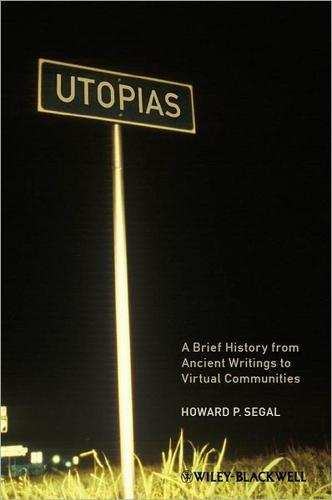
Utopias: A Brief History From Ancient Writings to Virtual Communities
by
Howard P. Segal
Published 20 May 2012
See my review in Technology and Culture, 28 (July 1987), 697–698 of R. Buckminster Fuller, Inventions: The Patented Works of Buckminster Fuller (New York: St. Martin’s, 1983) and James Ward, ed., The Artifacts of Buckminster Fuller: A Comprehensive Collection of His Designs and Drawings, 4 vols. (New York: Garland, 1985). Both were posthumous publications. The large literature on Buckminster Fuller includes Amy C. Edmondson, A Fuller Explanation: The Synergetic Geometry of R. Buckminster Fuller (Boston: Birkh€auser, 1987); Martin Pawley, Buckminster Fuller (New York: Taplinger, 1990); Robert R. Potter, Buckminster Fuller (Englewood Cliffs: Silver Burdett, 1990); J.
…
Potter, Buckminster Fuller (Englewood Cliffs: Silver Burdett, 1990); J. Baldwin, Bucky Works: Buckminster Fuller’s Ideas for Today (New York: John Wiley, 1996); Lloyd Steven Sieden, Buckminster Fuller’s Universe (Cambridge: Perseus, 2000); Thomas T. K. Zung, ed., Buckminster Fuller: Anthology for the New Millennium (New York: St. Martin’s, 2001); and Michael John Gorman, Buckminster Fuller: Designing for Mobility (New York: Rizzoli, 2005). See Lyman Tower Sargent, Utopianism: A Very Short Introduction (New York: Oxford University Press, 2010), 81–85, for a good summary of these recent developments. The foremost history of the kibbutz is Henry Near, The Kibbutz Movement: A History, 2 vols.
…
In 2008 and 2009 two major museums, New York’s Whitney and Chicago’s Museum of Contemporary Art, successively exhibited “Buckminster Fuller: Starting with the Universe.” This was the first major retrospective on Fuller since his death in 1983 and, like the New York Public Library exhibit, bespoke a more mature acknowledgment of the continued importance of utopianism, which, in this case, combined utopian writings, structures, and communities.20 In 1968 architectural critic Allan Temko published a provocative essay in Horizon magazine entitled “Which Guide to the Promised Land? Fuller or Mumford?” Without taking sides, Temko insightfully compared the differing visions of contemporaries Buckminster Fuller (1895–1983) and Lewis Mumford (1895–1990), both then at the height of their power and influence.
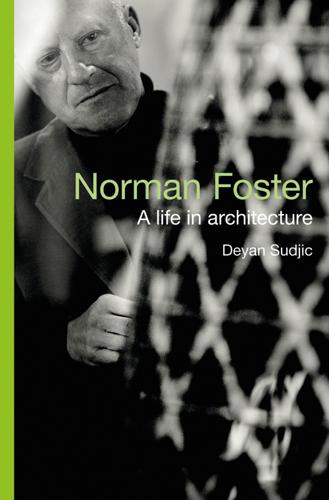
Norman Foster: A Life in Architecture
by
Deyan Sudjic
Published 1 Sep 2010
The shaded streets are intended to encourage walking – no small ambition in the climate of the Gulf, where in August the temperature is a brutal fifty degrees. In its optimism and its search for answers, Masdar is an echo of the first city of the future that Norman Foster explored with his adolescent imagination growing up in Manchester. Long before he met Buckminster Fuller, he never missed an instalment of Dan Dare: Pilot of the Future. As a young teenager Foster read the comic strip, with its intricate depiction of a world of atomic-powered monorails and levitating taxis (which look a lot like Masdar’s personal rapid transits), every week in the Eagle, the comic aimed at middle-class adolescents in the England of the 1950s.
…
To the impressionable young, the Eagle was highly effective propaganda, not just for modern architecture but for technology. There were images of nuclear-powered ships and gas turbine-engined cars that the Eagle predicted would be the personal transport of the very near future. As portrayed by the Eagle’s artists, these vehicles bear a close resemblance to Buckminster Fuller’s Dymaxion car, shaped like tear drops and driven on three invisible wheels. The cities of the future were going to look like modular collections of pods. One issue had a cutaway drawing of an American Antarctic base that had been clipped together from a series of units half-buried in snow and ice.
…
Louis Kahn, Eero Saarinen and Rudolph tried to build a specifically American form of modernism in architecture and they in turn were attracting their own followers. Foster was well aware of the striking direction that their work had taken. He was especially interested in Louis Kahn, who managed to be both monumental and fascinated by the thinking of Buckminster Fuller. For any young architect who wanted to get close to the centre of energy for their subject, America was an essential destination in a way that England was not. What attracted Foster to Yale rather than to Harvard or Princeton were the people that he hoped would be teaching him. In spite of a moment of doubt when he discovered that Kahn had just left New Haven for Philadelphia, Foster had decided that only Yale would do.
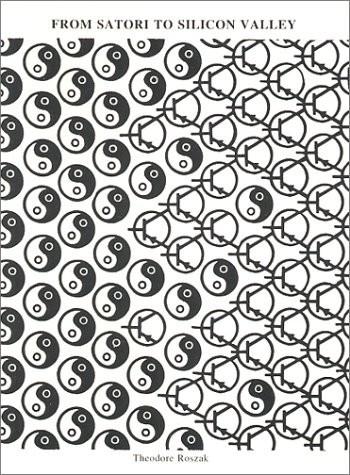
From Satori to Silicon Valley: San Francisco and the American Counterculture
by
Theodore Roszak
Published 31 Aug 1986
PRAEGER PUBLISHERS Society, edited for quote by Bill Voyd from Shelter and by Paul Oliver, copyright 1969. SAN FRANCISCO FOCUS MAGAZINE view with Stewart Brand in the for quotes from an inter- February 1985 issue. SAN FRANCISCO ORACLE for quotes from issues #6, 1967, and #12, 1967. Reprinted with permission of Allan Cohen, Editor. ST. MARTIN'S PRESS for Buckminster Fuller, An Autobiographical Monologue!Scenario by Robert Snyder, copyright 1970. ST. MARTIN'S PRESS copyright 1978. for Children of Prosperity by Hugh Gardner, The Times They Are A-Changing A shortened version of this essay was presented at San Francisco State University Alvin Fine Lecture. 1985 as the in April A few weeks before the event, student in the Public Affairs Office called arrange some campus publicity.
…
It 17 seemed to be saying that ingenuity deserved to be celebrated - from the stone axe and American Indian medicine to all human modern Clearly, electronics. so in saying, the Catalog spoke for an audience that wanted to see things that way. Or rather, the voices that could do that job. which it Catalog found the And of all the voices to gave a forum, none was to become more prominent than Buckminster Fuller, the formed a generation that it spaceship called Planet Earth, and write its who presumed to "operating manual" Now, Buckminster career. man who in- was already on board a Fuller had a long, long His prefabricated Dymaxion House of the late twenties (also called "the four dimensional liv- ing machine") dates back to the grandparents of the countercultural ward, his generation. story life From that point went through many ups and downs; but there can be no question (when Fuller was in his seventies) Not only did he make the magazine (in that the sixties were his zenith.
…
for- Thanks to that 18 him to the at San Bay Area appearance and subse- him quently to the prominence Stewart Brand gave in the Whole Earth Catalog, was launched on and most spectacular phase of the final On Fuller his career. the first page of the Catalog, the full corpus of Fuller's works was generously presented under the inscription: "the insights of itiated this catalog." became From Buckminster Fuller in- that point forward, Fuller the necessary presence at New Age confer- ences, symposia, and workshops: a sort of peripatetic global wizard audience down who might tie his awe-inspired for four or five hours at a stretch while he recited the history of the universe. What was it that made this odd figure so remarkably influential in countercultural circles?

Carbon: The Book of Life
by
Paul Hawken
Published 17 Mar 2025
It is down here, on dinner plates, in take-out cartons, drive-up windows, denatured soils, and confined-area feeding operations for cattle, chickens, and pigs. The crisis is a direct outcome of what we choose for food. Seven Bucky and Bing God is a verb, not a noun. Buckminster Fuller Spaceship Earth was a metaphor that architect and engineer Richard Buckminster Fuller used to guide human activity. A long-distance voyage in space would require maintenance, cooperation, teamwork, fairness, and a profound understanding of life-support systems. The planetary spaceship we are on is ingeniously designed. Passengers don’t realize they are flying a million miles per hour through space without seat belts, lots of room in coach, and delicious food.
…
Bing received a doctorate in nanotechnology at UCLA when he was twenty and went on to do his postdoc in materials science and engineering at Stanford. When one speaks and listens to Bing, there is something similar to his way of seeing the world to that of Buckminster Fuller. In my short time with Fuller, the best way I could describe his mind is brilliant innocence. Bing looked at wood the way Buckminster Fuller looked at bubbles. Why was cellulose so strong? He went small to find out. When studied with an electron microscope, the cellulosic fibers in wood were structurally similar to nanotubes, growing spirally upward in one direction.
…
There is an astonishing energy flow among carbon-based enzymes, blood cells, neurons, wiggly taste buds, antigens, and hundreds of other processes. The flow of carbon is the life you feel and experience. We can name, study, and analyze the body. Still, if we could understand a fraction of what is happening in our body, its complexity and intelligence, we would realize we are in the presence of mystery. Buckminster Fuller once observed that Spaceship Earth is so well designed that we don’t know we are on one. Our body is so well designed that many people do not realize they are in one. A new generation of farmers, chefs, bakers, and makers is providing us with pleasure, restoring our taste buds, and regenerating the land with their unstinting and underpaid labor.

Whole Earth: The Many Lives of Stewart Brand
by
John Markoff
Published 22 Mar 2022
There was also a tantalizing rumor to be chased down: Loeffler had heard of an Indian tribe, somewhere in northern Nevada or perhaps southern Utah, that had had no contact with whites. Brand kept searching for funding, with no tangible results. He tried to hold a seminar at Esalen on the project, bringing together big names, including Adams, Udall, and even Buckminster Fuller; he tried to exploit a Ford Foundation grant Raymond had gotten to explore the possibilities of suburban utopias; he wanted to display a roomful of his relevant photographs to kick-start his America Needs Indians! research project. But nothing worked. In the spring he and the Loefflers created Brand & Loeffler Design as a cover to permit them to buy equipment and supplies wholesale.
…
His financial investment had been only $250, he noted. He had received $1,400 of the $14,500 gross, and he had paid off everyone in just four days. While he had once been interested in Ayn Rand, he added, he increasingly viewed her laissez-faire capitalist worldview as old thinking. Now the ideas of Buckminster Fuller—pro-technology, with a deep faith that the coming of computerization and automation would result in an infinite abundance that would arrive shortly—were increasingly appealing to him. Fuller was an iconoclastic inventor and futurist who had popularized the geodesic dome and whole-systems thinking, and Brand fell under his spell while attending a series of lectures he gave in San Jose in early 1966.
…
The next day he went to the library and copied a list of addresses from the Congressional Directory and sent a handmade button with his slightly conspiratorial question to every senator and representative. He found another directory and sent buttons to NASA officials, United Nations officials, Russian scientists, and even members of the Soviet Politburo. He sent buttons to Buckminster Fuller and Marshall McLuhan for good measure, and to his surprise, Fuller responded that his campaign was in vain because it would never be possible see more than a little less than half of the Earth at any one time. (Sometime later, after the two men met at Esalen, Brand was able to clarify his concept, and Fuller would become a supporter.)
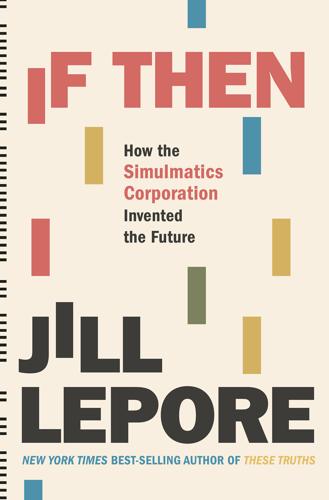
If Then: How Simulmatics Corporation Invented the Future
by
Jill Lepore
Published 14 Sep 2020
“Scenarios for Using the ARPANET at the International Conference on Computer Communication,” Washington, DC, October 24–26, 1972, Computer History Museum. And see, e.g., “Demonstration Heralds Next Wave: Connecting a Network of Networks,” Electronics, November 6, 1972. For samples of these conversations, see https://web.stanford.edu/group/SHR/4-2/text/dialogues.html. R. Buckminster Fuller, “Prime Design,” Bennington College Bulletin, May 1960. From R. Buckminster Fuller, Ideas and Integrities: A Spontaneous Autobiographical Disclosure (Baden, Switzerland: Lars Müller, 2009), 329, quoted in Turner, From Counterculture to Cyberculture, 51–58. Ibid., 104–8. Brand, “Spacewar.” Turner, From Counterculture to Cyberculture, chs. 4 and 5.
…
Denby and the de Koonings made silent films starring the Safford children, Patty in a swimsuit, her little brother in a rowboat, abducted by pirates, kidnapped by a witch, rescued at the last minute: fairy tales in black and white, tales of sorcery.4 In 1951, when Ed Greenfield and Patty Safford got married, Patty’s father gave them, as a wedding gift, a rambling old wooden Victorian house on the beach. It had a fireplace made of stones from Long Island Sound. Next door, another of Frank Safford’s friends, the visionary and eccentric architect Buckminster Fuller, would build for the Saffords one of his early geodesic domes, a shell of struts of aluminum and triangles of glass and porcelain, intricately balanced, a feat of engineering, a marvel, out of this world: the future summer headquarters of the Simulmatics Corporation.5 Ed Greenfield had big ideas and big ideals, big liberal ideas.
…
Greenfield, McPhee, and Yale psychologist Robert Abelson, who had also signed onto Simulmatics, decamped to Pool’s house in Cambridge. Ithiel’s fifteen-year-old son, Jeremy, who was spending the summer with his father, sat in on some of their meetings, watching them pore over endless reams of computer printouts.82 Then they reconvened at Wading River, where Buckminster Fuller was just beginning work on the geodesic dome he was building for Frank Safford, next to Ed and Patty Greenfield’s house.83 They’d have had to send a staffer to take the train into New York, to feed punch cards into and collect printouts from the IBM 704 at Columbia.84 On August 25, they headed to Washington, to submit Simulmatics’ results to Bobby Kennedy and the top campaign staff during a briefing held in RFK’s office.85 Simulmatics’ three new studies were as shrewd as their initial study on black voters.
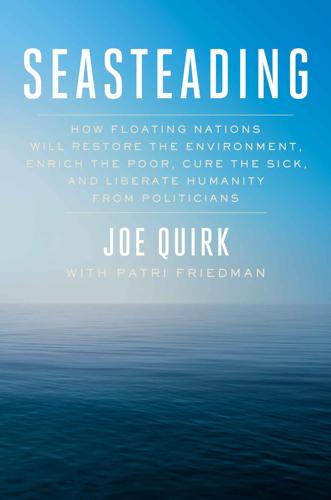
Seasteading: How Floating Nations Will Restore the Environment, Enrich the Poor, Cure the Sick, and Liberate Humanity From Politicians
by
Joe Quirk
and
Patri Friedman
Published 21 Mar 2017
Meinhold, “Inhabitat Interview: Water Architect Koen Olthuis on How to Embrace Rising Sea Levels,” August 28, 2014, http://inhabitat.com/inhabitat-interview-water-architect-koen-olthuis-on-how-to-embrace-rising-sea-levels. Korail Wet Slum in Dhaka, Bangladesh: www.unesco-ihe.org/sites/default/files/floating_city_apps.pdf. “seadromes”: Bill Bryson, One Summer: America, 1927 (New York: Knopf Doubleday, 2013). Buckminster Fuller revealed his detailed vision of Triton City: http://cup2013.wordpress.com/tag/triton-city/. There are three types of floating cities: Buckminster Fuller, Critical Path (New York: St. Martin’s Press), 332–33. The Maldives, a nation of 1,300 or so islands, may soon be submerged: Maldives Most At-Risk Economy in South Asia from Climate Change—Report, August 19, 2014, www.adb.org/news/maldives-most-risk-economy-south-asia-climate-change-report.
…
If the Depression had occurred in the 1959 instead of 1929, we might have colonized the seas in 1969 and laughed at the futuristic notion of walking on the moon. In a world where space stations have been floating in the sky for almost a half century, we shouldn’t be incredulous that sea stations can float on water. Seasteading should have started soon after 1967, when designer and architect Buckminster Fuller revealed his detailed vision of Triton City, a floating city for five thousand residents designed to encourage people to share resources and conserve energy. Triton City is engineered in a tetrahedronal shape to resist tsunamis. Declaring “Three-quarters of our planet Earth is covered with water, most of which may float organic cities,” Fuller published his book Critical Path in 1981 to describe his ongoing aqua project, revealing that the fundamental design proposed by our seasteading engineers had long been in place.
…
Johnson took the model with him and installed it in his LBJ Texas library . . . The city of Toronto, Ontario, Canada, and other cities of the U.S.A. are interested in the possibility of acquiring such floating cities. Chances of one being inaugurated are now improving.” Heartbreakingly, municipal and federal regulators stalled the project, which languished until Buckminster Fuller died in 1983. A great idea from one of humanity’s greatest geniuses was never tested because old rules prevented the innovation. No matter. Sea level rise is driving ocean colonization. Sink or Swim The Maldives, a nation of 1,300 or so islands, may soon be submerged. But as island paradises sink, floating cities will rise.
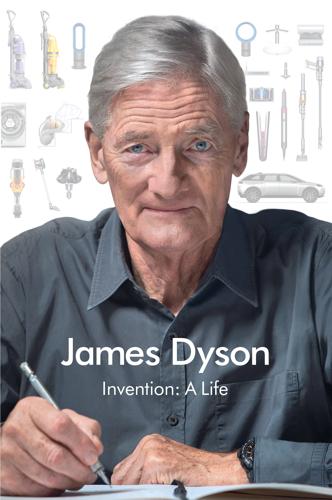
Invention: A Life
by
James Dyson
Published 6 Sep 2021
During my first face-to-face tutorial with him he said, “When you design something, everything about it has to have a purpose. There has to be a reason.” I looked around at the best designs of the time like Issigonis’s Mini, the new architecture of Norman Foster and Richard Rogers, and at the radical designs of the American inventor Buckminster Fuller, and I saw that Bernard was right. I have based all my design on this ever since—honest, purposeful design reflecting its technology and engineering. At the same time, this was very much the era of anything goes, a time of a brilliant flowering of new art, design, fashion, color, and music.
…
Most enduringly good modern buildings of the past fifty years, like the Pompidou Centre in Paris or the Lloyd’s building in London, as well as medieval cathedrals and ancient designs like the Pantheon in Rome, are defined by the structure that holds them up rather than by cladding or style. I was also really taken by the work of Buckminster Fuller. Hot news at the time in London—he had come to work with Norman Foster in 1967—he demonstrated, especially with his geodesic domes, that architecture and structure were indeed synonymous. One of “Bucky’s” most enthusiastic supporters at the RCA was my fellow-year student Anton Furst, an impulsive and hugely creative talent, who went on to design the sets for Neil Jordan’s The Company of Wolves, Stanley Kubrick’s Full Metal Jacket—re-creating the hell of Vietnam on the site of Beckton Gasworks in east London—and Tim Burton’s gloriously dark Batman, for which he won an Oscar.
…
Strong, wind- and snow-proof, they found favor with the military, polar research bases, and exhibition organizers, although they were never mass produced as homes as Fuller would have liked them to be. I suspect this is principally because most people, including mortgage lenders, prefer conventional homes. Through Tony Hunt’s teaching, Buckminster Fuller opened my eyes to what was structurally possible and to just how exciting pure structure and design engineering could be. I could see that structural engineering would come to dominate architecture. I also understood that this would be true of products, too, that their technology and engineering would become more important than industrial design casings.

Daily Rituals: How Artists Work
by
Mason Currey
Published 22 Apr 2013
“I’ve always painted”: Ibid., 147. 479. Le Corbusier: Nicholas Fox Weber, Le Corbusier: A Life (New York: Alfred A. Knopf, 2008); Jerzy Soltan, “Working with Le Corbusier,” http://www.archsociety.com/e107_plugins/content/content.php?content.24. 480. “The process of”: Soltan. 481. Buckminster Fuller: J. Baldwin, BuckyWorks: Buckminster Fuller’s Ideas for Today (New York: Wiley, 1996); Elizabeth Kolbert, “Dymaxion Man,” New Yorker, June 9, 2008, http://www.newyorker.com/reporting/2008/06/09/080609fa_fact_kolbert. 482. “A series of trials”: Baldwin, 66. 483. “disconcerted observers”: Ibid. 484. Paul Erdos: Paul Hoffman, The Man Who Loved Only Numbers: The Story of Paul Erdos and the Search for Mathematical Truth (New York: Hyperion, 1998). 485.
…
Wodehouse Edith Sitwell Thomas Hobbes John Milton René Descartes Johann Wolfgang von Goethe Friedrich Schiller Franz Schubert Franz Liszt George Sand Honoré de Balzac Victor Hugo Charles Dickens Charles Darwin Herman Melville Nathaniel Hawthorne Leo Tolstoy Pyotr Ilich Tchaikovsky Mark Twain Alexander Graham Bell Vincent van Gogh N. C. Wyeth Georgia O’Keeffe Sergey Rachmaninoff Vladimir Nabokov Balthus Le Corbusier Buckminster Fuller Paul Erdos Andy Warhol Edward Abbey V. S. Pritchett Edmund Wilson John Updike Albert Einstein L. Frank Baum Knut Hamsun Willa Cather Ayn Rand George Orwell James T. Farrell Jackson Pollock Carson McCullers Willem de Kooning Jean Stafford Donald Barthelme Alice Munro Jerzy Kosinski Isaac Asimov Oliver Sacks Anne Rice Charles Schulz William Gass David Foster Wallace Marina Abramovic Twyla Tharp Stephen King Marilynne Robinson Saul Bellow Gerhard Richter Jonathan Franzen Maira Kalman Georges Simenon Stephen Jay Gould Bernard Malamud A Note About the Author ACKNOWLEDGMENTS NOTES Photo Credits/Permissions INTRODUCTION Nearly every weekday morning for a year and a half, I got up at 5:30, brushed my teeth, made a cup of coffee, and sat down to write about how some of the greatest minds of the past four hundred years approached this exact same task—that is, how they made the time each day to do their best work, how they organized their schedules in order to be creative and productive.
…
He would fumble with his wristwatch—a small, oddly feminine contraption, far too small for his big paw—and finally say, grudgingly, “C’est difficile, l’architecture,” toss the pencil or charcoal stub on the drawing, and slink out, as if ashamed to abandon the project and me—and us—in a predicament. Buckminster Fuller (1895–1983) The American architect and inventor (he called himself a “comprehensive, anticipatory design scientist”) was frequently his own research subject as well (he also called himself Guinea Pig B). Just as he questioned humans’ accepted modes of living and transportation—popularizing the geodesic dome and prototyping the three-wheeled, blimp-shaped Dymaxion vehicle, among other futuristic inventions—he also eschewed traditional models of behavior.

Hope Dies Last: Visionary People Across the World, Fighting to Find Us a Future
by
Alan Weisman
Published 21 Apr 2025
“How Medellin Went from Murder Capital to Hipster Holiday Destination.” The Telegraph, January 4, 2018. https://www.telegraph.co.uk/travel/destinations/south-america/colombia/articles/medellin-murder-capital-to-hipster-destination. Stone, Jon. “Richard Buckminster Fuller’s Triton Floating City Project.” Behance. https://www.behance.net/gallery/2971307/Richard-Buckminster-Fullers-Triton-City-project?tracking_source=search_projects%7Cjon+stone+triton. Takemura, Alison F. “Chart: Here’s How the US Could Get Heat Pumps in Every Home by 2050.” Canary Media, June 23, 2023. https://www.canarymedia.com/articles/heat-pumps/chart-heres-how-the-us-could-get-heat-pumps-in-every-home-by-2050.
…
His goal was $30,000 to expand fivefold—but if he raised more, he would create a network of local ocean farms and train the next generation of 3D ocean farmers. “Join us to jump start the blue revolution!” His project successfully kick-started, his image blossomed on the internet. He and a rural community developer friend, Emily Stengel, cofounded a teaching nonprofit, GreenWave. In 2015 his 3D farm won the Buckminster Fuller Institute’s $100,000 Challenge prize and was honored by the Clinton Global Initiative. It was named one of Time magazine’s 25 Best Inventions of 2017. His 2019 book, Eat Like a Fish—part memoir, part manual, part manifesto, part cookbook—won a James Beard Award. Besides boutique restaurants that garnished salads with kelp noodles, his customers included the plant-based burger industry and Loliware, a startup turning seaweed into compostable drinking straws and flatware.
…
That led him to wonder: Instead of perpetually fortifying cities against rising seas, could they possibly build cities to rise with them? The idea of living on water, Chen learned, was as old as civilization. Fisherfolk in the Sumerian marshes inhabited human-made, unmoored islands; Uros built them out on Lake Titicaca to elude Incan raiders; Mexico’s Xochimilcas used them to farm crops. In the 1960s, American futurist Buckminster Fuller and Japanese architect Shoji Sadao designed a tsunami-proof tetrahedronal floating city to house 1 million in Tokyo Bay—an idea that, blessed by the US Navy as seaworthy, Baltimore entertained on a smaller scale for Chesapeake Bay. Fuller saw it as a solution to the high cost of waterfront real estate.
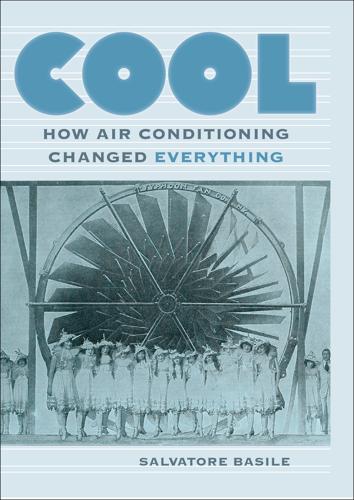
Cool: How Air Conditioning Changed Everything
by
Salvatore Basile
Published 1 Sep 2014
For their time and generosity in opening doors and sharing unusual pieces of knowledge, thanks (in alphabetical order) to Glen Clugston, Brendan Corrigan, Salvatore Diana, Robert Evers, Deirdre Gagion, Christopher Hyland, Joe McNulty, Joseph Manzella, Andy Oaker, David Skoblow, Salvatore Spataro, and Charles Warren. In addition, my gratitude to the interest and helpfulness shown by staff members of the Brooklyn Historical Society Library; John Ferry of the Estate of R. Buckminster Fuller; Gino Francesconi of the Carnegie Hall Archives; Todd Gilbert of the New York Transit Museum; Jane Gunderson of the Scharchburg Archives, Kettering University; Michael Homolka and the staff of the Minnesota Historical Society; Chris Hunter of MiSci: The Museum of Innovation and Science; Ron Hutchinson and The Vitaphone Project; Eric Kozubal of the National Renewable Energy Laboratory; Janet Linde of the Archives of the New York Stock Exchange; Ryan McPherson of the Baltimore & Ohio Railroad Museum; Mary Milmoe and Ashley Barrie of the Archives of the Carrier Corporation; Polly Nodine of the Jimmy Carter Presidential Library and Museum; Liz Perez of the Friedrich Air Conditioning Co.; Nilda I.
…
Electric Refrigeration News was intrigued enough to run a story, complete with picture—“Refrigerated Automobile Appears”—but the general consensus was that this was custom work of the most extravagant kind. And the story received almost no circulation. For a while, refrigerating an auto seemed to be the stuff of pure fantasy. At the 1933 Chicago World’s Fair, the inventor/futurist Buckminster Fuller’s Dymaxion Car—egg-shaped, three-wheeled, and said to be airconditioned—made an appearance. Unfortunately, it was involved in a crash that killed its driver (at the front gate of the Fair, no less) and was immediately dismissed as an insane idea.* Later in the year, Popular Science, which continued to be smitten with the subject of air conditioning, announced the “First Air-Conditioned Auto.”
…
At first, there were some desperation-tinged attempts to produce the fabricated housing that everyone had been talking about. One supplier went so far as to advertise war surplus Quonset huts, $398 each, as “The Ideal Answer to Your Housing Problem”; indeed, 750 of them were turned into a temporary housing project in Los Angeles. If that concept was too spartan, prospective homeowners could look to Buckminster Fuller, inventor of the ill-fated Dymaxion Car. Since the 1920s, Fuller had been working on an idea for a lightweight, dome-shaped house, with an aluminum shell and Plexiglas windows, that could be erected almost anywhere. By 1946 it was ready for production, rechristened the Fuller House, and unusual enough that it snagged an article in Life: “Newest answer to housing shortage is round, shiny, hangs on a mast and is made in an airplane factory.”
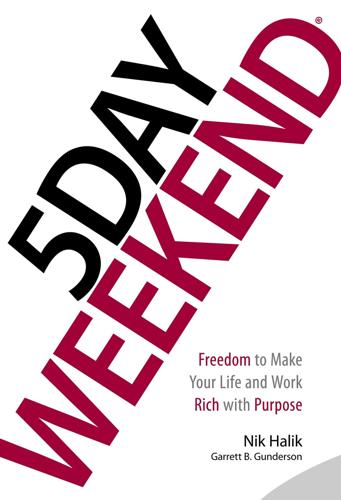
5 Day Weekend: Freedom to Make Your Life and Work Rich With Purpose
by
Nik Halik
and
Garrett B. Gunderson
Published 5 Mar 2018
I refuse to spend my life doing the bidding of others. I will help others build their dreams but not at the expense of my own. I build my 5 Day Weekend. I live the life I love. “The minute you begin to do what you really want to do, it’s really a different kind of life.” —BUCKMINSTER FULLER Putting the 5 Day Weekend to Work For you, this book may: Be a wake-up call Offer new ideas Crystalize thoughts you’ve had before Challenge you to live life to the fullest Spur you to action It can be read from beginning to end to give you an overview.
…
My goal isn’t to give you an exhaustive list of alternative growth investments, but rather to teach you to think outside the box. Do your homework, and you’ll see a world of opportunity beyond what you’re taught by Suze Orman and Money magazine. “Do more and more with less and less until eventually you can do everything with nothing.” —BUCKMINSTER FULLER CHAPTER 19 GO BIG MOMENTUM INVESTMENTS As your cash flow from your Growth investments grows, you’ll be in a position to start considering Momentum investments. You’re probably not in a position yet to even think about Momentum investing, and you may not be for a few years. Still, this section will help to paint a vision of what’s possible and give you something to look forward to.
…
Your significance will remain forever obscure to you, but you may assume that you are fulfilling your role if you apply yourself to converting your experiences to the highest advantage of others.”19 After this experience, Bucky chose to embark on “an experiment, to find what a single individual [could] contribute to changing the world and benefiting all humanity.”20 He became an architect, systems theorist, designer, inventor, and the author of more than thirty books, and he was hailed as “one of the greatest minds of our times.” A Clear Purpose Unleashes Your Greatness As we learn from Buckminster Fuller, what keeps us stuck in life is a lack of purpose. Having a clear purpose unleashes the best in us and enables us to escape aimlessness, boredom, and mediocrity. “Don’t ask yourself what the world needs. Ask yourself what makes you come alive, and go do that, because what the world needs is people who have come alive.”

The Secret War Between Downloading and Uploading: Tales of the Computer as Culture Machine
by
Peter Lunenfeld
Published 31 Mar 2011
There has long been a split in the literature on gaming between narratologists, who emphasize the “stories” that video games generate, and the ludologists, who concentrate on game play as primary. See Ian Bogost, Unit Operations: An Approach to Videogame Criticism (Cambridge, MA: MIT Press, 2006), 68. 26 . The sixth chapter of R. Buckminster Fuller’s Critical Path (New York: St. Martin’s Press, 1981) is devoted to the world game, and the Buckminster Fuller Institute maintains a page on its cite with numerous resources, available at <http://www.bfi.org/our_programs/who_is_buckminster_fuller/design_science/ world_game>. CHAPTER 4: WEB n.0 1. See <http://flickr.com>; <http://www.del.icio.us>. The term was coined by Thomas Vander Wal. See Daniel H. Pink, “Folksonomy,” New York Times Sunday Magazine, December 11, 2005, available at <http://www.nytimes. com/2005/12/11/magazine/11ideas1-21.html?
…
One game that was indeed sticky involved players running around a huge and unconventional map of the world, working together to deploy resources and innovative technology to make not just their team but rather the whole globe a better place. More than a generation ago, the polymath futurist and designer R. Buckminster Fuller (of geodesic dome fame) proposed this multiplayer “design science process for arriving at economic, technological and social insights pertinent to humanity’s future envolvement [sic, a signature Fuller neologism] aboard our planet Earth.” Originally called the “great logistics game” and then the “world peace game,” it was best known simply as the “World Game.”
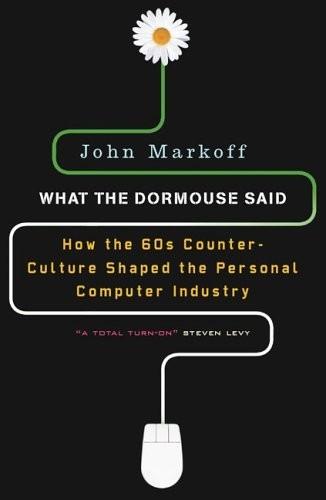
What the Dormouse Said: How the Sixties Counterculture Shaped the Personal Computer Industry
by
John Markoff
Published 1 Jan 2005
Combining his Midwestern roots with a Merry Prankster sense of cosmic adventure, Brand would create in 1968 an irresistible format in the first Whole Earth Catalog. A compendium of stuff patterned after the Sears and L. L. Bean mail-order catalogs crossed with Consumer Reports, the catalog struck a deep nerve that transcended the counterculture. Brand had come upon the idea of a “Whole Earth” two years earlier, after hearing a lecture by Buckminster Fuller. One day in North Beach, he had been sitting huddled in a blanket on the roof of his three-story apartment building looking out over the city. Having taken “a few mikes of LSD,”2 Brand was suddenly struck by the fact that the city’s buildings were not laid out in perfect parallel lines. It seemed to him that, since the surface of the earth was curved, they actually must diverge just slightly.
…
“Information wants to be free,” he said, and then he added in typical Brandian fashion, “and it wants to be very expensive.” The first Whole Earth Catalog was a full-on tour of the counterculture, a hodgepodge of product descriptions, advice, commentary, and quirky features laid out in a seemingly haphazard fashion, beginning with Buckminster Fuller and ending with the I Ching; it became an instant bible and a serendipitous tool for finding interesting stuff. In doing so, it also helped a scattered community that was in the process of defining itself find an identity. “We are as gods and we might as well get used to it.” Brand’s introduction began with a phrase borrowed from British anthropologist Edmund Leach that is often remembered and quoted.
…
Evans decided that he would become the interface between the super-straight world of information technology, SRI, and the wild and free world of the embryonic alternative society that was blossoming on the Peninsula.11 He felt that a lot of the ideas about community that Brand was exploring and the ideas that Engelbart had about a “bootstrapped community” were on the same continuum, and so he started to actively encourage a dialogue between the two worlds. Engelbart, he believed, had a receptive mind. In 1969, at Evans’s urging, Engelbart took a small group of Augment researchers to visit a commune known as Lama that had been started by Steve Durkee and Steve Baer in the mountains north of Taos, New Mexico. Baer was a disciple of Buckminster Fuller and the creator of a novel type of domelike building called a “zome.” Durkee was an artist who was Brand’s former roommate and mentor/guru. As hard as Evans tried to bridge the gap, he ended up increasing the stress on Engelbart, who in principle was open to new ideas but who was increasingly obsessing over losing control of his group.
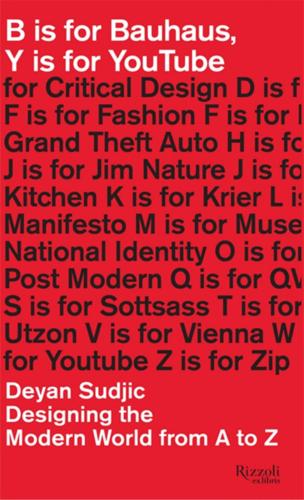
B Is for Bauhaus, Y Is for YouTube: Designing the Modern World From a to Z
by
Deyan Sudjic
Published 17 Feb 2015
He sold the rights to Caterham Cars, who still manufacture its descendants to this day. What made the Lotus project work was Chapman’s ability to think his way around the production and performance issues on which every new car depends. He wasn’t the first engineer to come up with the idea of using a space frame to make a stiff but lightweight car. Buckminster Fuller had done that decades earlier when he built his Dymaxion car back in the 1930s. While Fuller was far-sighted enough to see the potential of the approach, a fatal crash at its launch blighted the Dymaxion’s future and it was Chapman who was able to make it work in the marketplace. And the brilliant Hans Ledwinka at the Czech car company Tatra – from which FA Porsche took much of the expertise for the Volkswagen – had also worked on the idea of a ‘backbone’ chassis that shaped Lotus’s approach to finding a simple and economical way to stiffen his lightweight fibreglass bodies.
…
He turned his attention to the young Norman Foster, who was capable, in those days, of telling potential clients that the answer to their needs might not be to build anything at all. Most unsettlingly of all for those who took a conventional view of architectural aesthetics, Foster spoke of his admiration for the maverick visionary Buckminster Fuller and his geodesic domes. As time has passed, design history has emerged as an academic subject, somewhere between cultural studies and social anthropology, a shift that I don’t find particularly appealing. But design keeps changing shape, which is why it matters. The clearest, but still not entirely satisfactory, way to define design is through its relationship with mass production.
…
From the first Paris exposition to the starry-eyed futurism of New York in 1939, from the welfare state optimism of the Festival of Britain in 1951 and the tawdry corporate vision of New York in 1964, each of the fairs sloganized a particular view of urbanism. The most extreme embrace of drip-dry modernity was the Montreal Expo of 1967, with its concrete housing ziggurat designed by Moshe Safdie, its Buckminster Fuller dome for the United States pavilion, and its monorails. The expo, despite all the dross and the expense, is still refusing to lie down and die. The Shanghai Expo of 2010 was the most well attended of all time, the product of the burgeoning mobility of the Chinese labouring class and the determination from governments around the world to make the best possible showing in front of this potentially enormous new market.
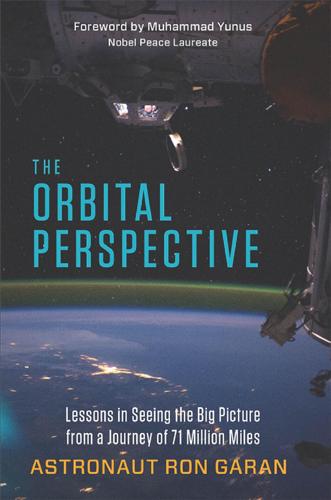
The Orbital Perspective: Lessons in Seeing the Big Picture From a Journey of 71 Million Miles
by
Astronaut Ron Garan
and
Muhammad Yunus
Published 2 Feb 2015
The establishment of this Unity Node would allow us to create “dashboards of Earth,” or a control room for Spaceship Earth, where critical data affecting our global society could be presented in an actionable way. The idea of creating this type of information system is not new. In the 1960s, renowned inventor and visionary Buckminster Fuller popularized the term “Spaceship Earth,” and he devoted his life to identifying and communicating the interconnections between economic, social, and environmental systems to improve life on our planet. Long before environmental stewardship was prevalent in society, Fuller addressed the reality of our interconnectedness and the synergy that could be produced by working together to find ways to stop wasting the planet’s natural resources.
…
Fuller’s plans were well in advance of the technology of the time, and therefore his original vision for the Expo ’67 pavilion was not fully realized. However, advancements in computing and visualization technologies over the past five decades have made it possible to realize the original purpose of the Expo ’67 pavilion. The nonprofit Buckminster Fuller Institute, which is dedicated to finding innovative solutions to some of humanity’s most pressing problems, wants to use the fiftieth anniversary of Expo ’67 as an impetus to finally fully realize Fuller’s dream of creating a control room for Spaceship Earth. By renovating and incorporating modern technology into the fifty-year-old geodesic dome, which is currently the Biosphère Environmental Museum, it hopes to create a global hub for collaborative international problem solving.
…
By renovating and incorporating modern technology into the fifty-year-old geodesic dome, which is currently the Biosphère Environmental Museum, it hopes to create a global hub for collaborative international problem solving. This tool would be made completely open to all, so that it can be of value to society as a whole. As a result, according to Elizabeth Thompson, executive director of the Buckminster Fuller Institute, “planetary planning could be truly democratized, and changing the course of Spaceship Earth can become a cooperative human effort, rather than a task relegated to policy makers.” Fuller envisioned this control room as a global optimization tool. Today, we have the technology to fulfill Fuller’s vision.
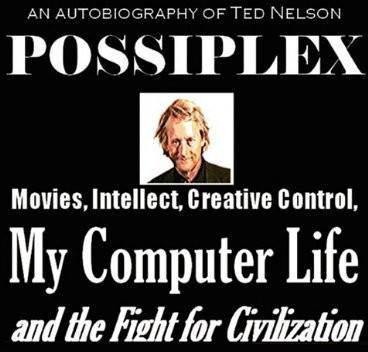
Possiplex
by
Ted Nelson
Published 2 Jan 2010
Obviously libraries were not to be trusted. information wherever you could. You had to find the Clearly people were misled about libraries. They had lions of stone but feet of clay. Bucky Says It All (1947) DESIGN INFLUENCES: Bucky in 1947-8, when I was ten It was 1947, when I was ten, that Buckminster Fuller made all the newspapers. He was trying to mass-produce his Dymaxion House, and there was a lot of publicity for it; I remember reading about Bucky in a number of different places, especially newspapers. (He must have had a very good publicist.) Bucky Fuller believed we could have a new and much better and very different world.
…
This gave me something to hope for in a world I rather disliked. (I have always believed life should be completely different.) He said the educational system was horrible—I totally agreed; and he wanted to fix the world by design—the design of his magnificent car, the design of his house that would come in by helicopter and be lowered on a pole. Buckminster Fuller was my hero ever since. Sophistication, Age 10 I believe that at the age of ten my favorite word was “ostensibly.” I know I could recite Hamlet’s “To Be or Not To Be” and a few verses of the Rubaiyat; I could sing, write out (and accentuate correctly), numerous songs from Gilbert and Sullivan, the first verse of the “Marseillaise” and all four verses of the Star Spangled Banner.
…
I saw myself becoming perhaps-• a showman-intellectual,* like one of my heroes, Jean Cocteau. * A recent nice term is showman-penseur. • a theoretical explorer in some new area like my hero Benjamin Lee Whorf, an academic outlier (he was in the insurance business) who was nevertheless respected in academia, and created a field of his own. • like my boyhood hero Buckminster Fuller, a “designer and thinker”. Looking back, I tracked on the wavelengths of these three men surprisingly well. But little did I know what this agenda had cost Bucky, or what it would cost me. Perhaps I could create a field of my own, like Whorf and Bucky. Egotistical, you say? Of course. But I was going to bet my life on it.
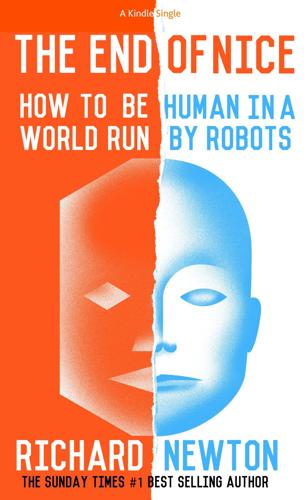
The End of Nice: How to Be Human in a World Run by Robots (Kindle Single)
by
Richard Newton
Published 11 Apr 2015
He died in 1996 at the age of 83 having published 1,475 academic papers, of which many were monumental and all substantial Tellingly, when people stopped doing mathematics he said they “had died”. When they died he said they “had left”. This unusual use of language reveals something about the way he approached the world and its problems. Of them all, by far the most telling is: “My brain is open”. Buckminster Fuller was one of the great creative forces of his time. He invented the geodesic dome, the term Spaceship Earth, and was President of Mensa He urged people to be more precise in the way they spoke about things so that they could think more effectively. “I suggest to audiences that they say, ‘I’m going “outstairs” and “instairs”.’
…
But if they try saying in and out for a few days in fun, they find themselves beginning to realise that they are indeed going inward and outward in respect to the center of Earth, which is our Spaceship Earth. And for the first time they begin to feel real ‘reality’.” As you know, it didn’t catch on. But it demonstrates the fierce independence of thought that gave him the ability to see and think differently. Paul Erdos and Buckminster Fuller perceived the world differently and so they used different words to label everyday activities and this in turn helped them approach problems and opportunity differently. Now, if you apply such different thinking to the fast-growing entrepreneurial business in the world we live in right now you might get “The Offer”.

Red Plenty
by
Francis Spufford
Published 1 Jan 2007
See Walter Hixson, Parting the Curtain: Propaganda, Culture, and the Cold War, 1945–1961 (New York: St Martin’s Press, 1997). 2 American girls in polkadotted knee-length dresses: for photographs of the American exhibition in Sokolniki Park, and of the Muscovite visitors to it, see Life Magazine, vol. 47 no. 6, 10 August 1959, pp. 28–35, with little plastic beakers on p. 31; for descriptions of the exhibits, see Walter Hixson, Parting the Curtain; for a reading of the design politics of Buckminster Fuller’s dome, see Alex Soojung-Kim Pang, ‘Dome Days: Buckminster Fuller in the Cold War’ in Jenny Uglow and Francis Spufford, eds, Cultural Babbage: Technology, Time and Invention (London: Faber & Faber, 1996), pp. 167–92; for press reaction in the US, see New York Times, vol. CVIII no. 37,072, 25 July 1959, pp. 1–4. 3 She had added a green leather belt bought at the flea market: that is to say, at one of the legal bazaars or car-boot sales (without car boots) where Soviet citizens could sell their possessions second-hand.
…
See Walter Hixson, Parting the Curtain: Propaganda, Culture, and the Cold War, 1945–1961 (New York: St Martin’s Press, 1997). 2 American girls in polkadotted knee-length dresses: for photographs of the American exhibition in Sokolniki Park, and of the Muscovite visitors to it, see Life Magazine, vol. 47 no. 6, 10 August 1959, pp. 28–35, with little plastic beakers on p. 31; for descriptions of the exhibits, see Walter Hixson, Parting the Curtain; for a reading of the design politics of Buckminster Fuller’s dome, see Alex Soojung-Kim Pang, ‘Dome Days: Buckminster Fuller in the Cold War’ in Jenny Uglow and Francis Spufford, eds, Cultural Babbage: Technology, Time and Invention (London: Faber & Faber, 1996), pp. 167–92; for press reaction in the US, see New York Times, vol. CVIII no. 37,072, 25 July 1959, pp. 1–4. 3 She had added a green leather belt bought at the flea market: that is to say, at one of the legal bazaars or car-boot sales (without car boots) where Soviet citizens could sell their possessions second-hand.
…
It puzzled her a bit that the Americans would pick such a thing as the centrepiece of their exhibition. It was certainly impressive, in its way, but you could tell that it sat lightly on the earth, and would soon be gone. It looked strangely casual. ‘Mm-hmm,’ said Fyodor. ‘… designed by a famous American architect, Buckminster Fuller,’ one of the girls was saying. Right across the big floor of the dome, the same speech was being made to close-packed circles of listeners as more and more people poured in. White-gloved hands pointed to exhibits around the base of the walls, and to the cluster of seven giant white screens overhead, which filled most of the span of the golden wall in front of them.
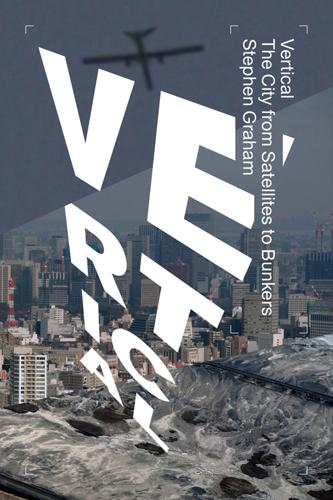
Vertical: The City From Satellites to Bunkers
by
Stephen Graham
Published 8 Nov 2016
For permission to reproduce images we would like to thank the following in particular: David Coulthard’s car on the Burj Al Arab’s helipad, courtesy of the Jumeirah Group (p. xii); ‘City of Volume’ image, courtesy of Pierre Bélanger (p. xvi); the flat map courtesy of Neil Brenner, from Brenner’s ‘Introducing the Urban Theory Lab’ (p. 8); Lightful by Buckminster Fuller, from Operating Manual for Spaceship Earth (2008), courtesy of the Buckminster Fuller Institute (p. 24); Menwith Hill NSA Base photograph courtesy of Steve Rowell (p. 35); São Paulan executive’s helipad illustration, courtesy of Eduardo Martino (p. 101); designs for Cairo skyscrapers, courtesy of Reese Campbell and Demetrios Comodromos at Method Design (p. 128); Kingdom Tower image, courtesy of Malec (p. 150); London skyscrapers image, courtesy of Darjole (p. 165); Sky Tower billboard in Mumbai, courtesy of Andrew Harris (p. 207); Skybridge in Minneapolis, courtesy of Thunerchild5 (p. 226); Bangkok’s Skytrain, courtesy of Moaksey (p. 231); Fake skyline in Hong Kong, courtesy of Drew; Underneath New York by Harry Granick, book cover (1991), courtesy of Fordham University (p. 280); ‘Sacrifice Zone’, courtesy of Kaitlin Donnally (p. 290); Awaaz Foundation poster, courtesy of the Awaaz Foundation (p. 299); Photograph of Devi Lal, courtesy of Beena Sarwar (p. 338); ‘Palestinian tunneller’, courtesy of Getty Images (p. 351); ‘urban cave’ project, courtesy of Andrea Star Reese (p. 353); ‘Urban Explorer’, courtesy of Bradley Garrett (p. 361) All rights reserved The moral rights of the author have been asserted 1 3 5 7 9 10 8 6 4 2 Verso UK: 6 Meard Street, London W1F 0EG US: 20 Jay Street, Suite 1010, Brooklyn, NY 11201 versobooks.com Verso is the imprint of New Left Books ISBN-13: 978-1-78168-793-2 ISBN-13: 978-1-78168-996-7 (US EBK) ISBN-13: 978-1-78168-995-0 (UK EBK) British Library Cataloguing in Publication Data A catalogue record for this book is available from the British Library Library of Congress Cataloging-in-Publication Data Names: Graham, Stephen, 1965– author.
…
The motivating idea of the book is that it is only through such fully three-dimensional and critical perspectives that the political, social and urban struggles of our rapidly urbanizing world can possibly be understood. Strap yourself in, then, for a wild and startling ride through the three-dimensional geographies of our world. Part One: Above Social scientists need to raise their eyes from the ground Martin Parker A 1928 drawing by visionary designer, architect and polymath Buckminster Fuller, emphasizing the global, spiritual, practical and vertical challenges facing engineering, architecture and human life inherent within his idea of ‘Spaceship Earth’. (Fuller, Operating Manual for Spaceship Earth, 1968). 1. Satellite: Enigmatic Presence We live in a satellite enabled age.
…
Residents in the zones just outside the city’s business district wondered if they could benefit from an extended project or even of a second dome was possible.71 Designers in Beijing are meanwhile looking to upscale the International School’s ideas to a much larger dome enclosing a major new privatised urban park in the city.72 Architects have also suggested burying copper coils under parks to create electrostatic fields which attract smog particles from the immediate atmosphere.73 These examples of the growing interiorisation of ‘nature’ powerfully echo Buckminster Fuller’s influential ruminations between the 1940s and 1960s on the possibilities of dome-like constructions at various scales within which urban air could be precisely controlled. Famously, in 1960 Fuller suggested a giant, 400-tonne glass geodesic dome encompassing Midtown Manhattan which would permanently sustain what he called a ‘Garden of Eden’ climate’.74 Fuller claimed that ‘the cost of snow removal in New York City would pay for the dome in 10 years.’75 Today’s ‘bubbles’ for the precise manipulation of urban air contrast sharply, however, with Fuller’s urban planning ideas in one crucial respect.

The Fourth Industrial Revolution
by
Klaus Schwab
Published 11 Jan 2016
Technology enables greater efficiency, which most people want. Yet they also wish to feel that they are not merely part of a process but of something bigger than themselves. Karl Marx expressed his concern that the process of specialization would reduce the sense of purpose that we all seek from work, while Buckminster Fuller cautioned that the risks of over-specialization tend “to shut off the wide-band tuning searches and thus to preclude further discovery of the all-powerful generalized principles.”30 Now, faced with a combination of increased complexity and hyper-specialization, we are at a point where the desire for purposeful engagement is becoming a major issue.
…
_r=0 25 Martin Ford, Rise of the Robots, Basic Books, 2015. 26 Daniel Pink, Free Agent Nation – The Future of Working for Yourself, Grand Central Publishing, 2001. 27 Quoted in: Farhad Manjoo, “Uber’s business model could change your work”, The New York Times, 28 January 2015. 28 Quoted in: Sarah O’Connor, “The human cloud: A new world of work”, The Financial Times, 8 October 2015. 29 Lynda Gratton, The Shift: The Future of Work is Already Here, Collins, 2011. 30 R. Buckminster Fuller and E.J. Applewhite, Synergetics: Explorations in the Geometry of Thinking, Macmillan, 1975. 31 Eric Knight, “The Art of Corporate Endurance”, Harvard Business Review, April 2, 2014 https://hbr.org/2014/04/the-art-of-corporate-endurance 32 VentureBeat, “WhatsApp now has 700M users, sending 30B messages per day”, January 6 2015 http://venturebeat.com/2015/01/06/whatsapp-now-has-700m-users-sending-30b-messages-per-day/ 33 Mitek and Zogby Analytics, Millennial Study 2014 , September 2014 https://www.miteksystems.com/sites/default/files/Documents/zogby_final_embargo_14_9_25.pdf 34 Gillian Wong, “Alibaba Tops Singles’ Day Sales Record Despite Slowing China Economy”, The Wall Street Journal, 11 November 2015, http://www.wsj.com/articles/alibaba-smashes-singles-day-sales-record-1447234536 35 “The Mobile Economy: Sub-Saharan Africa 2014”, GSM Association, 2014.

What's Mine Is Yours: How Collaborative Consumption Is Changing the Way We Live
by
Rachel Botsman
and
Roo Rogers
Published 2 Jan 2010
“A Conversation with Daniel Pink,” Information Outlook (November 2001), www.conversationagent.com/2008/04/conversation-wi.html. 19. Christophe Aguiton and Dominique Cardon, “The Strength of Weak Cooperation: An Attempt to Understand the Meaning of Web 2.0,” International Journal of Digital Economics 65 (2007): 51–65. 20. Stephanie Smith, “Good Guide: R. Buckminster Fuller,” GOOD (August 14, 2007), www.good.is/post/good-guide-r-buckminster-fuller/. 21. Jennifer Sharpe, “A Social Experiment: Communes in Cul-De-Sacs,” NPR radio interview (April 2, 2009), www.npr.org/templates/story/story.php?storyId=102651496. 22. Wikipedia definition of a Commune posted at http://en.wikipedia.org/wiki/Commune_(intentional_community). 23.
…
The worlds of architecture, design, and culture have identified Smith as one to watch with her ideas on low-impact design, mass production, and alternative forms of community. She talks passionately but with authority about archetype typologies, connected lifestyles, and tribal solutions. Smith proudly admits that she is heavily influenced by the thinking of the legendary designer and pioneer of sustainability Buckminster Fuller, sharing his passion to figure out the question: “How we can make the world work for 100 percent of humanity in the shortest possible time through spontaneous cooperation without ecological damage or disadvantage to anyone?”20 Smith was sitting in her offices at Ecoshack, a Los Angeles–based experimental design studio, when she realized that she could no longer afford to be green.
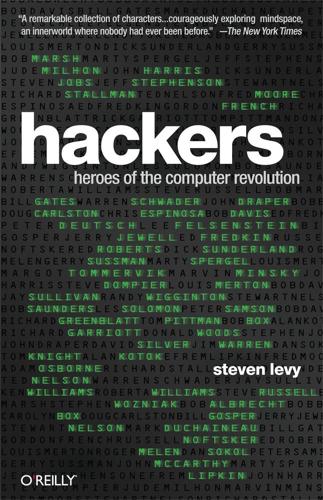
Hackers: Heroes of the Computer Revolution - 25th Anniversary Edition
by
Steven Levy
Published 18 May 2010
It took a while for him to see how computers could be used for social good, and each time he glimpsed the possibilities he suspected betrayal. One interesting project he’d been involved with was the World game. A group of California programmers, philosophers, and engineers constructed a simulation of the world. It was based on an idea by Buckminster Fuller, where you could try out all sorts of changes and see their effect on the world. For days, people ran around suggesting things and running the game on the computer. Not much came of it in terms of suggestions on how to run the world, but a lot of people met others with similar views. Not long afterward, Efrem stumbled upon Resource One, with Lee mired in its bowels.
…
Albrecht was involved in starting the loosely run “computer education division” of the nonprofit foundation called the Portola Institute, which later spawned the Whole Earth Catalog. He met a teacher from Woodside High School on the peninsula, named LeRoy Finkel, who shared his enthusiasm about teaching kids computers; with Finkel he began a computer-book publishing company named Dymax, in honor of Buckminster Fuller’s trademarked word “dymaxion,” combining dynamism and maximum. The for-profit company was funded by Albrecht’s substantial stock holdings (he had been lucky enough to get into DEC’s first stock offering), and soon the company had a contract to write a series of instructional books on BASIC. Albrecht and the Dymax crowd got hold of a DEC PDP-8 minicomputer.
…
He took a few extra chips along with him, and traded the chips with others, eventually winding up with a keyboard and a few RAM chips. “We’re talking outright thievery,” he later explained; but in Homebrew terms, Sokol was liberating a neat hack from the proprietary oppressors. Pong was neat, and should belong to the world. And in Homebrew, exchanges like that were free and easy. Years earlier, Buckminster Fuller had developed the concept of synergy—the collective power, more than the sum of the parts, that comes of people and/or phenomena working together in a system—and Homebrew was a textbook example of the concept at work. One person’s idea would spark another person into embarking on a large project, and perhaps beginning a company to make a product based on that idea.
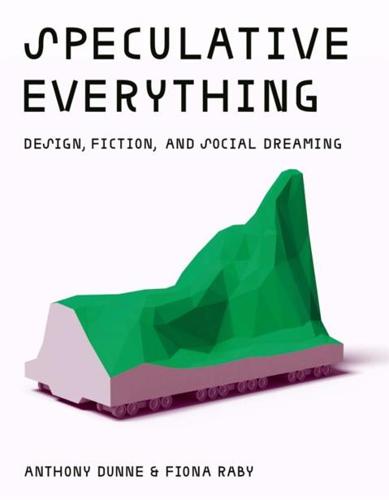
Speculative Everything: Design, Fiction, and Social Dreaming
by
Anthony Dunne
and
Fiona Raby
Published 22 Nov 2013
Vehicle design, too, has a strong tradition of concept cars designed to be displayed in shows to communicate future design directions and gauge customer reaction. Roland Barthes's famous essay celebrating the Citroen DS in Mythologies captures the magic of these visions at their high point. Buckminster Fuller's 1930s prototype Dymaxion car promoted new ways of thinking about safety and aerodynamics. More recent studies have focused on style and imagery; Marc Newson's 027C (1999) for Ford aimed to introduce new cultural references to car design, and Chris Bangle's GINA (2008) concept car for BMW suggested replacing current materials with futuristic shape-shifting materials that adjust the car's aerodynamics on the move.
…
BIG DESIGN: THINKING THE UNTHINKABLE Although inspirational, these externalized dreams and fantasies are still quite modest in scale-a disadvantage of working outside official systems, semiunderground, or in the privacy of one's home or studio. There are also dreamers working within the system of industry, funding organizations, universities, and markets, who are attempting to imagine a better world for all, even if sometimes they might reflect their own personal obsessions. Buckminster Fuller would usually spring to mind as an example of this but his visions are a little too technological and rational for us. Norman Bel Geddes, however, mixed modern, everyday technologies with dreams, fantasy, and the irrational. He went well beyond problem solving, using design to give form to dreams.

Reset
by
Ronald J. Deibert
Published 14 Aug 2020
And if the global pandemic showed us anything, it is that the “public” is now truly planetary in scope and scale. Thanks to hundreds of years of modern industrial technological development, we now live in a “global village” (to borrow McLuhan’s phrasing).397 There’s no turning back. Complex interdependence binds us together in a single habitat that systems theorist and futurist Buckminster Fuller once aptly called “Spaceship Earth.”398 We’re in this together, for better or for worse. Detachment and retreat also ignore or at least slight the many positive uses of digital technologies, social media included. In spite of disinformation and overreaching surveillance, social media have proven highly useful for many problems.
…
We need an open and secure means of communicating globally in order to manage our planet and our collective affairs. It is just that the current design for it, based around personal data surveillance, is counterproductive to those aims. Outright rejection of social media is thus both undesirable and futile. Harkening back to Buckminster Fuller, we do indeed live in Spaceship Earth, but we are stuck with a poorly designed operating manual. * * * Then there are the proposals that advocate for some variation of “reform” — that is, adjustments to one or another element of social media’s business practices. Reform proposals range along a spectrum from minor to major adjustments and lesser to greater degrees of formal government intervention.
…
Random House; Mumford, L. (1970). The pentagon of power: The myth of the machine. Vol. 2. Harcourt Brace Jovanovich. We now live in a “global village” (to borrow McLuhan’s phrasing): McLuhan, M. (1962). The Gutenberg galaxy: The making of typographic man. University of Toronto Press. A single habitat that … Buckminster Fuller once aptly called “Spaceship Earth”: Fuller, R. B. (1969). Operating manual for spaceship Earth. Southern Illinois University Press. Facebook refers cases to the board, whose decisions are binding but not enforced by law: Douek, E. (2020, May 11). “What kind of oversight board have you given us?”
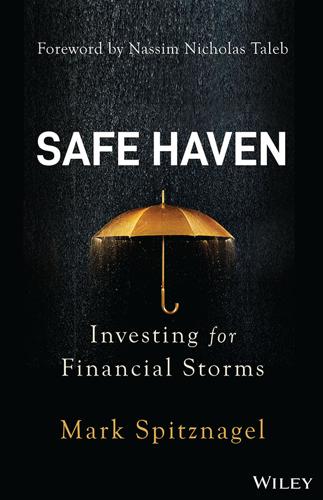
Safe Haven: Investing for Financial Storms
by
Mark Spitznagel
Published 9 Aug 2021
The bigger the crash‐bang‐for‐the‐buck, the less is needed—and the less its potential drag or cost when it isn't needed. It just waits in the wings, almost unnoticed, with hardly any appreciable cost burden. But when it kicks in, it produces an explosive return that more than makes up for its small cost—many, many times over. It's like that 1960s‐era slogan “More with less,” most notably from the futurist Buckminster Fuller (of geodesic dome fame). He called it ephemeralization to the limit, as in “more and more with less and less until eventually you can do everything with nothing.” His industrial designs followed this concept as well. (Fuller loved our disdyakis triacontahedron, which he employed in his geodesic domes.
…
Alas, all along he could not see the real picture. Nietzsche held a curious belief that “merchant and pirate were for a long period one and the same person,” as “mercantile morality is really nothing but a refinement of piratical morality.” If only our merchant had a little more of Nietzsche's piratical morality—better yet of Buckminster Fuller's. Then he would have seen that the solution was right under his nose all along. But it wasn't his elaborate navigational charts that were his treasure map; rather, it was Bernoulli's logarithmic map. Our merchant lived through enough of the agony and the ecstasy, the costly lost cargos, and the profitable successful ones.

The Uninhabitable Earth: Life After Warming
by
David Wallace-Wells
Published 19 Feb 2019
There is not much carbon in the air, all told, just 410 parts per million, but it is everywhere, and so relying on carbon capture globally could require large-scale scrubbing plantations nearly everywhere on Earth—the planet transformed into something like an air-recycling plant orbiting the sun, an industrial satellite tracing a parabola through the solar system. (This is not what Barbara Ward or Buckminster Fuller meant by “spaceship earth.”) And while advances are sure to come, bringing costs down and making more efficient machines, we can’t wait much longer for that progress; we simply don’t have the time. One estimate suggests that, to have hopes of two degrees, we need to open new full-scale carbon capture plants at the pace of one and a half per day every day for the next seventy years.
…
There will be those, as there are now, who insist that there is only one way to respond to the unfolding ecological catastrophe—one productive way, one responsible way. Presumably, it won’t be only one way. Even before the age of climate change, the literature of conservation furnished many metaphors to choose from. James Lovelock gave us the Gaia hypothesis, which conjured an image of the world as a single, evolving quasi-biological entity. Buckminster Fuller popularized “spaceship earth,” which presents the planet as a kind of desperate life raft in what Archibald MacLeish called “the enormous, empty night”; today, the phrase suggests a vivid picture of a world spinning through the solar system barnacled with enough carbon capture plants to actually stall out warming, or even reverse it, restoring as if by magic the breathability of the air between the machines.
…
James Lovelock: His “The Quest for Gaia” was first published in New Scientist in 1975, and over the years Lovelock became less and less sanguine. In 2005, he published Gaia: Medicine for an Ailing Planet, in 2006 The Revenge of Gaia, and in 2009 The Vanishing Face of Gaia. He has also advocated geoengineering as a last-ditch effort to stop climate change. “spaceship earth”: Buckminster Fuller popularized the term, but it appeared originally almost a century before him, in Henry George’s 1879 work Progress and Poverty—in a passage later summarized by George Orwell in The Road to Wigan Pier: The world is a raft sailing through space with, potentially, plenty of provisions for everybody; the idea that we must all cooperate and see to it that everyone does his fair share of the work and gets his fair share of the provisions seems so blatantly obvious that one would say that no one could possibly fail to accept it unless he had some corrupt motive for clinging to the present system.
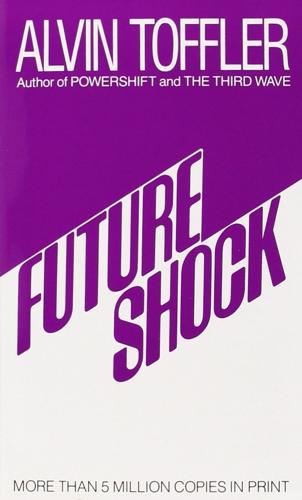
Future Shock
by
Alvin Toffler
Published 1 Jun 1984
Comments on FUTURE SHOCK C. P. Snow: "Remarkable ... No one ought to have the nerve to pontificate on our present worries without reading it." R. Buckminster Fuller: "Cogent ... brilliant ... I hope vast numbers will read Toffler's book." Betty Friedan: "Brilliant and true ... Should be read by anyone with the responsibility of leading or participating in movements for change in America today." Marshall McLuhan: "FUTURE SHOCK ... is 'where it's at.'" Robert Rimmer, author of The Harrad Experiment: "A magnificent job ... Must reading." John Diebold: "For those who want to understand the social and psychological implications of the technological revolution, this is an incomparable book."
…
Less patrician New Yorkers, whose ancestors landed in America more recently, arriving there from the barrios of Puerto Rico, the villages of Eastern Europe or the plantations of the South, might voice their feelings quite differently. Yet the "Vanishing past" is a real phenomenon, and it is likely to become far more widespread, engulfing even many of the history-drenched cities of Europe. Buckminster Fuller, the designer-philosopher, once described New York as a "continual evolutionary process of evacuations, demolitions, removals, temporarily vacant lots, new installations and repeat. This process is identical in principle to the annual rotation of crops in farm acreage—plowing, planting the new seed, harvesting, plowing under, and putting in another type of crop ...
…
Figuratively, we "use up" places and dispose of them in much the same that we dispose of Kleenex or beer cans. We are witnessing a historic decline in the significance of place to human life. We are breeding a new race of nomads, and few suspect quite how massive, widespread and significant their migrations are. THE 3,000,000-MILE CLUB In 1914, according to Buckminster Fuller, the typical American averaged about 1,640 miles per year of total travel, counting some 1,300 miles of just plain everyday walking to and fro. This meant that he traveled only about 340 miles per year with the aid of horse or mechanical means. Using this 1,640 figure as a base, it is possible to estimate that the average American of that period moved a total of 88,560 miles in his lifetime.* Today, by contrast, the average American car owner drives 10,000 miles per year—and he lives longer than his father or grandfather.
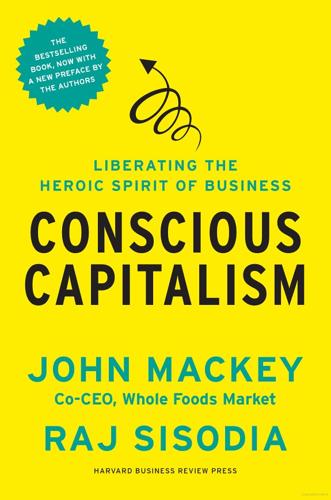
Conscious Capitalism, With a New Preface by the Authors: Liberating the Heroic Spirit of Business
by
John Mackey
,
Rajendra Sisodia
and
Bill George
Published 7 Jan 2014
It creates value for the giver and the recipient, as well as for the larger community. Servant leaders cultivate the noble virtue of generosity. They embrace transpersonal values—such as goodness, justice, truth, love, the alleviation of suffering, the salvation or enlightenment of others—that lift them to higher levels of consciousness.8 The story of Buckminster Fuller provides a great illustration of the power of servant leadership. At age thirty-two, Fuller was living in low-income public housing in Chicago. His daughter had recently died from polio and spinal meningitis. Fuller was drinking heavily, chronically depressed, and seriously considering committing suicide.
…
He would begin “an experiment, to determine how much a single individual could contribute to changing the world and benefiting all humankind.”9 The answer, it turns out, is “quite a lot.” Over the next fifty-five years until his death, he patented over two thousand inventions, wrote twenty-five books, and went down in history as one of the greatest thinkers, inventors, and servant leaders who ever lived. The Buckminster Fuller game of doing as much good as possible to benefit the world is a game we can all play. Servant leaders show us how to do exactly this.10 Integrity: The Synthesis of the Virtues Perhaps the most important virtue of conscious leaders is integrity. Honesty is often used as a synonym for integrity, but integrity is a more comprehensive virtue because, while it is partly about honesty, it goes beyond just telling the truth.
…
Danah Zohar and Ian Marshall, Spiritual Capital: Wealth We Can Live By (San Francisco: Berrett-Koehler, 2004), 3. 5. John A. Byrne, World Changers: 25 Entrepreneurs Who Changed Business as We Knew It (New York: Portfolio/Penguin, 2011), 52. 6. We first heard this articulated by Debashis Chatterjee. 7. Liu, Conversations on Leadership. 8. Zohar and Marshall, Spiritual Capital, 55. 9. Wikipedia, s.v. “Buckminster Fuller,” last modified June 18, 2012, http://en.wikipedia.org/wiki/Buckminister_Fuller. 10. The best book we are aware of on servant leadership is still the one that identified it originally: Robert K. Greenleaf, Servant Leadership: A Journey into the Nature of Legitimate Power and Greatness (New York: Paulist Press, 1977). 11.

Dawn of the New Everything: Encounters With Reality and Virtual Reality
by
Jaron Lanier
Published 21 Nov 2017
I became convinced our home should be made of spherical structures resembling those found in plants. Ellery said he thought I might enjoy another book, in that case. This turned out to be a roughly designed publication in the form of an extra-thick magazine called Domebook. It was an offshoot of Stewart Brand’s Whole Earth Catalog.5 Buckminster Fuller had been promoting geodesic domes as ideal structures, and they embodied the techie utopian spirit of the times. Initially I was skeptical of going geodesic. “I don’t want our house to be like any other house, and other people are building geodesic domes,” I complained. Ellery argued that I’d have to get approval from the authorities to build a design, and a few geodesic domes were already standing in hippie enclaves in the same county.
…
It was easy to be invited to an event in an amazing home, perhaps a renovated old prospector’s shack by a stream way up high in the redwood forests, to hear tales about how flying saucers, chanting, LSD, unconventional sex, or other exotica would save the soul and the world. A fair number of these events had a technological fetish, even so long ago. The points of tech culture reference were different. Idealist techies might have been enchanted by Buckminster Fuller and his notion of world games, or of the Allende regime’s lost cause to create a cyber-Marxist utopia in Chile. This was the circuit in which I started to give talks. I hadn’t thought I was the kind of person who would enjoy speaking to an audience, but a public persona started to pop up within me like a baby desert plant that hides for years, only to reveal itself for the first time after a big rain.
…
Chapter 3 1. Harold Scott MacDonald “Donald” Coxeter was the great geometer of the twentieth century. He explored the majestic domain of symmetrical forms of which geodesic domes are only a first peek. Aside from his stature in mathematics, he directly inspired not only geodesic dome architect Buckminster Fuller, but the artist M. C. Escher. 2. Bateson was an anthropologist as well as one of the most prominent philosophers of cybernetics. I can’t possibly summarize his work here, but I will say that he charted a way out of the terrifying vision revealed by Wiener. He suggested a humble approach to technology, in which people don’t think of themselves as being placed above nature, but embedded within a larger system. 3.

What Technology Wants
by
Kevin Kelly
Published 14 Jul 2010
Genetics, 180 (1). http://www.genetics.org/cgi/content/abstract/180/1/431. 127 “all outcomes would be different”: Sean Carroll. (2008) The Making of the Fittest: DNA and the Ultimate Forensic Record of Evolution. New York: W. W. Norton. 128 precisely, but elegantly, backward: Stephen Jay Gould. (1989) Wonderful Life: The Burgess Shale and Nature of History. New York: W. W. Norton, p. 320. 128 Buckminster Fuller once said: Richard Buckminster Fuller, Jerome Agel, et al. (1970) I Seem to Be a Verb. New York: Bantam Books. 7. Convergence 132 strung across our countryside: Christopher A. Voss. (1984) “Multiple Independent Invention and the Process of Technological Innovation.” Technovation, 2 p. 172. 132 “claimed by more than one person”: William F.
…
And the human organism even more so, because among all living beings (that we know about) we are the most open-ended. We have just started our evolution as Homo sapiens. As both parent and child of the technium—evolution accelerated—we are nothing more and nothing less than an evolutionary ordained becoming. “I seem to be a verb,” the inventor/philosopher Buckminster Fuller once said. We can likewise say: The technium is a tendency, not an entity. The technium and its constituent technologies are more like a grand process than a grand artifact. Nothing is complete, all is in flux, and the only thing that counts is the direction of movement. So if the technium has a direction, where is it pointed?

Supertall: How the World's Tallest Buildings Are Reshaping Our Cities and Our Lives
by
Stefan Al
Published 11 Apr 2022
For instance, people can also feel comfortable through a breeze, even when the room temperature may be relatively warm. This offered an alternative to air-conditioning, such as natural ventilation. The most futuristic of solar home creations came from the hands of American architect and inventor Buckminster Fuller. Out of frustration with inefficient homes, in the 1940s he designed a mobile mass-produced house, the Dymaxion Dwelling Machine, with an environmentally friendly footprint. Shaped like an aluminum spaceship, it was heated and cooled by natural methods. A vent protrudes from the domed roof, shaped to induce a heat-driven vortex sucking air.
…
“The Challenge: Tall and Super-Tall Buildings: HVAC,” Consulting Specifying Engineer Magazine, July 28, 2014, accessed April 19, 2020, https://www.csemag.com. 23.Carly Fordred, “A Tall Order,” HVAC&R Nation, March 2010. 24.John Robert, “City Planning in Frankfurt, Germany, 1925–1932: A Study in Practical Utopianism,” Journal of Urban History, November 1, 1977. 25.Donald Aitken, “The ‘Solar Hemicycle’ Revisited: It’s Still Showing the Way,” Wisconsin Academy Review 39, no. 1 (1992–93): 33–37. 26.Buckminster Fuller, “The Case for a Domed City,” St Louis Post-Dispatch, September 26, 1965. 27.“Steve Rose. “‘His Inner Circle Knew about the Abuse’: Daniela Soleri on Her Architect Father Paolo,” The Guardian, February 29, 2020. 28.Saskatchewan Research Council, “A Closer Look at the Saskatchewan Conversation House and Four Others,” April 17, 2018.

The Stack: On Software and Sovereignty
by
Benjamin H. Bratton
Published 19 Feb 2016
In the depiction of this incipient megastructure, we can see not just new machines but also still-embryonic geopolitical institutions and social systems as well. For these, The Stack is powerful and dangerous, both remedy and poison, a utopian and dystopian machine at once (it can go either way, and as Buckminster Fuller said, it will be touch and go until the last instant). As a model, The Stack is simultaneously a portrait of the system we have but perhaps do not recognize, and an antecedent of a future territory, and with both at hand, we hope to prototype the alien cosmopolitanisms these engender for us and suggest to us.
…
Water has no nationality, but riverbeds are sovereign territories, we cannot allow polluted water from other nation-states to enter our country.”13 This is an amazingly succinct rehearsal of the older European nomos's juridical separation of land and sea, fixed and liquid, made into parable.14 While Fang likely was not familiar with Buckminster Fuller's admonition that “the fearful sovereign nation politicos will find that trying to arrest networking is like trying to arrest the waves of the ocean,” Fuller, it is more certain, was never given the assignment, as Fang was, of building a glass dome for a billion Internet users.15 Shifting the figure of water from a metaphor to geography, consider that for Schmitt's history of the nomos (that is, Carl Schmitt, not Eric Schmidt), the territorial domain of nations was always defended by the naval capacity over the omnidirectional glacis of the ocean in light of Google's filed patent on water-based data centers.16 This floating cyberinfrastructure would, in principle, greatly reduce the energy and cooling costs of hosting and serving the peta- and exabytes of data that will constitute an eventual planetary cloud computing platform.
…
See Jin Ge, “The Father of China's Great Firewall Re-defines Internet Sovereignty,” http://www.88-bar.com/tag/sovereign-internet/. Thanks to Tricia Wang for alerting me to this quote. 14. See Xu Wu, Chinese Cyber Nationalism: Evolution, Characteristics, and Implications (Lanham, MD: Lexington Books, 2007). 15. R. Buckminster Fuller, Grunch of Giants (New York: St. Martin's Press, 1983). 16. Katie Fehrenbacher, “Google Floats Idea of Wave Powered Data Center,” Gigaom, September 8, 2008, https://gigaom.com/2008/09/08/google-floats-idea-of-wave-powered-data-center/, and “Google to Switch on Seawater-Cooled Data Center This Fall,” Gigaom, May 24, 2011, https://gigaom.com/2011/05/24/google-to-switch-on-worlds-first-seawater-cooled-data-center-this-fall/.

The Innovators: How a Group of Inventors, Hackers, Geniuses and Geeks Created the Digital Revolution
by
Walter Isaacson
Published 6 Oct 2014
Instead of deploring computers as tools of the old power structure, he argued that they could aid the shift in social consciousness if they were made more personal: “The machine, having been built, may now be turned to human ends, in order that man once more can become a creative force, renewing and creating his own life.”9 A technotribalism began to emerge. Tech gurus such as Norbert Wiener, Buckminster Fuller, and Marshall McLuhan became required reading in communes and dorms. By the 1980s the LSD evangelist Timothy Leary would update his famous mantra “Turn on, tune in, drop out” to proclaim instead “Turn on, boot up, jack in.”10 Richard Brautigan was the poet-in-residence in 1967 at Caltech, and that year he captured the new ethos in a poem, “All Watched Over by Machines of Loving Grace.”11 It began: I like to think (and the sooner the better!)
…
“The Trips Festival marked Stewart Brand’s emergence as a countercultural entrepreneur—but in a deeply technocratic mold,” wrote the cultural historian Fred Turner.17 A month after the Trips Festival, in February 1966, Brand was sitting on his gravelly rooftop in San Francisco’s North Beach enjoying the effects of 100 micrograms of LSD. Staring at the skyline, he ruminated on something that Buckminster Fuller had said: our perception that the world is flat and stretches indefinitely, rather than round and small, is because we have never seen it from outer space. Abetted by the acid, he began to grok the smallness of the earth and the importance of other people appreciating that as well. “It had to be broadcast, this fundamental point of leverage on the world’s ills,” he recalled.
…
Brand wrote on the first page of the first edition, “A realm of intimate, personal power is developing—power of the individual to conduct his own education, find his own inspiration, shape his own environment, and share his adventure with whoever is interested. Tools that aid this process are sought and promoted by the Whole Earth Catalog.” Buckminster Fuller followed with a poem that began, “I see God in the instruments and mechanisms that work reliably.” The first edition featured such items as Norbert Wiener’s book Cybernetics and a programmable HP calculator, along with buckskin jackets and beads. The underlying premise was that a love of the earth and a love of technology could coexist, that hippies should make common cause with engineers, and that the future should be a festival where a.c. outlets would be provided.20 Brand’s approach was not New Left political.
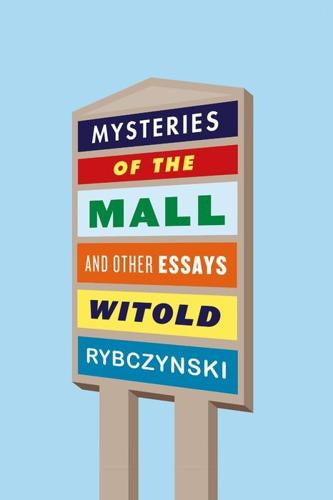
Mysteries of the Mall: And Other Essays
by
Witold Rybczynski
Published 7 Sep 2015
One entry mysteriously linked Cabrini-Green to the tidal cycles of Lake Michigan, another incorporated an amusement park into the public housing project, yet another nastily suggested “circling the wagons for safety” by creating fortresslike housing structures surrounded by masts with batteries of high-intensity spotlights. One designer, apparently a devotee of Buckminster Fuller, produced a solution to low-income housing based on prefabricated concrete spheres: the houses resembled lightbulbs. The winning project was the work of two assistant professors of architecture at North Dakota State University in Fargo and a newly graduated student. Jim Nelson, Don Faulkner, and Larry Carcoana’s proposal brims with midwestern good sense.
…
Thus far at least, the residential work remains stylistically traditional, although a number of apartment interiors have been modernist, and with Stern you never know. A Humble Architect Montreal’s Expo 67 was the last world’s fair where architects were treated as stars. The two most impressive national pavilions were Frei Otto’s tentlike West German pavilion and Buckminster Fuller’s U.S. pavilion, a large geodesic dome. Arthur Erickson’s delicate wood pyramid housing Man and Health made up for the rather lackluster Canadian pavilion. But the brightest star at Expo was a newcomer, Moshe Safdie, a twenty-eight-year-old Israeli-born Canadian who, according to legend, had turned his student thesis into the fair’s most striking attraction.

Memory Machines: The Evolution of Hypertext
by
Belinda Barnet
Published 14 Jul 2013
They cover the ELF design, Xanadu, StretchText and Nelson’s screen-based graph display idea. Nelson didn’t want to hover around in the background watching the team build a part of his vision; he wanted the design to be produced as faithfully as possible. ‘Let’s put it this way: I feel that van Dam should have treated me the way he would have treated Buckminster Fuller if he’d asked Buckminster Fuller to come in’ (Nelson 2011). That didn’t happen. As observed previously, van Dam and his team wanted to explore the hypertext concept, but they also had their own plans (which Nelson strenuously opposed). The team set out to design a dual-purpose system for authoring, editing and printing text documents, which could also be used to browse and query written materials nonsequentially.

The Great Wave: The Era of Radical Disruption and the Rise of the Outsider
by
Michiko Kakutani
Published 20 Feb 2024
Today, as we contend with increased polarization and partisanship, parallels with the early era of the printing press serve as a reminder that we’ve contended with similar difficulties in the past and eventually found mechanisms (like journalistic fact-checking and the peer-review process for scientific publications) that, however inadequate, provide at least some means of grappling with the mayhem created by new technologies. * * * — That said, several factors complicate matters today. To begin with, there’s the astonishing explosion of information: Back in 1982, Buckminster Fuller estimated that until 1900 human knowledge doubled approximately every century, but by 1945 was doubling every twenty-five years, and by 1982 every twelve or so months. Today, by one estimate, it is doubling every twelve hours. This explosion in data points is not unlike the explosion in the number of stars we can see with a little optical assistance.
…
Freedom is the continuous action we all must take.” Chapter 6 OUTLAW NATION: America’s Love-Hate Affair with Outsiders … An outlaw can be defined as somebody who lives outside the law, beyond the law and not necessarily against it. —Hunter S. Thompson All human advances occur in the outlaw area. —Buckminster Fuller In the mid-1960s, network TV was suddenly awash in what scholars would later call “supernatural sitcoms.” My Favorite Martian featured an anthropologist from Mars who crash-lands in Los Angeles and hides out at a newspaper reporter’s apartment while he tries to repair his spacecraft. Mister Ed starred a talking horse who only speaks to his bumbling owner, Wilbur, and constantly gets him in trouble.
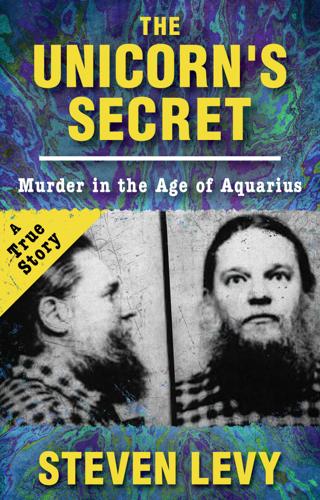
The Unicorn's Secret
by
Steven Levy
Published 6 Oct 2016
“There were several hundred fat Jews with beards that I got confused with constantly,” Ginsberg says of those times.) In a sense, Einhorn was venturing far beyond the anarchist Yippie Movement; he was applying educated analysis of the world in terms of systems. Kiyoshi Kurimaya, a founder of Penn’s Free University and later an editor of Buckminster Fuller’s writings, claims that Ira was a master teacher for that very reason: “Ira seemed to have a complete system. He had a unique analysis of world events and contemporary culture that was not available in any other source that I had come in contact with. And they were ideas that were later confirmed through study, sometimes a year later, and sometimes ten years later.”
…
When Librach appeared, he was thrown immediately off balance. For one thing, the apartment seemed to be some sort of weird communal arrangement where an unclear number of adults came and went at will. For another thing, the walls of the place were filled with bookshelves—but the shelves were empty except for one book. Its author was Buckminster Fuller, and Ira held up the book and told Librach that “Everything is in here. This is philosophy, this is history, this is art, this one book has it all.” When Ira Einhorn offered Librach some banana bread, he accepted it with dread, hoping that some hallucinogenic drug was not among the ingredients.
…
The latter was no small factor in Ira Einhorn’s campaign to lose—he never pretended otherwise—the Democratic nomination for mayor. “Publicity helps me to create a myth about me and I have to use that myth to do what I have to get done,” he explained to Philadelphia Magazine. At the time, Ira was hanging out with an informal aggregation that called itself The Synergy Group, in honor of Buckminster Fuller’s philosophies. The idea was to generate energies to strengthen community, particularly an undeveloped area on South Street, just below the city’s historic area. Synergy’s dominant personalities were Curt Kubiak, whom Ira had been close with since the Free University, and Tom Bissinger, a bean pole–slim playwright who had recently been in charge of the avant garde Philadelphia Theater of the Living Arts.
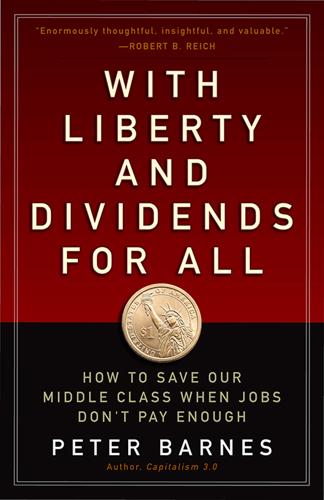
With Liberty and Dividends for All: How to Save Our Middle Class When Jobs Don't Pay Enough
by
Peter Barnes
Published 31 Jul 2014
And third, though recycled rent requires government action to get started, it has the political virtue of avoiding the bigger/smaller government tug-of-war that paralyzes Washington today. It is, after all, property income that doesn’t enlarge government. It could therefore appeal to, or at least not offend, voters and politicians in the center, left, and right. A TRIM TAB IS A TINY FLAP ON A SHIP or airplane’s rudder. The designer Buckminster Fuller often noted that moving a trim tab slightly turns a ship or a plane dramatically. If we think of our economy as a moving vessel, the same metaphor can be applied to rent. Depending on how much of it is collected and whether it flows to a few or to many, rent can steer an economy toward extreme inequality or a large middle class.

Beyond: Our Future in Space
by
Chris Impey
Published 12 Apr 2015
The ability to manipulate matter at the level of atoms or molecules opened up new technologies and a dizzying array of potential new applications. Some of the most exciting materials were made of pure carbon. Fullerenes are carbon molecules in the form of spheres, tubes, and other shapes. The name is a nod to the architect and designer Buckminster Fuller, since the first of the new molecules to be created was a tiny spherical cage made of sixty carbon atoms, resembling one of Fuller’s geodesic domes. Soon after buckyballs were isolated, scientists learned how to create carbon nanotubes, interlinked carbon atoms rolled in a cylinder a millionth of a meter across.
…
Their mission was to live in a self-sustaining environment for two years, as a prototype of how humans might one day live on Mars, or in space.1 Texas billionaire Ed Bass sank $150 million into the project, and it was variously characterized in the press as a utopian dream or a rich man’s folly. The occupants wore jumpsuits out of Star Trek—which, depending on your point of view, made them look like either consummate professionals or inmates at a county jail. Few had serious scientific credentials. The soaring architecture was inspired by Buckminster Fuller’s geodesic domes, but there was also a darker backstory associated with founder John Allen, who ran a commune in New Mexico that had the trappings of a cult. Allen was a metallurgist and Harvard MBA who experimented with peyote and spent the late 1960s lecturing in San Francisco’s Haight-Ashbury district.

The Buddha and the Badass: The Secret Spiritual Art of Succeeding at Work
by
Vishen Lakhiani
Published 14 Sep 2020
And together you bend reality with more force than one person ever could alone. “I’ll Drain Brains from Other Countries” One sleepless night it hit me. What if I could create a workplace so attractive that talent from around the world would willingly relocate to Malaysia and help me build my dream company? In my head, a Buckminster Fuller quote was on replay. Bucky once said: You never change things by fighting the existing reality. To change something, build a new model that makes the existing model obsolete. This vision of building a new type of business, the World’s Greatest Workplace, fueled me. And it wasn’t going to be in New York, or Silicon Valley, or London or Berlin, or in any of the world’s most popular cities.
…
To the teachers who provided wisdom for this book: Drima Starlight, for being pivotal in the early days of Mindvalley and for your values process that has been key to our continued success and now the success of countless others; Cameron Herold, for your Vivid Visioning technique that took my business to new heights; Srikumar Rao, for your sage wisdom, mentorship, and support through the highs and lows; Lisa Nichols, for believing in me early on, and for your friendship and partnership in the field of personal growth; Reverend Michael Beckwith, for your spiritual guidance, your Life Visioning process, and your commitment to transformation on the planet; Naveen Jain, for blowing me away with your moonshot ideas that have expanded the way I think I run my business; Richard Branson, for suggesting I write the first book that led to this book and for inviting me to mastermind with you on Necker, and being an example of how business and life can flow together with ease; Bob Proctor, for kicking my butt and getting me to think better; Ken Wilber, for being the Father of Integral Theory whose models have shaped me, my work, and many of the ideas in this book; Tim Urban, for your genius blog that tackles the most relevant topics the world needs to know about in a way that’s witty and engaging; Tom Chi, for your stand for humanity and for setting an example for how leaders should conduct themselves in business; John Ratcliff, for inspiring other leaders to truly see their people with your Dream Manager program; Daniel Pink, for your commitment to compassionate leadership and teams that thrive; Patty McCord, for reminding the world that people are already leaders the moment they walk in a door; Elon Musk, for being a trailblazer who sets an impeccable standard for how to think ten years ahead; Barack Obama, for your mentorship and inspiration; Larry Page, for sharing the OKR system that’s transformed how we work at Mindvalley; Doug McGuff, for your super slow training, and helping me reverse my biological age; Simon Sinek, for emphasizing the importance of sharing your why; Jim Collins for encouraging me to get the right people on my bus. To the thought leaders who are no longer with us but who have influenced my life and the ideas in this book: Buckminster Fuller, for showing me how to tackle impossible problems; Terrence McKenna, for your stand for people living self-expressed lives, for your mind-bending wisdom, and for contributing to my worldview; Rumi, for your spiritual guidance and your poems that have stuck with me and shaped the way I work; Martin Luther King Jr., for inspiring us all to live bravely; and Abraham Maslow, for revolutionizing the field of human psychology with your Hierarchy of Needs.

The new village green: living light, living local, living large
by
Stephen Morris
Published 1 Sep 2007
” — Nancy Jack Todd Editor, Annals of Earth newsletter “ Hurricane Katrina will be remembered as the most important turning point in the world's awareness and reaction to global warming.” — Jeffrey Hollender President & Chief Inspired Protagonist, Seventh Generation “ We can thank Herman Daly for the concept of full cost accounting, Buckminster Fuller for the power and possibility of thinking differently, and E.F. Schumacher as the father of the act locally/think globally movement.” — Jeffrey Hollender 96 chapter 4 : The End of Nature “ I’ve heard lots of criticism of Al Gore’s film, An Inconvenient Truth, from inside the green movement, but we’re already converted.
…
Earth in the Balance: Ecology and the Human Spirit, by Al Gore. Plume, 1993. The Last Hours of Ancient Sunlight: The Fate of the World and What We Can Do Before It’s Too Late, by Thom Hartmann. Three Rivers Press, 1998. Beyond Growth: The Economics of Sustainable Development, by Herman Daly. Beacon Press, 1992. Critical Path, by Buckminster Fuller. St. Martin’s Press, 1981. The Home Energy Diet: How to Save Money by Making Your House Energy Smart, by Paul Scheckel. New Society Publishers, 2005. The Company We Keep: Reinventing Small Business for People, Community, and Place, by John Abrams. Chelsea Green, 2005. The NEW VILLAGE GREEN 99 5 ONE-STRAW REVOLUTION “ If we throw mother nature out the window, she comes back in the door with a pitchfork.” — Masanobu Fukuoka 100 T he most profound learning experience of my college career was reading Robert Ardrey’s African Genesis: A Personal Investigation into the Animal Origins and Nature of Man, long since out of print, but available, used, on Amazon.

Boom: Bubbles and the End of Stagnation
by
Byrne Hobart
and
Tobias Huber
Published 29 Oct 2024
But it’s also a limiting vision that is more focused on better allocation of existing resources than true innovation. 41 Karl Marx and Frederick Engels, Manifesto of the Communist Party, February 1848, https://www.marxists.org/archive/marx/works/download/pdf/Manifesto.pdf. 42 Almost a century ago, the architect, philosopher, and futurist R. Buckminster Fuller referred to our ability to “do more and more with less and less until eventually you can do everything with nothing” as “ephemeralization.” R. Buckminster Fuller, Nine Chains to the Moon (Carbondale: Southern Illinois University Press, 1963), 272–3. 43 Vaclav Smil, Invention and Innovation, 166–7. 44 Deepak K. Ray et al., “Recent Patterns of Crop Yield Growth and Stagnation,” Nature Communications 3, no. 1 (2012): 1293. 45 Ammous, “Slowdown.” 46 “Government Investment on the Decline,” The FRED Blog, October 18, 2021, https://fredblog.stlouisfed.org/2021/10/government-investment-on-the-decline/. 47 Tim Lee, Jamie Lee, and Kevin Coldiron, The Rise of Carry: The Dangerous Consequences of Volatility Suppression and the New Financial Order of Decaying Growth and Recurring Crisis (New York: McGraw-Hill, 2019). 48 One of the biggest categories of long-lived assets is housing.

The 100 Best Vacations to Enrich Your Life
by
Pam Grout
Published 14 May 2007
HOW TO GET IN TOUCH Theodore Roosevelt Medora Foundation, P.O. Box 198, 301 Fifth Street, Medora, ND 58645, 800-633-6721 or 701-623-4444, www.medora.com. CHAPTER 3 brain retreats I always say to myself, what is the most important thing we can think about in this extraordinary moment? —R. Buckminster Fuller, American visionary, architect, and inventor When you were five, you wanted the answers to everything. You wanted to know where rain came from, why some people were bald, how music came out of that little box called a radio. Back then, it was okay not to know everything. It was perfectly acceptable to ask questions, wonder why, want to know more.
…
They both have incredibly beautiful campuses, workshop leaders that are a veritable who’s who, and a long list of enlightening workshops. Esalen Institute. Perched on a rocky ledge overlooking the Pacific Ocean, this 140-acre institute in Big Sur is where Gestalt therapy guru Frederick “Fritz” Perls coached Rita Hayworth and where Ida Rolf pioneered Rolfing. Joseph Campbell, Buckminster Fuller, and Linus Pauling have all given workshops here. The weathered redwood buildings and geodesic domes sprinkled about the grounds go back to the early 1960s, when Stanford graduate students Michael Murphy and Richard Price gave life to their vision of a sanctuary where thinkers of all stripes—philosophers, psychologists, artists, academics, spiritual leaders—could come together to pursue the “exploration of unrealized human capacities.”
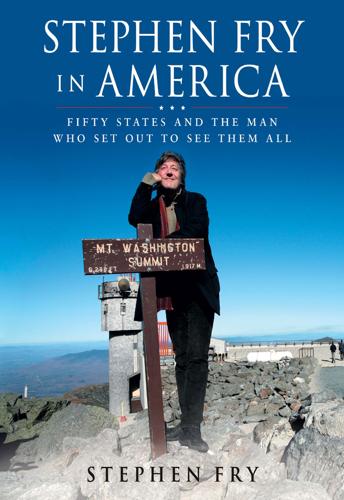
Stephen Fry in America
by
Stephen Fry
Published 1 Jan 2008
Skyscrapers Music is not the only cultural product that Chicago has exported around the world: I will come to that dread bitch, comedy, in a moment, but first it is worth remarking on Chicago’s pre-eminence as a centre of great architecture. Most people who have visited both would agree that the quality of Chicago’s skyscrapers is every bit as good, if not better, than New York City’s. Mies van de Rohe, Frank Lloyd Wright and Buckminster Fuller are just the best-known architects to have lived and worked in Illinois; they and their reputations attracted hundreds of others. From its completion in 1973 until the erection of the Petronas Towers in Kuala Lumpur, the tallest building in the world was the Sears Tower in Chicago’s Loop, the historic heart of downtown.
…
Daley, Adlai Stevenson, Louis Farrakhan, Jesse Jackson, Richard M. Daley, Hillary Clinton, Barack Obama, Al Capone, Frank Nitti, Eliot Ness, Enrico Fermi, Ernest Hemingway, James T. Farrell, David Foster Wallace, John Deere, Marshall Field, Montgomery Ward, Richard Sears, Frank Lloyd Wright, Buckminster Fuller, Mies van de Rohe, Walt Disney, Gregg Toland, Michael Mann, Roger Ebert, Gene Siskel, Jack Benny, Burl Ives, Rock Hudson, Dick van Dyke, Gene Hackman, Richard Pryor, George Wendt, Vince Vaughn, Miles Davis, Muddy Waters, Buddy Guy, Bo Diddley, Herbie Hancock, Alison Krauss, Kanye West, Michael Jordan, Oprah Winfrey, Hugh Hefner, Cindy Crawford
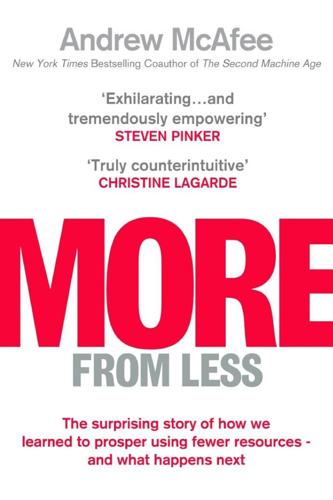
More From Less: The Surprising Story of How We Learned to Prosper Using Fewer Resources – and What Happens Next
by
Andrew McAfee
Published 30 Sep 2019
As one or both of these quests succeeded, Simon reasoned, the original scarcity would be eased, and the resource’s price would go back down. In the most extreme and intriguing case, the substitute for the resource would be… nothing at all. In his 1968 book, Utopia or Oblivion, the architect and inventor R. Buckminster Fuller wrote, “I made many calculations, and it seemed increasingly clear that it was feasible for us to do so much with so little that we might be able to take care of everybody. In 1927 I called this whole process ‘Ephemeralization,’ ” by which he meant satisfying human desires for consumption while using fewer resources from the physical world—fewer molecules, in short.
…
The first Foxfire book sold more than 9 million copies: Tove Danovich, “The Foxfire Book Series That Preserved Appalachian Foodways,” NPR, March 17, 2017, https://www.npr.org/sections/thesalt/2017/03/17/520038859/the-foxfire-book-series-that-preserved-appalachian-foodways. “Are we now ‘entering an age of scarcity’?”: Julian Simon, The Ultimate Resource (Princeton, NJ: Princeton University Press, 1981), 3. “I made many calculations”: R. Buckminster Fuller, Utopia or Oblivion (Zurich: Lars Müller, 1969), 293. “Ephemeralization… is the number one economic surprise of world man”: Ibid., 297. The real price of all five metals had fallen by late September of 1990: Ed Regis, “The Doomslayer,” WIRED, December 15, 2017, https://www.wired.com/1997/02/the-doomslayer-2/.
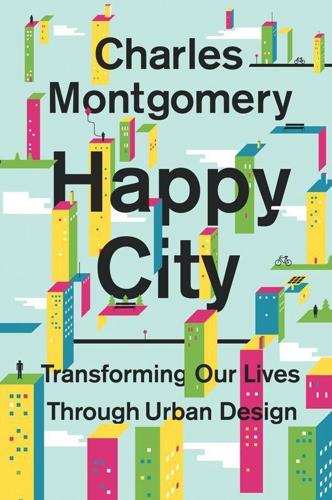
Happy City: Transforming Our Lives Through Urban Design
by
Charles Montgomery
Published 12 Nov 2013
Sometimes it takes a radical shift in the urban imagination to point the way. 9. Mobilicities II Freedom Automobiles are in no way responsible for our traffic problems. The entire responsibility lies in the faulty roads, which are behind the times. —Norman Bel Geddes, 1940 Possession is becoming progressively burdensome and wasteful and therefore obsolete. —Buckminster Fuller, 1969 In 1969 a consortium of European industrial interests charged a young American economist with figuring out how people would move through cities in the future. There was a lot of money to be made by whoever could divine the single technology most likely to capture the market in the coming decades.
…
Become a Fighter Pilot, Not a Commuter,” The Guardian, November 30, 2004, www.guardian.co.uk/uk/2004/nov/30/research.transport (accessed October 06, 2012). “freaks and weirdos”: See http://www.boingboing.net/2003/04/15/gm-apologizes-for-fr.html for correspondence. 9. Mobilicities II: Freedom Norman Bel Geddes: Bel Geddes, Norman, Magic Motorways (New York: Random House, 1940). Buckminster Fuller: Fuller, R. Buckminster, Operation Manual for Spaceship Earth (Carbondale: Southern Illinois University Press, 1969). also its limitations: Evans, Gary, Richard Wener, and Donald Phillips, “The Morning Rush Hour: Predictability and Commuter Stress,” Environment and Behavior, 2002: 521–30. anxiety of waiting: Evans, John E., “Transit Scheduling and Frequency,” in Traveler Response to Transportation System Changes,” TCRP Report 95 (Washington, DC: Transportation Research Board, National Academy Press, 2004.)
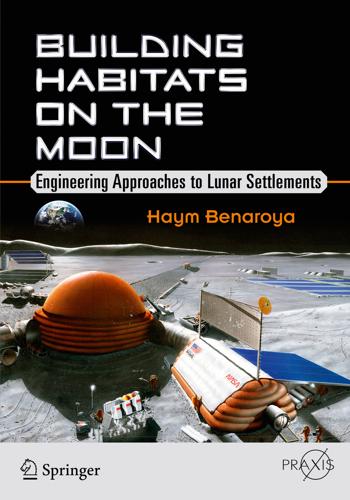
Building Habitats on the Moon: Engineering Approaches to Lunar Settlements
by
Haym Benaroya
Published 12 Jan 2018
John Lewis, author of Mining the Sky and other publications. However stellar the previous ‘influencers’ may be, the prime motivator of my intellectual life, my alpha inspiration, the ‘north star’ of my attitudes, beliefs and feelings about science , technology, nature and philosophy, as well as the ‘mentor’ I always return to, is R. Buckminster (Bucky) Fuller (1895-1983). I met Bucky Fuller briefly twice, once in the late 1960s when I was a college student and once in 1975 while I was still in medical school. In my opinion Bucky Fuller, Gerry O’Neill and perhaps Carl Sagan, whose writings and insights continue to inspire me to this day, were the last visionary geniuses of the 20th century (unfortunately none have appeared yet in the 21st century).
…
The challenge for reliability on Mars is to extend that “three nines” or better for a mission about 30 times longer than the Moon and much greater complexity. Who would you consider as your key influence in your pursuit of space studies? Who inspired you? I suppose I can name a few influences: Buckminster Fuller, Frank Lloyd Wright, Erich Mendelsohn, and other early Modern architects. I wrote about Bucky in my 2014 paper The Continuum of Space Architecture , describing how his reorganization of the Platonic Solids by vertices spurred my analysis for the Triangular-Tetrahedral Space Station configuration. ( 11 ) Of course, the Mercury, Gemini, and Apollo programs played a formative role in my early thinking that the space program was the story of my life.
…
The entrance consists of a separate structure that accommodates an air lock and a storage area for the space suits. Figure 4.23.Layout of Four-Apartment PSSMS. (Courtesy T.Y. Lin International) Moore et al. proposed two inflatable concepts, one based on Chow and Lin, and the other based on the work of Buckminster Fuller. ( 45 ) This conceptual study suggested possible interior configurations for the Chow and Lin structure. TransHab TransHab is a unique hybrid structure that has an inflatable shell surrounding a central hard structure core. ( 46 ) ( 47 ) It has the packaging and mass efficiencies of an inflatable structure, and the advantages of a load -carrying hard structure.
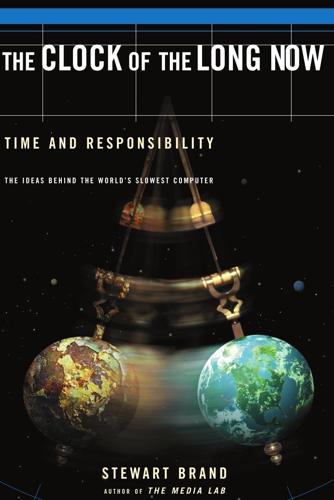
Clock of the Long Now
by
Stewart Brand
Published 1 Jan 1999
My old biology teacher, Paul Ehrlich, has a formula declaring that environmental degradation is proportional to “population times affluence times technology.” It now appears that the coming of information technology is reversing that formula, so that better technology and more affluence leads to less environmental harm—if that is one of the goals of the society. “Doing more with less”—Buckminster Fuller’s “ephemeralization”—is creating vastly more efficient industrial and agricultural processes, with proportionately less impact on natural systems. It is also moving ever more of human activity into an infosphere less harmfully entwined with the biosphere. Given its roots, the Packard Foundation is particularly well suited to evaluate and foster what a Buddhist engineer might call right technology.
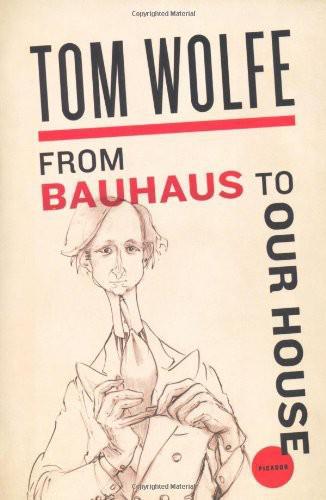
From Bauhaus to Our House
by
Tom Wolfe
Published 2 Jan 1981
Gropius’ own firm in Cambridge was not called Walter Gropius & Associates, Inc., or anything close to it. It was called “The Architects Collaborative.” At Yale the students insisted on a group project, a collaborative design, to replace the obscene scramble for individual glory. NOW, IN THE LATE 1940s AND EARLY 1950s , BUCKMINSTER Fuller came into his own. Fuller was an American designer with an endless stock of ingenious notions, one of which was his geodesic dome, a dome created of thousands of short, thin metal struts arranged in tetrahedra. Fuller’s dome fit in nicely with the modern principle of creating large structures with light surfaces out of machine-made materials and using tensions and stresses to do the work that massive supports had done for the old (bourgeois) order.
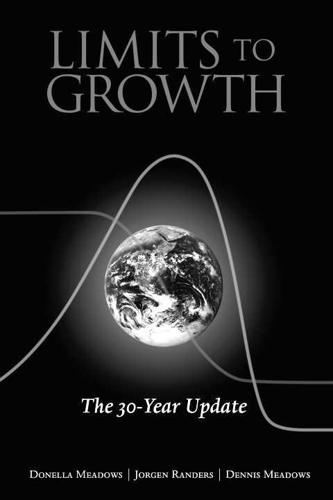
The Limits to Growth: The 30-Year Update
by
Donella H. Meadows
,
Jørgen Randers
and
Dennis L. Meadows
Published 15 Apr 2004
A system cannot function well if its information streams are corrupted by lies. One of the most important tenets of systems theory, for reasons we hope we have made clear in this book, is that information should not be distorted, delayed, or sequestered. `All of humanity is in peril," said Buckminster Fuller, "if each one of us does not dare, now and henceforth, always to tell only the truth and all the truth, and to do so promptly-right now"5 Whenever you speak to anyone, on the street, at work, to a crowd, and especially to a child, you can endeavor to counter a lie or affirm a truth. You can deny the idea that having more things makes one a better person.
…
Examples of networks known to the authors and in their field of interest are the Balaton Group (www.unh.edu/ipssr/Balaton.html), Northeast Organic Farming Association (NOFA), Center for a New American Dream (CNAD; wwwnewdream.org), Greenlist (www.peacestore.us/Public/Greenlist), Greenclips (wwwgreenclips.com), Northern Forest Alliance (wwwnorthernforestalliance.org), Land Trust Alliance (wwwlta.org), International Simulation and Gaming Association (ISAGA; wwwisaga.info), and Leadership for Environment and Development (LEAD). 4. Such an intermediate step is illustrated by ICLEI, an international association of (currently 450) local governments implementing sustainable development. See www.iclei.org. 5. R. Buckminster Fuller, Critical Path (New York: St. Martin's Press, 1981). 6. Abraham Maslow, The Farthest Reaches of Human Nature (New York: Viking Press, 1971). 7. J. M. Keynes, foreword to Essays in Persuasion (New York: Harcourt Brace, 1932). 8. Aurelio Peccei, One Hundred Pages for the Future (New York: Pergamon Press, 1981), 184-185.
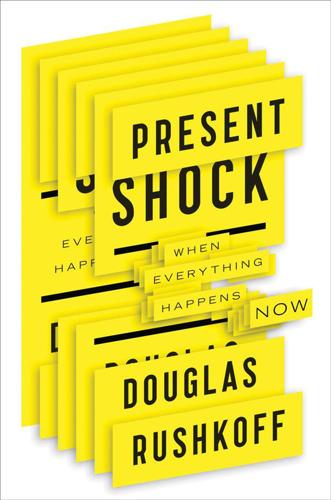
Present Shock: When Everything Happens Now
by
Douglas Rushkoff
Published 21 Mar 2013
Robertson, Natural Prozac: Learning to Release Your Body’s Own Anti-Depressants (New York: HarperOne, 1998). 28. All quotes from Mark Filippi are from interviews I conducted with him in February and March 2012. 29. “Tensegrity” is a term used most famously by Buckminster Fuller to describe the structural integrity of various systems. See R. Buckminster Fuller, “Tensegrity,” 1961, at www.rwgrayprojects.com/rbfnotes/fpapers/tensegrity/tenseg01.html. 30. See http://Lifewaves.com or http://somaspace.org. 31. Steven Johnson, Where Good Ideas Come From (New York: Riverhead, 2010). 32. Kutcher Tweeted in defense of a fired college football coach, only learning later that the coach had covered up a child molestation.
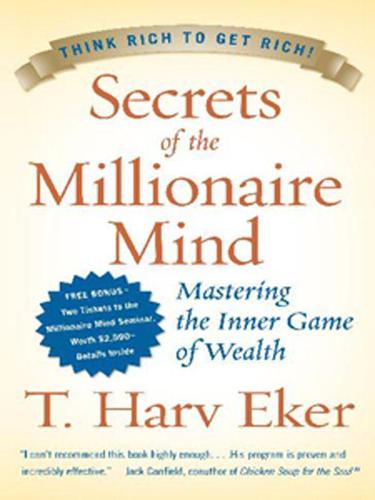
Secrets of the Millionaire Mind
by
T. Harv Eker
Published 15 Feb 2005
Most people are so stuck in their egos that everything revolves around me, me, and more me. But if you want to be rich in the truest sense of the word, it can’t only be about you. It has to include adding value to other people’s lives. One of the greatest inventors and philosophers of our time, Buckminster Fuller, said, “The purpose of our lives is to add value to the people of this generation and those that follow.” We each came to this earth with natural talents, things we’re just naturally good at. These gifts were given to you for a reason: to use and share with others. Research shows that the happiest people are those who use their natural talents to the utmost.
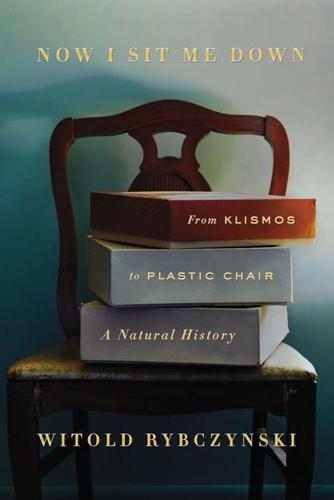
Now I Sit Me Down: From Klismos to Plastic Chair: A Natural History
by
Witold Rybczynski
Published 22 Aug 2016
The owner of DESTA was Anton Lorenz, a significant if somewhat shadowy presence on the Berlin prewar avant-garde furniture scene. Lorenz was neither an architect nor a craftsman; he is sometimes described as a businessman, but he wasn’t exactly that either. In some ways he resembles his contemporary Buckminster Fuller—an inventor-entrepreneur. Born in Budapest, Lorenz accompanied his wife, Irene, an opera singer, to Leipzig. In time, he acquired a metalworking business that made locks. In Berlin, Lorenz met his compatriot Kalman Lengyel and became a partner in Standard Möbel, fabricating Marcel Breuer’s tubular furniture in his workshop.

Fewer, Better Things: The Hidden Wisdom of Objects
by
Glenn Adamson
Published 6 Aug 2018
The sad fact is that, as Adams puts it, “most plastics are just not compatible with life.” As a space architect, Adams is in an unusual position. She does not enter her created microcosms imaginatively, like a child with a dollhouse, but literally, shaping a miniature prototype of our whole planetary situation.9 We are all living, as the visionary scientist Buckminster Fuller used to say, on Spaceship Earth. By understanding the difference between the material environment we actually inhabit and the one we would need in order to survive on Mars, without the abundant resources of our own lushly habitable planet, we may be able to get some measure of the distance between the way we live now and the type of existence that would be permanently sustainable on Earth.

Heaven Is a Place on Earth: Searching for an American Utopia
by
Adrian Shirk
Published 15 Mar 2022
The school was started in 1933 by a bunch of scholarly dropouts and rogue academics of the time—well-connected wild men with big egos and rich friends—and its growth was quickly buttressed by making itself a haven for many Bauhaus artists and scholars fleeing Nazi Germany. Josef and Anni Albers, M. C. Richards, and Heinrich Jalowetz, other famous folks joined the faculty. (Over the years, they’d be joined by Willem de Kooning, Robert Creeley, John Cage, and Buckminster Fuller, among others.) For the first several years, they ran the school out of a giant neoclassical conference center in the mountains called the Blue Ridge Assembly, which was owned by liberal Presbyterians who needed the building only for the summer months. Classes were experimental, free-form, discussion-based, lecture-based, studio-based.
…
The BMC students lived and slept in really tight quarters elsewhere on the campus, in bunkhouses of no fewer than eight people, but everyone had a private studio and workspace of their own guaranteed. As I continued moving down the narrow hallway, slowly, like a ghost, one of the guides gestured out the window, saying that Buckminster Fuller built one of his first geodesic domes just off to the side there, down in the grass. We looked out the window on to nothing, but could imagine it there, a great white polygon structure being gestured to by Fuller himself, that bespectacled, white-haired man in a three-piece suit who ended up so strangely providing the later hippie commune movement with its most enduring architectural symbol.
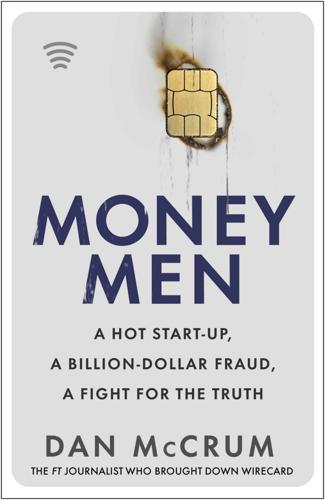
Money Men: A Hot Startup, a Billion Dollar Fraud, a Fight for the Truth
by
Dan McCrum
Published 15 Jun 2022
‘Being successful in payments is a little bit different to being successful in McDonald’s, or a social network. You need a good combination of technology and local flavour, local understanding, local elements,’ Braun said, adding a long list of countries where Wirecard operated. Hoping to spur something quotable, I tried a left-field question about the architect Buckminster Fuller’s geodesic dome. Wirecard’s 2009 annual report had included a whole riff about how Fuller’s design for a spherical building – the best-known of which is Disneyland’s golf ball-like Epcot Center – somehow related to the practice of mergers and acquisitions. There was a baffled silence, then Iris interjected.
…
To find a specific word or phrase from the index, please use the search feature of your ebook reader. 1A Mauritius fund 79–89, 115, 134, 250 advisors’ fees 88 Ernst & Young investigation 135 7995 transaction codes 16, 19, 42, 101 Absolute Poker 30 acai berry sellers 61 Acai Berry King see Willms, Jesse Achleitner, Paul 224, 231–2 Adyen 175 AIM market 91 Akhavan, Hamid ‘Ray’ ix, 118 and Animo Associates 278–9 and Marsalek 227, 278, 285 arrested USA 285 sentenced 304 Al Alam Solutions 245, 246, 249, 258, 272, 276–7, 301 and Allied Wallet 210 and Third-Party Acquiring 200–202, 221 rebrands as Symtric 277 unsecured loans/no income 286–7 Wirtschaftswoche on 261 Al Alawi, Kumail 69–70 Ali, Marsalek’s bribery contact 184 Alken Asset Management 119, 140 Allied Wallet 210–11, 304 Allscore Beijing, Wirecard and 250 Alphaville blog (FT) 52–3, 54, 91, 258 Camp Alphaville 52–3, 55–6, 96, 112–13 House of Wirecard series 91 and Ingenico/Wirecard 108 ‘Rabble’ 54, 96 Schillings on 119 Anderson, Pamela 223 Angermayer, Christian 198–9, 239 Animo Associates, Wickford 278–9, 283–4 APG Protection 255, 257n Arafat, Yasser 266 Ardiss, Katherine, and 1A/Hermes deal 83–4 Ashazi Services, Bahrain 67–71, 72–7 Asian Internet Gaming conference 57–8 Assion, Rüdiger, KPMG report meeting 290 Austrian coalition government collapse 2019 263 Austrian Interior Ministry, and refugees/stabilization 265–9 Austrian People’s Party 196 Aykroyd, Dan 21 Badel, Antoine 119, 140 BaFin and Earl 208–10, 294 and Palos 116 ban Wirecard shorting 180, 182, 186, 226, 240–41 blamed by MPs 302 criminal complaint against McCrum and Palma 195 on market manipulation 139, 172 reforms 305 Baker Tilly 85 Banc de Binary 211 Banco de Oro (BDO) 274 declares Wirecard documents spurious 294 Bandits xii ‘Bank of Oman’ 181 Bank of the Philippine Islands (BPI) 274 declares Wirecard documents spurious 293–4 Barber, Lionel xii, 54, 107, 141, 143–4, 169, 175, 176, 177, 205, 206, 224, 225, 247, 257, 259, 270, 299 and FTI 261–2 on FT bribery accusation 207 on Nick Gold tapes 220–23 on Novichok story 244–5 on Wirecard story 1–6 reviews McCrum and Zatarra 132 Barclay Brothers, Sunday Business 53–4 Barth, Hubert 167, 305 Batson, Chris 173 Bauer, Christopher ix, 45, 62, 249 and Third-Party Acquiring 200 denies running PayEasy 193–4 in Manila 58 meets KPMG 275–6 on Ashazi Services 70–71 Palma seeking 191–4, 207 reported dead 303 Bauer-Schlichtegroll, Paul ix, 14 and Electronic Billing Systems (EBS) 12–14, 17 and Flynt Publications 11–12 and InfoGenie reverse takeover 17 and Wagner 10 buys Wirecard for porn billing 12–13 moves to supervisory board 27 divests from Wirecard 31, 46 Bäumler-Hösl, Hildegard 183–6, 209–10 Bavarian police, 2015 Wirecard raid 101–3 Bayerische Wirtschaft 31 Bellenhaus, Oliver x, 10, 44, 261 and EBS 18–19 and prepaid credit cards 18 CardSystems Middle East 200–202 Al Alam meeting 276–7 and Allied Wallet 210 and Wirecard special audit 252 driving 39–40 personal habits 199–200 surrendered/co-operated 303 BellTrox 298–9 Bergermann, Melanie, on Al Alam 261 Roland Berger 233 Bergman, James, PayEasy 62 Berntsen, Gary 178 Bharara, Preet, hedge funds prosecution 35–6 Bijlipay card reader 80–81 Bill (purported Wirecard source) 244, 282 Bitcoin, Braun on 250 Blank Rome, and Wirecard self-review 102–3 Block, Carson xi, 93, 99 Doing Business in China for Dummies 37 Marsalek tries to bribe 118 on Casino supermarkets 112–13 on NMC Health 261 on Sino Forest 36–7 Bloomberg, Ali on bribing 184–5 Blue Ridge hedge fund 121 Bluetool 97 Bosler, Tobias 107 and the Turkish boxers 33–4 on Wirecard accounts 32–4 Bournewood (BVI entity) 97 Boyd, Roddy, ‘Great Indian Shareholder Robbery’ 146–7 Branston & Gothard 53–4 Braun, Dr Markus, Wirecard CEO ix, 25–34, 46–7, 60, 103, 110, 111, 145, 154, 172, 176, 229, 231, 234 on Ashazi 76–7 and Deutsche Bank 232 loan 147 and FT imaginary clients story 248–52 offers interview 259–60 orders Marsalek to get FT onside 230 intimidates short sellers 31–4 in French Riviera 197 and visit by heavies 197 Ingenico, revives purported bid 117–18 and IT systems 41–4 and KPMG report blames KPMG for delay 289 cash loan January 2020 288 Gill on 301–2 KPMG meeting 290 on publication 291 rejects supervisory board advice 289 suspicions of 287 not fired 294–5 resigns 296 arrested 303 management style 64 and McKinsey report 234–5 on Project Tiger 174, 175 SoftBank, and Wirecard 197–200, 203, 205, 237, 238 Vienna weekends 196–7 on Wirecard and Bitcoin 249–50 on Wirecard Asian non-offices 93 on Wirecard Brazil/Turkey MCAs 236 and Wirecard DAX Index membership 156, 159–60 on Wirecard total integrity 74–7 Zatarra Report 107 Kroll to investigate 117–19 Earl on 124 Wirecard London presentation 111 Braun, Sylvia 64 Bribery Act 207 Brinken Merchant Incorporations 44 British Virgin Islands and shell companies 44 Wirecard and 31 Bub Gauweiler 183 Buckminster Fuller question 75 Budde, Andreas 203 Buffett, Warren 65, 95 Bundestag, Wirecard inquiry 302 critical report on EY 305 MPs apologize to FT 302 Burtnick, Nelson, Marsalek on 62–3 Cambridge Analytica story 150, 241 Camp Alphaville 52–3, 55–6, 96, 112–13 CardSystems Middle East 200–202 Casino supermarkets 112–13 CellarDoor 53 CenturionBet 102n Cerberus 231 chargebacks nutraceuticals scam 47–9 Visa 2009 crackdown 49 China, Wirecard buying Allscore Beijing 250 Chinese frauds exposure 36–7 Chuprygin, Andrey xi and GRU 268 Citadelle Corporate Services, uncooperative 271, 272 Citigroup AsiaPacific deal with Wirecard 145–6, 152–3 Project Tiger summary papers sent to 167–8 Click2Pay (Wirecard online wallet) 13–19 Clifford Chance, and Manila trustee meeting 272–5 Cloudflare 109 CMS lawyers 17, 243 CNBC, Braun interview on FT and accounts 203–4 Coathanger King 244, 257, 282 Cobb, Oliver, on Wirecard 144–5, 236–7, 298 Cohodes, Marc 226 ‘Colin’ (Marsalek’s friend) x, 86–7, 88–9, 277, 278, 301 at P61 116 in Singapore 133–4 on Dr Rami 278 barbecue 279–80 Commerzbank 157, 292 accuses FT of market manipulation 172 retracts 174 losses 304 Committee to Protect Journalists 187 ConePay, purported creditor, non-existent 187–90 Connaught outsourcing company 94 Control Risks, and R&T information flow 202–3 Covid, travel issues 276 credit cards high-risk processing 43–4, 47 payments, post–2008 scrutiny 47 prepaid/unbranded, for Click2Pay e-wallets 17–19 Credit Suisse 23 and Wirecard/SoftBank bond 238 Crypto currency, Braun on 250 Dahmen, Martin (EY) 292 and Singapore audit 202–3 Al Alam meeting 277 and Manila trustee meeting 272–5 on Third-Party arrangements 251–2 ‘Dale’, whistleblower, on Wirecard UK & Ireland 245 Dallas investigation 227, 282 Daniel Stewart stockbroker 134n Dave the IT guy 109, 113, 123 Davies, Paul 238 DAX 30 28, 236, 287, 288 Dennis, Jonathan 213, 215, 216, 217, 241 Der Spiegel 195, 263 Deutsche Bank 3, 183, 196, 224, 305 and Braun loan 288 Samt and Marsalek decide to buy 231 Wirecard and 27 Dialectic Capital hedge fund 105 Dolan, Shane 261 Döpfner, Mathias 177 Dowson, Simon x, 44, 97, 278–9 Reuters investigation 122 Dun & Bradstreet 233 Duterte, Rodrigo 187, 221, 251, 273 Dyer, Geoff 194 Earl, Matthew xi, 94–5, 109–12, 185–6 and BaFin on Zatarra 109 case dropped 141–3 explains Wirecard to 208–10 avoiding Perring 123–4 Kroll on 119, 130 on Markus Braun 124 on Wirecard/Hermes 95, 97–100 reports to FBI on Wirecard critics hacking 208 reports to Mastercard on Wirecard 208 talks on Sky News 298 Toronto University on hacking gang 208, 298–9 under siege 127–31 faked photo of 257 outed on Twitter 127 phished/attacked online 131–2 shadowed 127–9 VisMas Files 124 EasyJet 233 Eaze 285 Edelman, KPMG report meeting 290 Eichelmann, Thomas 233, 235, 249, 294, 296 backs Braun and special audit 271–2, 283, 288–9 El Obeidi, Rami xi, 218–19, 301 Elder, Bryce 108, 117–18 Electronic Billing Systems (EBS) 12–14, 17, 18–19 Elvins, Hayley xi, 255, 256–7, 257n Emery, Bruce 144–5, 236 Enderle, Franz 183, 242 Ennismore hedge fund 91 Epsilon Investments 134 Ernst & Young 76, 77, 237, 248, 249 and CardSystems 201 litigation against 305 and NMC Health 261 and Wirecard Singapore 154, 167–8, 201–3 Wirecard/1A/Hermes investigation 135–8, 144 Wirecard special audit 249–50, 251–2 alerts BaFin 294 and Al Alam Solutions 201, 277 and Manila trustee meeting 272–5 completing audit 292–4 on Third-Party arrangements 251–2 Ernst & Young Canada 37 European Securities and Markets Authority 180 Exxon, on BellTrox 299 Federal Trade Commission, and Allied Wallet 210 Fieldfisher, and Singapore audit 203 financial crisis 2008 23–4 financial markets betting schemes 61 Financial Conduct Authority 99, 109, 255 Financial Times Alphaville see Alphaville Festival of Finance 112–13 Lex column 21–2 North American edition, Lex column 22–4 office, London 1–2 people xii moves back to Bracken House 205, 206–7 newsroom 169 surveillance discovered 173–4 office New York 20–24, 35–8 scepticism culture 37–8 Wirecard investigations/stories 1–7 and short-sellers set-up 212–19, 220–25, 228 blamed for Wirecard short attack 107 Braun orders Marsalek to get FT onside 230 declines Braun interview offer 259–60 FT’s QC blocks Project Tiger story 4–6, 168 puts questions to Wirecard 218 Singapore investigation story published 170–71, 174 accused of market manipulation 172 blames Zatarra 107 Wirecard suing for misuse of business secrets 194–5 Singapore/Philippines stories 236 Wirecard imaginary clients story 248–52 Wirecard action vs. 242–3 internal investigation 240–42 see also specific FT people Fleep messaging service 82 Flutter group 213, 241–2 Flynt, Larry, and Bauer-Schlichtegroll 11–12 Foster Mitchell, Victoria 261 Foulis, Patrick 21 Frankfurt stock exchange (Deutsche Börse) 25 Frankfurter Allgemeine Zeitung 180, 305 Freedom Party Austria 178, 263 Freis, James 294–6 Friend Finder 43 Fritsche, Klaus-Dieter 250 Froehlich Tours 191 FTI Consulting 111, 261–2 Full Tilt 30, 62–3 G2Pay payment processor 29–31, 102 G2Pay Dublin 39, 42–4 G2Pay Toronto 30, 42 begins to shrink 45–6, 59–60 ICC-Cal issues 49–51 Mastercard fines 42 miscoded 7995 transactions 42 upfront payment to Wirecard 30–31 Gattringer, Wolfgang, and Libya refugee project 266–9 General Electric 153 German civil legal system 242–3 German institutions, investor confidence in 93 German press supports Wirecard 110 Geschonneck, Alexander 251, 290 Getnow 278 GI Retail 105 GI Technology 86 Gibraltar, Wirecard and 31 Gill, Evelyn (Pav’s mother) 160, 162, 166–7, 168, 171, 306 Gill, Pav, Wirecard AsiaPacific legal counsel x, 152–60 and Ng investigate finance team 155–8 and whistleblower 154–5, 156, 158 Ng & Steinhoff, Telegram chats 157–8, 163 on Braun/Marsalek 301–2 on Wirecard Singapore 161–5, 171 ousted 158–60 Project Tiger copies 158–60 thriving 305–6, 307 Gold, Nick xii, 212–13, 229, 254–5 El Obeidi on 219 IVA agreed 306 Kroll to investigate 117–19 on FT about to expose Wirecard 213–17 recorded/quoted 221–2, 241–2 Goldman Sachs 249 Goomo travel firm 87, 88, 133, 135, 137 P61 HQ 116 Görres, Andrea, and Wirecard x self-review 102–3 special audit 252 Graham and Dodd, Security Analysis 95 Grant Thornton 30 Greenvale Capital 144–5, 236–7 GRU (Russia Military Intelligence) 263–70 Guardian 53 Gupta, Varun 89 Gustenau, Brigadier, on refugee project 267 Guttenberg, Karl-Theodore zu 250 Hallbergmoos, Wirecard office 9–11 Hamilton, Ben (re Kroll), fishing visit to Earl 129–30 Handelsblatt 177, 186, 219, 222, 229 Hanson, Nigel xii, 3–6, 106, 125, 170, 171, 175, 194, 205, 243 on McCrum’s correspondence hacked 121–2 on FT/short-sellers set-up 220–22 reviews McCrum and Zatarra 132 Harper Gray 174 Harris, Daniel, and Wirecard shorting rumour 182–3 Harris, James 115 Helms, Matthias (Wirecard due diligence) 135–7 Hempton, John xi, 55–6, 74, 188–9 Henseler, Alfons 234 Herbert Smith Freehills (law firm) 175, 220, 221, 223, 224 Hermes i-Tickets 78–89 Earl on 95–7 Ernst & Young investigation 135–8 Ramasamy on 111 Hodgson, Camila 149 ‘Hollins, Ian’ 96, 112, 123–4, 127, 226, 305 Honourable Artillery Company 52 House of Wirecard Alphaville series 91 HSBC 185 Hufeld, Felix 294, 305 Hume, Neil 54 Hustler, Flynt Publications, Bauer-Schlichtegroll and 11–12 ICC-Cal 27, 48 miscoded 7995 transactions 42 Merchant IDs crackdown 50–51 Wirecard cash stolen 50–51 IIFL Wealth 82 Inatec 46, 61, 63, 97, 116 InBev and Budweiser story 54 Indo-German Chamber of Commerce 250 InfoGenie reverse takeover 17 Ingenico purported bid for Wirecard 108, 117–18 Investors Chronicle 21 Israeli security Wirecard executives and 50–51 Iwersen, Sönke 219, 222 J-Capital Research 92–4, 98, 113, 121 ‘Jack’, whistleblower 166, 188 Jakab, Spencer 23 Jenkins, Patrick 141 Jilson (photographer) 187 Jon, on short sellers surveillance 254–7 Jones Day 130 Jones, Sam xii, 126 on FT office surveillance 173 on Marsalek, Libya, GRU and Wagner 263–70 Kalixa, Senjo buys 138 Kaminska, Izabella 223–4 Kepler Cheuvreux 292 Khalaf, Roula 173, 259–60, 270, 302 Khan, Imran 1 Khawaja, Ahmad ‘Andy’ 210, 304 Kilbey, Gary xii, 115, 306 and Marsalek 147–51 on Wirecard shorting rumour 181 on Wirecard story news leak 170–71 Kilbey, Tom xii, 147, 148–51 and Marsalek 182 Kirch, Leo 183 Kirch Media 109–10, 142 Kirk, Stuart (US Lex team) 35 Kleinschmidt, Kilian on Marsalek 264–5 reaction to Marsalek and Libya 269–70 testifies 302 Klestil, Stefan 232–3, 234 Knöchelmann, Dietmar x, 29–31, 45 KPMG 26 on 1A/Hermes 85, 88 Wirecard special audit 249, 250–51 Al Alam meeting 277 complains of obstructions/delays 287 Manila trustee meeting 272–5 on PayEasy client non-existence 276 PayEasy meeting 275–6 seeking Wirecard Singapore cash 271–6 draft report to supervisory board 286–90 enforces deadline 290 final report, no evidence for Third-Party Acquiring 291 Braun’s spins on 285, 287, 291–2 Kramp-Karrenbauer, Annegret 231 Krisper, Stephanie, on Marsalek contact 264–5 Kroeber, Susannah, on Wirecard Asian offices 92–4 Kroll investigations 58 accusatory letter to Earl 129–30 seeking Zatarra, 117, 119 Kukies, Jörg 231, 249–50 Kurniawan, Edo x and Ernst & Young 135–8, 154 on cash definition issues 259 FT and 6–7, 174 head of Wirecard Asia Pacific finance team 138, 153–8, 161, 170, 172, 210, 246, 301 and Hong Kong unit accounts 154 on ‘round tripping’ funds 155–8 paperwork 258 Wirecard supports 170 and Project Tiger 158, 165–6 vanished 176, 303 Kurz, Sebastian 196, 266 Lauterbach, Anastassia 233–4, 235, 249, 287 Lehman Brothers 22–3, 47 Leitz, Sven-Olaf 251 Ley, Wirecard CFO ix, 28, 31, 46, 50–51, 60, 64, 78, 79, 136, 142, 153, 236, 291 on Deutsche Bank 239 and Hermes 84, 85 and Kirch Media 109–10 on Wirecard Asian non-offices 93 Wirecard cash flow statement 90–91 and Wirecard self-review 102–3, 104 confronts Greenvale 144–5 KPMG report meeting 290 arrested 303, 304 Liao, Bob 139 Libya Marsalek and 116 cement plants 116, 135, 151, 247, 267, 268 creating strong border force 269 refugees as guest workers 266–9 Kleinschmidt’s reaction to 269–70 GRU and 268–9 Rami El Obeidi 255–6 Lincolnshire police 125–6 Linklaters 88 Lipscomb, Dashiell 200 Lordship Trading blog 95 Louis XIII project 231, 239 M’Cwabeni, Vuyiswa 233, 234 Macquarie, on Wirecard 139 Madoff, Bernie, Ponzi scam 23–4 Mail on Sunday 261 Majali, Yousef 105, 121 Manager Magazin allegations 261 Eichelmann interview 271–2 on forensic audit 249 on FT bribery 207 on Wirecard board 234–5 Maria, Tolentino’s paralegal 273 Marques, Eduardo xi, 299 on Senjo and 1A 146 on Wirecard and SoftBank 210 shorts Wirecard stock 59 Marsalek, Jan (Wirecard chief operating officer) ix, 39, 40, 46–51, 64, 153, 154, 172, 226 and 1A fund 115 Al Alam meeting 276–7 on Ali, FT and Bloomberg bribery scam 183–6 and Akhavan 278 whistleblower on 285 and Animo Associates 278–9 on Burtnick hiring 62–3 on Cambridge Analytica 150 and CardSystems Third-Party Acquiring 200–203 and Chuprygin; Gustenau; Gattringer 268–9 and Click2Pay 11, 13–16 ATM cards for e-wallets 17–19 on Deutsche Bank 239 and Dr Rami 278 on Elon Musk/Tesla 151 and Nick Gold tapes 217–19 Kilbeys, pays off 151 suspected of story news leak 170 G2Pay pressured 46 and Gold 213–14 and Goomo travel firm 87, 88–9 and Hermes i-Tickets/1A 78–89 and fake clients special audit 251–2 at Colin’s barbecue 279–80 crying drunk 279–80 and FT fake clients story 248–52 Third-Party Acquiring cover story 258–9 defends Third-Party business 234, 235–6 on Inatec 61 on Ingenico purported bid 108 and IT systems 41–4 on Israeli politics 178–9 on KPMG report publication 291 KPMG report meeting 290 post-audit, offers raw data 287–8 stalls 294–5 suspended not fired 294–5 fired, police charge 296 disappears to Minsk 300 and Kurniawan 136–8 on Libya 151 and refugees as guest workers 266–9 cement plants 116, 135, 151, 247, 267, 268 on creating strong Libya border force 269 Manila trustee meeting 273–5 management/lifestyle 64 extreme Covid precautions 277–8 extravagance, employee on 177–8 new information on 263–70 office 115–16 office, Samt on 252–3 P61 villa 115–16, 269, 277, 278, 280 questions about 247 Sabines (two assistants) 115, 116, 269, 279, 300 on McCrum 149 McKinsey report on 234, 235 and Novichok documents 303 recipe 179–80 story 244 and nutraceuticals chargebacks scam 47–9 PayEasy meeting 275–6 police take inbox archives 101–3, 104 Rami El Obeidi link 256 ‘Ray’, correspondence from 178 and Samt 229–30 decide to buy Deutsche Bank 231 on Senjo 138 in Singapore 134–5 and Singapore audit 201–3 in Project Tiger papers 166 on Singapore cash new Manila trustee 272 Turkey money replaces Singapore 278 and Smaul 65–6 nutraceutical processing deal 59–63 on Syria visit with Russian military 266 on Telegram 150 on Wirecard misunderstood 149 and Zatarra Report 114–19 suspects UK leak 116–17 targets McCrum and Palos 116–19 tries to bribe Carson Block 118 Marsalek, Viola 252, 253 Martiradonna, Francesco 102n Mastercard 43 fines G2Pay 42 Project Tiger summary papers sent to 167–8 compliance person 118–19 on Wirecard 208 Mateschitz, Dietrich 15 Mattias, Wulf 232–3, 249, 271 MCA Mathematik (Greenvale alias) 236–7 on forensic audit 249 McCrum, Charlotte (author’s wife) 22, 55, 126–7, 165, 174, 205, 256, 285, 297 targeted by Wirecard 175 McCrum, Dan early career 20–24, 35 New York FT office 20–24, 35–8 joins Alphaville 55–6 moved to FT Lex 141, 143–4 FT internal investigation 240–41 personal life 22–3, 105, 120, 140–41, 165, 205, 225, 227–8, 285, 297–8, 299 improves home security 126–7, 131–2 surveillance fears 257–8 and Nick Gold tapes 220–25, 228 Wirecard investigations/stories Animo Associates 283–4 and Ashazi Services, Bahrain 67–71, 72–7 blog post on Wirecard short attack 106 Exocet on fake clients 247–8, 272, 300 and Macquarie Wirecard meeting 139–40 following-up Wirecard Third-Party Acquiring 221 Marsalek said to intend bribe 147–50 and Palma, accused of bribery and threats 207 criminal case dropped 302 and Pav Gill 161–5 Singapore story publication 1–7 telephone interview with Braun 74–7 testifies to Bundestag inquiry 302 and Zatarra accusations against 127, 132 correspondence hacked 121–2, 125–6 decides to move on 132 Kroll to investigate 117–19 Marsalek’s security to investigate 116–19 meets with Earl and Perring 100 Schillings on 119 on whistleblowers protection 302–3 see also specific people or stories McKinsey 35, 233 Wirecard compliance review 252 on Wirecard Third-Party business 234, 235 and Wirecard/Deutsche Bank 239 Merchant Category Codes 16 Merchant ID (MID) 16 Visa/Mastercard and 43 Merkel, Angela 250 Metropolitan Police 208 Mishcon de Reya 127, 142, 143 Moody’s 237 Mubadala, takes over SoftBank loan to Wirecard 238 multilevel marketing pyramid schemes 61 Munich public prosecutor 183 Munich Security Conference 231 Murphy, Gary 226–7 Murphy, Paul xii, 52–5, 106, 115, 143–4, 170, 171, 172, 177, 194, 211, 225, 228, 237, 245, 246–7, 263, 278, 297, 298, 299, 302, 306 and Ashazi Services story 67, 68, 69, 73 has Alphaville IT secured 125 at Alphaville’s vaudeville 223–4 and Coathanger King/Bill 282–3 on FT/short-sellers set-up 220–22 denies shorting rumour 181 frightens Animo Associates director 279 FT internal investigation 241–2 Marsalek said to intend bribe 147–51 on SoftBank and Wirecard 205–6 spy story published 260 and surveillance informers 254–8 and Wirecard source 243–4 on Wirecard story 1–6, 100 Naheta, Akshay 198, 210, 237, 238 Narayanan, Veerappan 88 Nasdaq exchange 24 Neteller 16, 29 Neuer Markt Frankfurt 17 Neukeferloh, Grasbrunn, Wirecard move to 14 Newcastle Building Society prepaid card unit 66 Newton, Helmut 14 Ng, Royston 153, 154, 209 and Gill investigate finance team 155–8 Marsalek implicates in Bloomberg scam 185–6 Nikkei 144, 194, 205, 206, 222 Nix, Alexander 241 NMC Health 261 Novichok documents leaked 303 GRU and 268 Marsalek story 244 recipe, Marsalek and 179–80 Novum stockbroker 134n nutraceuticals charges scam 47–9 Marsalek deal with Smaul 59–63 O’Connor, Sarah 149 O’Murchu, Cynthia xii, 149, 261, 282 O’Sullivan, Henry x, 117, 249, 250, 271, 278 arrested 304 and Hermes i-Tickets 78–89 and Senjo loan 138 in Singapore 133–4 and Third-Party Acquiring 200 WalPay 102 Odey, Crispin 257 Öner, Ahmet 33–4 online casinos/gambling and banks 16 and Click2Pay 14–16 and Wirecard 14–17 countries outlawing 45–6 USA bans 2006 29 online poker legal grey area 29 US indictment 2011 62–3 7995 transactions 42–3 online porn billing, Bauer-Schlichtegroll and Wirecard 12–13, 43 online wallets 13, 16–17, 29 Orbit travel agency 87, 88 Organization for the Prohibition of Chemical Weapons 179 Ortiz, Carlos, and Wirecard self-review 102–3 Osterloh, Martin 47–9, 57–8, 199, 301 P61 (Marsalek’s villa) 115–16, 269, 277, 278, 280 Pacha club 15 Pacquiao, Manny 304 Pago (Deutsche Bank) 27 Pal, Alasdair 298 accusations against 127 on Dowson paperwork factory 122 Palldium phase 2 surveillance dossier 257 Palma, Stefania (FT) xii, 176, 243, 276, 299, 300 accused of bribery and threats 207 criminal case dropped 302 finds whistleblower Jack 166 in Singapore and Kuala Lumpur 165 meetings with Gill and Evelyn 163–4 hostile-environment training 193 seeking Christopher Bauer 191–4 seeking ConePay 187–90 Palos, Brett 116–19, 257 Paolucci, Paul 208 Pauls, Heike, analyst xii, 292, 304 accuses FT of market manipulation 172 retracts 174 on ‘buying opportunity’ 175 Paulson, John, and Sino Forest 36–7 PayEasy Solutions 58, 62, 70–71, 258, 272, 301 and Third-Party Acquiring 200 KPMG and 249, 275–6 no information 191–4 unsecured loans/no income 286–7 PayPal 2 Perring, Fraser xii, 95, 96–7, 109–13, 179, 226, 257 faces prosecution for Zatarra 141 further activities 305 on ‘Ian Hollins’ 96, 112, 123–4, 127, 226, 305 Kroll on 119 on Wirecard/Hermes 95, 97–100 outed on Twitter 127 reports demand to name Zatarra people 124–5 wants expenses 123–4 Perry, Leo xii, 210, 299 on Wirecard 67, 73, 90–92, 139–40 Philippines Wirecard new trustee meeting 272–5 Wirecard purported partners 187–94 Palma’s story published 195 Poker Stars 30, 42n Pollard, Brett 261 Ponzi scam (Madoff) 24 Portsea Asset Management 226 Prima Vista Solusi 66 Project Panther 239 ‘Project Tiger’ 155–8 Gill saves copies 158–60 information flow 202–3 summary papers sent to banks/auditor 167–8 taken over by Marsalek 157–9 ProtonMail 178, 227 Puck, Wolfgang 134, 148 Putin, Vladimir, foreign policy speculative 269 matryoshka doll 252 Quadir, Fahmi 225–7 on Akhavan and Marsalek 285 attacked 281–2 and Marsalek whistleblower 226–7 Safkhet Capital, FBI source 281–2 on Wirecard Pennsylvania 226 Quintana-Plaza, Susana 233, 289 Quirk, Mark 278–9, 284 Rajah & Tann, Project Tiger 155 Gill seen with McCrum 162 interim report 167 information flow 202–3 Report 177, 243 Braun on 287 Ramasamy, Ramu and Palani ‘The Boys’ x, 79–80, 81–9 at London presentation 111 blamed for Hermes accounts 137 Wirecard falling-out 155 Rami El Obeidi, Dr and Marsalek 278 and short sellers surveillance 255–6 sends FT flowers 260–61 Randall, Jeff 53 Raynor, Greg xi, 255, 257n Mancunian facilitator 213–17 refugees/stabilization, Austrian Interior Ministry, and 265–9 Reichert, Jochen, on Zatarra weaknesses 109–10 Reserve Bank of India 83 Reuters, on Dowson paperwork factory 122 Reynolds Porter Chamberlain (RPC, law firm) 107, 222, 224–5, 228, 240–2 on Zatarra Report 107 FT internal investigation 240–2 Robert Smith 261 Roddy 95–7, 112–13, 123 at Wirecard London presentation 111–12 on Wirecard/Hermes 95, 97–100 seeks advice 99, 100 sees vehicles shadowing Earl 129 Roland Berger 233 RP Richter (auditor) 30 Rubie, Saif 213, 216, 217 Russian diplomat, at Colin’s barbecue 279–80 Russian military in Syria 266 Novichok 179–80, 244, 268, 303 Wagner Group soldiers 268–9 Russian Military Intelligence (GRU) 263–70 Sabines (Marsalek’s two assistants) 115, 116, 269, 279, 300 Safkhet Capital 281–2 Samt, Mr (Marsalek’s PR) x, 217–19, 229–30, 231, 252–3 Santego Capital 81 SAP 233 Schäfer, Daniel 177 Schillings law firm 91 blames FT for Wirecard short attack 107 letters to FT on Zatarra 132 on McCrum/Alphaville 119 on Wirecard story 4–6, 170–71 replaced 175 Schneider, Dagmar 279 and KPMG special audit 251, 252 KPMG report meeting 290 Manila trustee meeting 273–5 Schneider, Klaus (SdK), on Wirecard accounts 34 Schütt, Michael 59, 97 Schütz, Alexander 196–7, 198 on FT 196–7 apologizes 304–5 Schwager, Market Wizards 95 SdK (Schutzgemeinschaft Der Kleinaktionäre) on Wirecard 31–4 Sender, Henny 24 Senjo 134, 138, 258, 272, 301 and Third-Party Acquiring 200, 202 buys Kalixa 138 KPMG to consider 249 unsecured loans/no income 286–7 Sewing, Christian 231, 232 ShadowFall Research 185, 209 Shah, Amit 82–8 Shanmugaratnam, R.
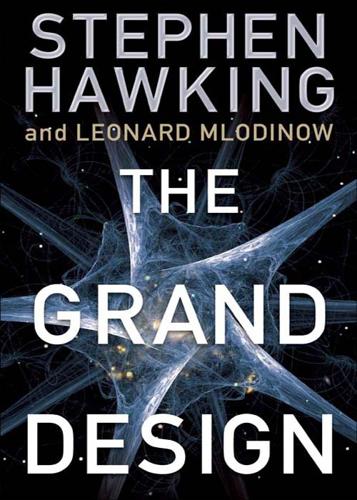
The Grand Design
by
Stephen Hawking
and
Leonard Mlodinow
Published 14 Jun 2010
That may sound as outrageous as the theory in which the table disappears whenever we leave the room, but in this case the theory has passed every experimental test to which it has ever been subjected. N 1999 A TEAM OF PHYSICISTS in Austria fired a series of soccer-ball-shaped molecules toward a barrier. Those molecules, each made of sixty carbon atoms, are sometimes called buckyballs because the architect Buckminster Fuller built buildings of that shape. Fuller’s geodesic domes were probably the largest soccer-ball-shaped objects in existence. The buckyballs were the smallest. The barrier toward which the scientists took their aim had, in effect, two slits through which the buckyballs could pass. Beyond the wall, the physicists situated the equivalent of a screen to detect and count the emergent molecules.

Surviving AI: The Promise and Peril of Artificial Intelligence
by
Calum Chace
Published 28 Jul 2015
One thing that is clear, though, is that the belief that AGI could arrive within a few decades is not the preserve of a few crackpots. Sober and very experienced scientists think so too. It is a possibility we should take seriously. Creating an AGI is very hard. But serious consideration of exponential growth makes very hard problems seem more tractable. Buckminster Fuller estimated that at the start of the twentieth century the sum of human knowledge was doubling every century, and that by the end of the second world war that had reduced to twenty-five years. (40) Now it takes 13 months and in 2006 IBM estimated that when the internet of things becomes a reality the rate would be every 12 hours. (41) The football stadium thought experiment illustrates how progress at exponential rate can take you by surprise – even when you are looking for it.

As the Future Catches You: How Genomics & Other Forces Are Changing Your Work, Health & Wealth
by
Juan Enriquez
Published 15 Feb 2001
Such machines may be possible, thanks to three cantankerous scientists … Robert Curl Jr., Harold Kroto, and Richard Smalley … Who fought each other … And the world … To discover and build … New molecules … Out of the world’s most studied element … Carbon.4 Before 1985, no one knew … That you could lattice carbon … To build geodesic molecules (which look like soccer balls)… On a nano scale. The structure of these compounds resembles the domes that a famous architect … Named R. Buckminster Fuller … Used to design … So they are called fullerenes … And may be the key to building nano scale … Medicine transporters … Super-strong tubes … Transistors.5 In February 2000, IBM scientists announced that they were starting to think about designing a computer on a molecular scale … A computer that could float through the air.
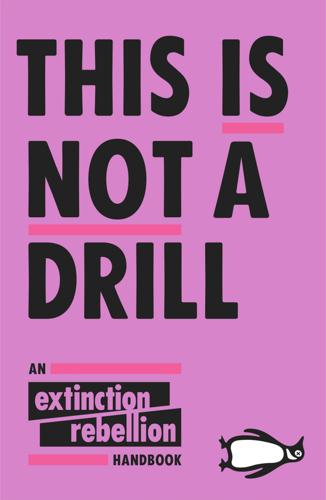
This Is Not a Drill: An Extinction Rebellion Handbook
by
Extinction Rebellion
Published 12 Jun 2019
Different sites request help with at least half an hour’s notice; roving support teams moving between sites help report potential issues in advance and coordinate reinforcements. Make sure that all reinforcements are heavily armed with chocolate bourbon biscuits – I personally believe these to be the true power source of a successful rebellion. — Buckminster Fuller 24/ A POLITICAL VIEW CAROLINE LUCAS MP Climate breakdown is inseparable from politics. The melting ice caps, the scorching heatwaves and the staggering declines in animal and insect populations are the direct result of failures by people in power. Irreversible changes to the natural world are taking place because our economy is built on the assumption that precious minerals, fresh air, clean water and rare species can magically regenerate themselves in an instant.

The Cosmopolites: The Coming of the Global Citizen
by
Atossa Araxia Abrahamian
Published 14 Jul 2015
The League of Nations and its successor, the United Nations, were in no way committed to ending state sovereignty, and Davis believed that humans should belong to a bigger, more inclusive, almost universal community. This brand of cosmopolitanism was in vogue: Luminaries such as Albert Einstein (who was once stateless), Albert Camus, and Buckminster Fuller began advocating for some variant on a world government. In the United States, World Federalist movements were cropping up and joining forces, hoping to unite humanity to prevent another war. The New Yorker published an editorial in its June 5, 1948 issue about Davis: “renouncing US citizenship in order to become a citizen of the world is an exciting gesture.”

The Transhumanist Reader
by
Max More
and
Natasha Vita-More
Published 4 Mar 2013
New York: Houghton Mifflin. 2 Aesthetics Bringing the Arts & Design into the Discussion of Transhumanism Natasha Vita-More “Transhumans want to elevate and extend life … let us choose to be transhumanist not only in our bodies, but also in our values … toward diversity, multiplicity … toward a more humane transhumanity …”1 Imagine a future designed by Frank Gehry that models elements of a “great logistic game” as conceived by Buckminster Fuller, within a monumental Christo installation, kinetically lit by James Turrell, scored by Philip Glass, and sung by Adele. Introduction The emergent course of technology is at once explicable and baffling. It has precipitated questions about a shifting human paradigm that remain unanswered by postmodernism.
…
The most referred to methods for enhancement include regenerative medicine, nanomedicine, and brain preservation. 4 Primarily as suggested by Manfred Clynes and Nathan Kline in “Cyborgs and Space” (1960) and tangentially as suggested by Donna Haraway in Simians, Cyborgs, and Women: The Reinvention of Nature (Haraway 1990). 5 As suggested in The Prosthetic Impulse: From a Posthuman Present to a Biocultural Future (Smith and Morra 2007). 6 Primarily as understood by transhumanists as a stage of human transformation, succeeding transhuman, and tangentially as suggested in How We Became Posthuman: Virtual Bodies in Cybernetics, Literature, and Informatics (Hayles 1999). 7 As understood by Randal Koene as “whole brain emulation” and more recently “substrate-independent minds.” http://www.kurzweilai.net/pattern-survival-versus-gene-survival. 8 Life expansion means increasing the length of time a person is alive and diversifying the matter in which a person exists (Vita-More 1997 [revised 2011]). 9 “Transcentury UPdate,” a cable public TV show aired in Los Angeles and Telluride, Colorado, from 1986 through 1993, and broadcast numerous segments on the political and ethical issues of technology and segments on building scenarios for the global distribution of technology (green energy etc.), the latter largely based on Buckminster Fuller’s distribution plan (Fuller 1982). References Ascott, Roy (1989) Aspects of Gaia: Digital Pathways Across the Whole Earth. Paper presented at annual Ars Electronica, Linz, Austria. Broderick, Damien (1997) The White Abacus. New York: Avon Books. Burgess, Lowry (2008) Studio for Creative Inquiry, Carnegie Mellon University. http://www.cmu.edu/studio/fellowships/index.html.
…
Especially noteworthy is the fact that one individual may have many different avatars, thereby becoming a multiplex or protean personality. Decades ago, psychiatrists described this as multiple personality neurosis or some form of split personality (Thigpen and Cleckley 1957; Lifton 1971), but in future we may decide that the most effective mode of being is pluralism. Buckminster Fuller (1970) used to say, “I seem to be a verb.” Perhaps today we should say, “I am a plural verb in future tense.” Avatars and Simulation Under the right conditions an avatar in a virtual world can substantially enhance the abilities of the user – the person who owns and operates it. Since ancient times, philosophers have debated the meaning of reality.
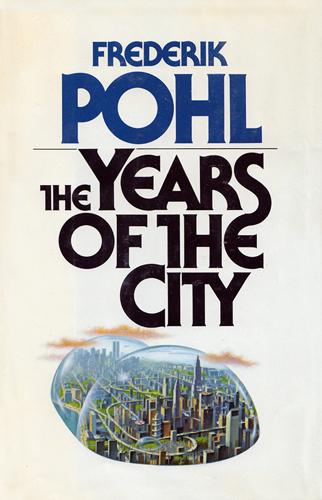
Years of the City
by
Frederik Pohl
Published 1 Jan 1984
They hadn’t always realized the implications of that thought, of course; that was why so many cityscapes from about 1920 showed tall, skinny skyscrapers dominating the scene—that was so everyone could have an outside window, or something like it, and so the city could breathe. But that was before air-conditioning. That was before Buckminster Fuller, reasoning from energy considerations, declared the skyscraper a disaster. If you wanted, said Fuller, to design a nearly perfect radiator—which was to say, a system that would waste as much energy as it possibly could—you would come up with something very like the skyline of almost any city in the world.
…
The same strategies were open to City-Bear, and Brandon knew where to find out about them. He pulled out the Feigerman & Tisdale report and studied it. Yes. His memory had been correct; the strategies were there. City-Bear could enclose itself, like the fur of an animal, in a thermally opaque coat—as Buckminster Fuller proposed, a great dome over the city. Or City-Bear could bury itself in a deep cave, where the worst winter winds could not follow. Below the ground the temperature is steady and bearable all year round—thus the art of “terratecture,” to take advantage of this free gift. Not entirely free, Brandon discovered.
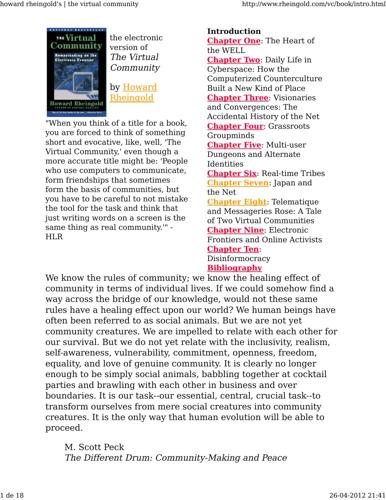
Howard Rheingold
by
The Virtual Community Homesteading on the Electronic Frontier-Perseus Books (1993)
Published 26 Apr 2012
The Whole Earth Catalog originally emerged from the Haight-Ashbury counterculture as Stewart Brand's way of providing access to tools and ideas to all the communards who were exploring alternate ways of life in the forests of Mendocino or the high deserts outside Santa Fe. The Whole Earth Catalogs and the magazines they spawned--Co-Evolution Quarterly and its successor, Whole Earth Review--seem to have outlived the counterculture itself, since the magazine and catalogs still exist after twenty-five years. One of Whole Earth's gurus, Buckminster Fuller, was fond of using the analogy of the tiprudder--the small rudder on very big ships that is used to control the larger, main rudder. The tiprudder people who steer the movements and disciplines that steer society--the editors and engineers, scientists and science-fiction writers, freelance programmers and permaculture evangelists, grassroots political activists and congressional aides--continued to need new tools and ideas, even though they were no longer a counterculture but part of the mainstream.
…
I don't even think that's right. I think it's something more. I think, in a sense, it is shared consciousness. In the 1980s, Frank Odasz and his wife, Reggie, worked in rural Montana as educators who were determined to improve the living conditions for their community by "thinking globally and acting locally," as Buckminster Fuller advised. They were enthusiastic about the educational potential of computer technology, especially the kind of CMC technology they had seen through Chariot, the conferencing system Dave Hughes and his partner Louis Jaffe ran in Old Colorado City as a successor to Dave's original "Rogers' Bar" BBS.

WikiLeaks and the Age of Transparency
by
Micah L. Sifry
Published 19 Feb 2011
The back-channel was coming to the foreground. The modern transparency movement was about to take off. 48 MICAH L. SIFRY 3 From Scarcity to Abundance You never change things by fighting the existing reality. To change something, build a new model that makes the existing model obsolete. ––R. Buckminster Fuller The fundamental change powering the networked age of politics is the shift from scarcity to abundance. Thanks to the rapid evolution of computer processing power, all kinds of goods that were once expensive to produce have become cheap. Beyond the declining price of a personal computer or a backup drive, elemental changes in the economics of information, connectivity, and time have occurred: y Information: The cost of making an electronic copy of any kind of data and sharing it with others has dropped to almost zero.
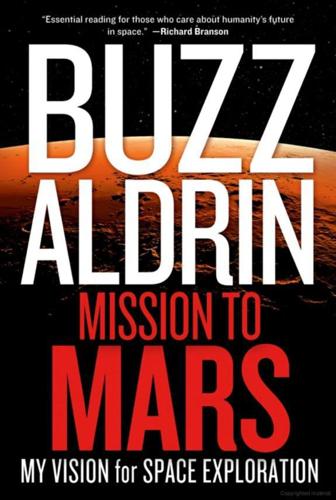
Mission to Mars: My Vision for Space Exploration
by
Buzz Aldrin
and
Leonard David
Published 1 Apr 2013
When my dad came up with an idea, he would seek out the people who were doing the most creative thinking at the moment. They would usually pick up the phone when he called. At one point he began to look critically at the design of the space station. The structure just didn’t seem efficient. I recall that he became enamored with geodesic structures, so he naturally called on Buckminster Fuller. Now that was an amazing set of conversations. At the time it seemed like competing soliloquies. But I began to see many more of Bucky’s ideas creep into the design. And it is not just the well known and famous who captured my father’s attention. If anyone had an idea that fit in my dad’s vision of the future, he would go and talk to them.
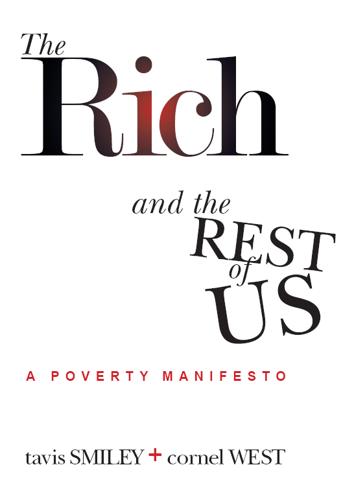
The Rich and the Rest of Us
by
Tavis Smiley
Published 15 Feb 2012
As in desperate times of yesteryear, the dispossessed are coming up with imaginative ways—some legal, others not so much—to address the crisis of poverty while still attempting to hold the government accountable for the safety and well-being of its citizenry. Their voices, methods of survival and imaginations are crucial in shaping their—and our—destiny. REMAKING AMERICA “You never change things by fighting the existing reality. To change something, build a new model that makes the existing model obsolete.” —R. Buckminster Fuller Since business leaders have prioritized the path to profit at all costs and opted to transport American jobs overseas, we have no choice but to explore other ways to create jobs in our own communities and insist that the government create immediate job opportunities for all categories of the “poor.”
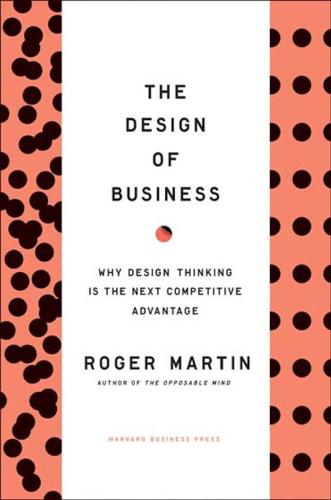
Design of Business: Why Design Thinking Is the Next Competitive Advantage
by
Roger L. Martin
Published 15 Feb 2009
They focus your attention and clarify your thinking.” 13 Rather than an enemy, constraints are features that make the task at hand more exciting, the problem more wicked, and the status for releasing the constraint that much loftier. Constraints point the validity-oriented design thinker to the locus of needed innovation. They frame the mystery that needs to be solved. Instead of telling us what we cannot do, constraints help us reframe the problem and discover new opportunities in the process. Buckminster Fuller is a hero to designers because he was inspired, not discouraged, by a seemingly intractable physical constraint: buildings get proportionally heavier, weaker, and more expensive as they grow larger in scale. The problem inspired him to make a logical leap to a structure that becomes proportionally lighter, stronger, and less expensive as it grows larger in scale—the geodesic dome.

White City, Black City: Architecture and War in Tel Aviv and Jaffa
by
Sharon Rotbard
Published 1 Jan 2005
Illustrative examples include Le Corbusier forcibly plotting the Villa Savoye in the middle of a meadow in Poissy or Adolph Loos’ description of the modern villa by the lake in his essay, Architecture.225 Occasionally, this architectural invasion took a more explicit form – in the mobile homes of Voisin, in Buckminster Fuller’s Geodesic domes, in Israel’s very own ‘Wall and Tower’ settlements, in Jean Prouvé’s Tropical House and House of the Lone Settler in the Sahara. In certain instances, architects were utterly unambiguous about this kind of architectural violence and how they intended to make use of it – Marinetti’s Futurist manifestos carried the call for war, Albert Speer eagerly endorsed the ‘ruin value theory’, Claude Parent and Paul Virilio declared their intention to ‘take over the site’.226 These examples prove that the visual and stylized violence inherent in modern architecture, as much as the violence turned against it, did not just end with debate and academic commentary; it addressed something so fundamental that if pushed, people would willingly, literally, kill and be killed for it.227 White would play a unique role in all this: it had already seduced modern architecture and it would become the representative of both Mediterran-eanism (courtesy of Le Corbusier) and Easternism (as in the famous Nazi postcard showing the Weisenhof neighbourhood in Stuttgart as an Arab village).

New Dark Age: Technology and the End of the Future
by
James Bridle
Published 18 Jun 2018
The last of these is my favourite addition: the ‘winglets’ that now adorn the wingtips of most aircraft. These are a recent invention, developed by NASA in response to the 1973 oil crisis and gradually retrofitted for commercial aircraft to increase fuel efficiency. They always bring to mind the epitaph of Buckminster Fuller, as written on his gravestone in Cambridge, Massachusetts: ‘Call me trimtab.’ Tiny in-flight adjustments, performed at scale. This is what we remain capable of. History – progress – does not always go up and to the right: it’s not all sunlit uplands. And this isn’t – cannot be – about nostalgia.

Artificial Unintelligence: How Computers Misunderstand the World
by
Meredith Broussard
Published 19 Apr 2018
“I got it out of the house.”9 When it came to tinkering, many makers of Minsky’s generation felt that conventional rules didn’t apply to them. For example, Minsky liked to tell a story about some friends of his who built an intercontinental ballistic missile (ICBM) in the backyard of a house that once belonged to architect Buckminster Fuller. This attitude, that creating mattered more than convention (or laws), was what people of Minsky’s generation passed on to their students. It shows up later in the behavior of tech CEOs like Travis Kalanick, who in 2017 was ousted from his top position at Uber for (among other things) creating a culture of sexual harassment.
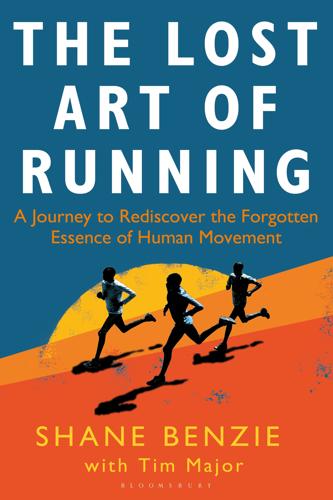
The Lost Art of Running: A Journey to Rediscover the Forgotten Essence of Human Movement
by
Shane Benzie
and
Tim Major
Published 19 Aug 2020
This comes down to something that James explained is referred to as ‘tensegrity’ (a concept formed from the words ‘tensional’ and ‘integrity’). This is where individual components – in our case, our bones – float in a sea of tension. This concept was first developed by artist Kenneth Snelson and then furthered by architect and designer Buckminster Fuller. Snelson created sculptures using steel bars connected by wire. The bars did not touch one another but were held in place by the tension of the wires. In the same way, their work suggested that our bones float in the soft tissue – in a sea of tension – and that the soft tissue adjusts the stiffness of the system in response to the forces acting on the body.
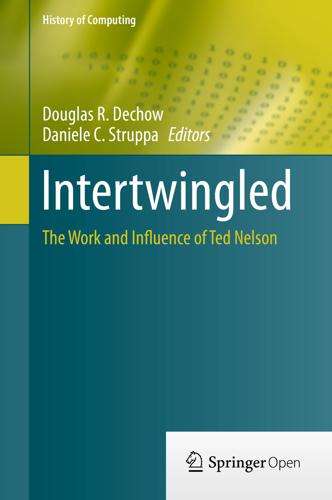
Intertwingled: The Work and Influence of Ted Nelson (History of Computing)
by
Douglas R. Dechow
Published 2 Jul 2015
I avidly studied the details of my comic books, from the language and visual angles to the dots of the color. And I listened to radio programs with every fiber of my brain. I had four main media heroes in my first 10 years, and they are my heroes now: Walt Disney, Leonardo da Vinci, Frank Lloyd Wright, and Buckminster Fuller. They worked in different media, but in much the same way. Each was independent, visionary and original. All these years I have tried to be like them: independent, able to see what others could not, and creating new designs others could not imagine. I also learned a lot about show business; I happened to have inside connections.
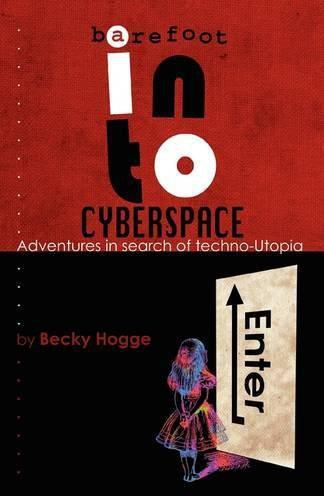
Barefoot Into Cyberspace: Adventures in Search of Techno-Utopia
by
Becky Hogge
,
Damien Morris
and
Christopher Scally
Published 26 Jul 2011
The outsized volume was divided into several sections: “Whole Earth Systems” stood out at the front, followed by “Shelter and Land Use”, “Industry and Craft”, “Communications”, “Community”, “Nomadics” and “Learning”. Interspersed throughout the catalogue, but particularly in the front section, lie texts about computer science, informatics, brain research and cybernetics. A two-page spread is given over to the works of Buckminster Fuller. The September 1966 edition of Scientific American, subtitled simply “Information”, is touted as “the best introduction we’ve seen to computer science”. Opposite it sits a gushing review of the HP 9100A Calculator, “the best of the new tabletop number-crunchers”. On the previous page sits a review of The Human Biocomputer, an exploration into psychedelics and sensory deprivation by the neuroscientist John Lily, inventor of the flotation tank.

The Age of Spiritual Machines: When Computers Exceed Human Intelligence
by
Ray Kurzweil
Published 31 Dec 1998
The Nanotube: A Variation of Buckyballs Three professors—Richard Smalley and Robert Curl of Rice University, and Harold Kroto of the University of Sussex—shared the 1996 Nobel Prize in Chemistry for their 1985 discovery of soccer-ball-shaped molecules formed of a large number of carbon atoms. Organized in hexagonal and pentagonal patterns like R. Buckminster Fuller’s building designs, they were dubbed “buckyballs.” These unusual molecules, which form naturally in the hot fumes of a furnace, are extremely strong—ahundred times stronger than steel—a property they share with Fuller’s architectural innovations.12 More recently, Dr. Sumio lijima of Nippon Electric Company showed that in addition to the spherical buckyballs, the vapor from carbon arc lamps also contained elongated carbon molecules that looked like long tubes.13 Called nanotubes because of their extremely small size—fifty thousand of them side by side would equal the thickness of one human hair—they are formed of the same pentagonal patterns of carbon atoms as buckyballs and share the buckyball’s unusual strength.
…
BRUTUS.1 A computer program that creates fictional stories with a theme of betrayal; invented by Selmer Bringsjord, Dave Ferucci, and a team of software engineers at Rensselaer Polytechnic Institute in New York. Buckyball A soccer-ball-shaped molecule formed of a large number of carbon atoms. Because of their hexagonal and pentagonal shape, the molecules were dubbed “buckyballs” in reference to R. Buckminster Fuller’s building designs. Busy beaver One example of a class of noncomputational functions; an unsolvable problem in mathematics. Being a “Turing machine unsolvable problem,” the busy beaver function cannot be computed by a Turing machine. To compute busy beaver of n, one creates all the n-state Turing machines that do not write an infinite number of Is on their tape.
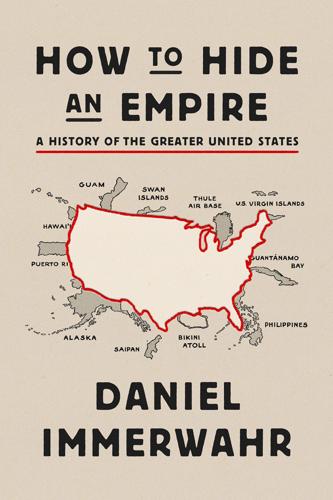
How to Hide an Empire: A History of the Greater United States
by
Daniel Immerwahr
Published 19 Feb 2019
It had worked well enough in an age of east-and-west sail, but the editors of Life deemed it “a mental hazard” in an age of aviation, when planes could reach Eurasia from North America by flying north over the Arctic Sea. There were other options, and the public was oddly willing to learn about them. Life devoted a fifteen-page spread to the “Dymaxion map” by the inventor Buckminster Fuller: fourteen detachable segments that could be folded into a tetradecahedron or assembled into various flat maps, as the user chose. More popular was the “polar azimuthal projection” perfected by the dean of wartime cartography, Richard Edes Harrison. It showed the continents huddled around the North Pole, a jarring angle of view that highlighted aviation routes and showed how dangerously close North America was to Germany’s European empire.
…
Thompson, A Sense of Power: The Roots of America’s Global Role (Ithaca, NY, 2014); and Stephen Wertheim, “Tomorrow the World: The Birth of U.S. Global Supremacy in World War II” (Ph.D. diss., Columbia University, 2015). “a mental hazard”: “Maps: Global War Teaches Global Cartography,” Life, August 3, 1942, 57–65. “Dymaxion map”: “R. Buckminster Fuller’s Dymaxion World,” Life, March 1, 1943, 41–55. Richard Edes Harrison: Alan K. Henrikson, “The Map as an ‘Idea’: The Role of Cartographic Imagery During the Second World War,” The American Cartographer 2 (1975): 19–53; Susan Schulten, “Richard Edes Harrison and the Challenge to American Cartography,” Imago Mundi: The International Journal for the History of Cartography 50 (1998): 174–88; Susan Schulten, The Geographical Imagination in America, 1880–1950 (Chicago, 2001), chap. 9; and William Rankin, After the Map: Cartography, Navigation, and the Transformation of Territory in the Twentieth Century (Chicago, 2016), chap. 2.
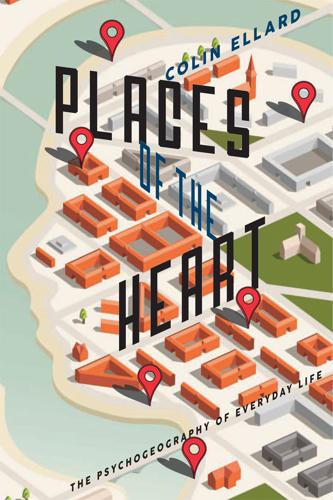
Places of the Heart: The Psychogeography of Everyday Life
by
Colin Ellard
Published 14 May 2015
The Design Hub at Melbourne’s Royal Institute of Technology is composed of thousands of polished disks that rotate to follow the sun, lowering the energy costs of the building, and one day serving as a power plant using an array of photovoltaic cells. Similarly, Chicago architect Tristran D’Estree Sterk designs shape-shifting buildings whose organically curved and pleasing outer envelopes use the principles of what Buckminster Fuller called “tensegrity”’ to alter their very form in response to readouts from sensors. So far, these sensors are designed to measure things like air temperature and sunshine, with the main goal of producing a pleasant internal atmosphere with the minimum of energy expenditure. Although such structures certainly take advantage of modern sensing gear and materials to produce accommodations that make for greener buildings, they are really only a small step beyond the simple feedback mechanism of a thermostat on the furnace of a house.
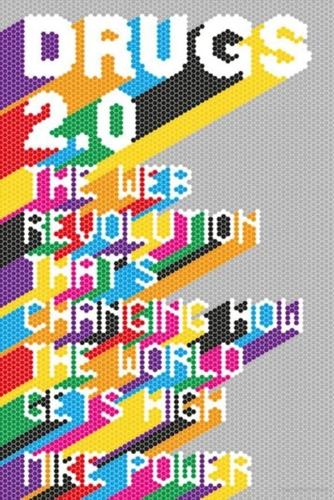
Drugs 2.0: The Web Revolution That's Changing How the World Gets High
by
Mike Power
Published 1 May 2013
The Shulgins wrote the preface to Stolaroff’s book Thanatos to Eros (1994) detailing his experiences with LSD, MDMA, mescaline and a number of Shulgin’s creations.2 Author Stewart Brand, who coined the phrase ‘Information wants to be free’ in 1984, was responsible for filming the Mother of All Demos, and that same year he launched the Whole Earth Catalog, the ad-free samizdat techno-hippy bible. Its esoteric and wide-ranging content, from poetry to construction plans for geodesic domes by physicist Buckminster Fuller, from car repair tips to trout-fishing guides and the fundamentals of yoga and the I-ching, was hacked together using Polaroid cameras, Letraset and the highest of low-tech. It now reads much like a printed blog; it was a paper website, in the words of blogger and author Kevin Kelly, that was sprinting before the web even took its first shaky steps.3 Its statement of intent in its launch issue reads like a manifesto that has been realized by today’s web users: ‘A realm of intimate personal power is developing – the power of the individual to conduct his own education, find his own inspiration, shape his own environment, and share his adventure with whoever is interested.
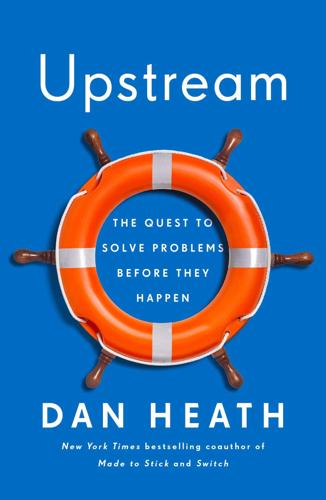
Upstream: The Quest to Solve Problems Before They Happen
by
Dan Heath
Published 3 Mar 2020
“Remember, always, that everything you know, and everything everyone knows, is only a model,” said Donella Meadows, the systems thinker. “Get your model out there where it can be shot at. Invite others to challenge your assumptions and add their own.… The thing to do, when you don’t know, is not to bluff and not to freeze, but to learn. The way you learn is by experiment—or, as Buckminster Fuller put it, by trial and error, error, error.” Looking back on the open-office miscue, Imber said she wishes she had tried some experiments with her staff in the State Library Victoria in Melbourne. The library has many different kinds of environments, ranging from open, collaborative spaces to more solitary ones.
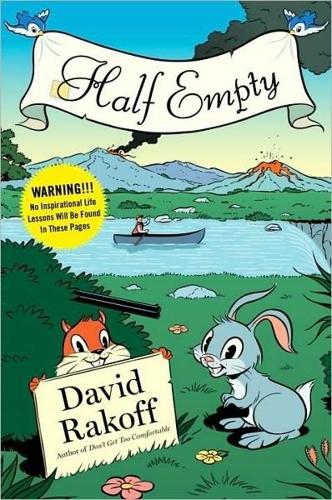
Half Empty
by
David Rakoff
Published 20 Sep 2010
The Monsanto House featured such theretofore unheard-of marvels as a microwave, an ultrasonic dishwasher that rose from beneath the counter, closed-circuit-TV intercoms, and an electric razor. Old footage shows that it really was a wonder. A gorgeous building with walls of plastic windows, perched atop a central post, echoing Buckminster Fuller’s visionary Dymaxion House. The House of the Future was simultaneously sleek and voluptuous; imagine a gigantic futuristic cold-water faucet: a lovely white plus sign of a building with the mid-century grace of Eero Saarinen’s TWA terminal, gently inflated like a water wing. Contemporary accounts of the advent of electricity on the domestic front almost always make mention of a horrified realization of the kinds of filth people lived with before they could see it properly illuminated.

50 Future Ideas You Really Need to Know
by
Richard Watson
Published 5 Nov 2013
The robot uses smart software to tell what’s edible and what’s not and uses a laser-guided robotic arm to grab the biomass and put it in a hopper that connects with an internal combustion engine, which in turn powers an onboard battery. Why do this? The answer is partly that wars depend on energy (soldiers increasingly rely on battery-powered devices) and partly that wars are often fought in remote regions where supply chains can be easily disrupted. “Either war is obsolete or men are.” Buckminster Fuller, author, inventor and futurist Friend or foe? When it comes to drones, or UAVs (unmanned aerial vehicles), these are principally surveillance tools not weapons at present. Payloads are generally small and they’re vulnerable to ground defense because of their slow speed. But give it a few decades and things will change.
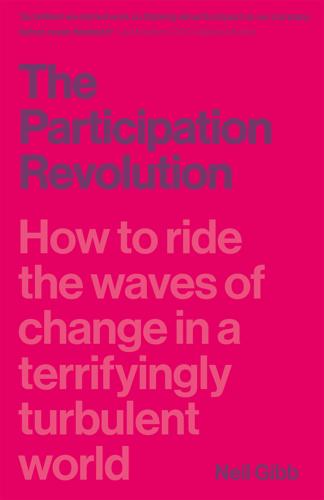
The Participation Revolution: How to Ride the Waves of Change in a Terrifyingly Turbulent World
by
Neil Gibb
Published 15 Feb 2018
But I believe we also have at our fingertips the means to create a new golden age for humanity – a world that really does work for everyone. And that is what I am interested in. The game is on. Which is why this book is really an invitation. How to use this book “We are called to be architects of the future, not its victims” R Buckminster Fuller 1. A manifesto for those who are out to change the world 2. A framework for transformation in the new economy 3. How to be a billionaire – in three easy moves Books are pretty old tech. The basic structure of the modern book goes back to the invention of bookbinding and the printing press.
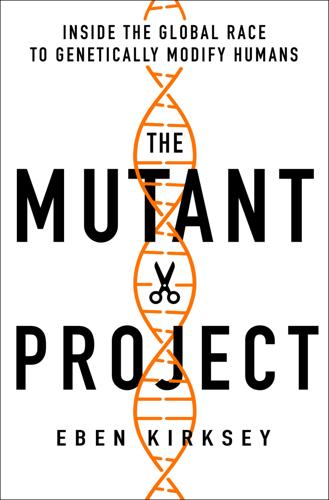
The Mutant Project: Inside the Global Race to Genetically Modify Humans
by
Eben Kirksey
Published 10 Nov 2020
* * * Later that night, as Adam Zaretsky talked about his dream of creating a genetically modified child, he said that he was captivated by “the wonders of bodily diversity.” Adam wanted to make sure that CRISPR did not get monopolized by the gigantic corporate megaliths that increasingly exert control over our daily life. His goal was to get past what Buckminster Fuller once called the “gross universal cash heist” and explore new flamboyant possibilities for the human body. If we really let loose with CRISPR, the question will no longer be “who can wear more gaudy socks,” Adam said, but “who can have more gaudy toes, you know, who can have the most beautifully patterned shell.”
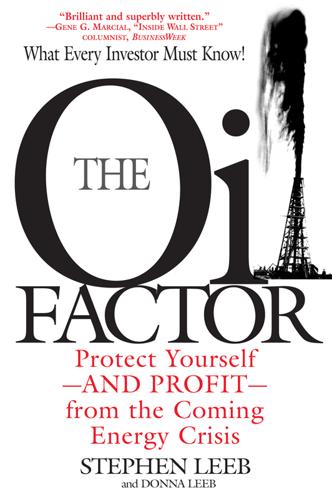
The Oil Factor: Protect Yourself-and Profit-from the Coming Energy Crisis
by
Stephen Leeb
and
Donna Leeb
Published 12 Feb 2004
Our whole national mindset has to change. It would have been nice, of course, if the big push to develop alternative energies had been made before we reached this pass. Even before the first Arab oil embargo it was clear to some people that it made no sense to rely so heavily on fossil fuels. Buckminster Fuller was an early visionary in this area, as in many others. In 1969 he wrote in his book Utopia or Oblivion: “There are gargantuan energy-income sources available which do not stay the processes of nature’s own conservation of energy within the earth crust ‘against a rainy day.’ These are in water, tidal, wind, and desert-impinging sun radiation power.
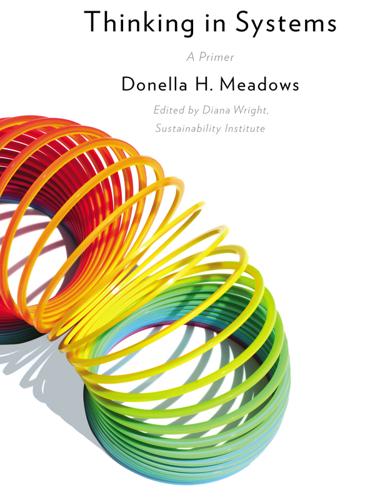
Thinking in Systems: A Primer
by
Meadows. Donella
and
Diana Wright
Published 3 Dec 2008
Working with systems, on the computer, in nature, among people, in organizations, constantly reminds me of how incomplete my mental models are, how complex the world is, and how much I don’t know. The thing to do, when you don’t know, is not to bluff and not to freeze, but to learn. The way you learn is by experiment—or, as Buckminster Fuller put it, by trial and error, error, error. In a world of complex systems, it is not appropriate to charge forward with rigid, undeviating directives. “Stay the course” is only a good idea if you’re sure you’re on course. Pretending you’re in control even when you aren’t is a recipe not only for mistakes, but for not learning from mistakes.
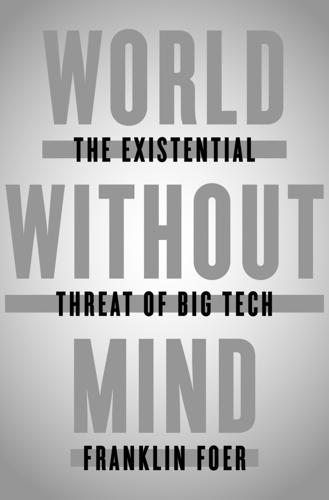
World Without Mind: The Existential Threat of Big Tech
by
Franklin Foer
Published 31 Aug 2017
If some of these sentiments sound familiar, it is because they have echoed in dozens of Apple commercials over the years. In a way, this was a theory of radical individualism and self-reliance—a forerunner of Silicon Valley libertarianism. But Brand had studied the works of such thinkers as Buckminster Fuller, Norbert Wiener, and Marshall McLuhan. All of his intellectual heroes wrote about the importance of looking at systems and networks. This was where the notion of the Whole Earth came in. Brand wanted his readers to think ecologically, to see how everything relates to everything else, to understand their place in the web of life.
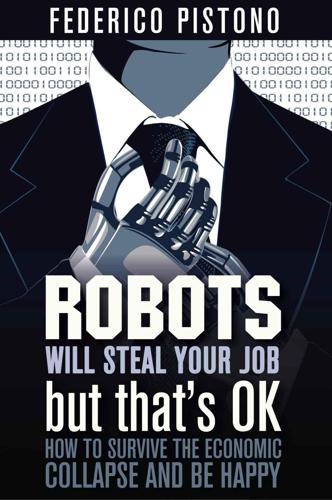
Robots Will Steal Your Job, But That's OK: How to Survive the Economic Collapse and Be Happy
by
Pistono, Federico
Published 14 Oct 2012
I know, these words are radical. And possibly naive. The result of a young mind, oblivious to the intricate fabric of society, who has nice dreams, but no real understanding of complex systems and economic behaviour. As it turns out, that is almost a word-by-word quote of the great genius futurist Buckminster Fuller, interviewed in 1970 by New York Magazine.170 The point is that “We prefer to invent new jobs rather than trying harder and inventing a new system that wouldn’t require everybody to have a job.”171 With this book, I have posited that robots will your job, but that’s OK. I will go one step further.
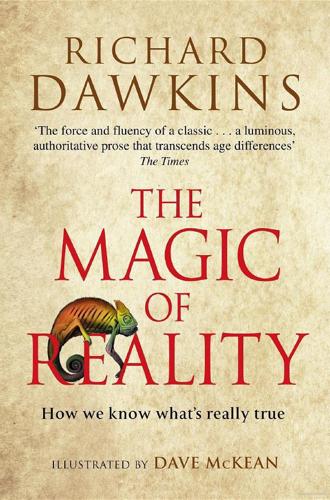
The Magic of Reality: How We Know What's Really True
by
Richard Dawkins
Published 3 Oct 2011
Carbon chemistry is rather like the toy construction kit called Tinkertoy. In the laboratory, chemists have succeeded in making carbon atoms join up with each other, not just in simple loops but in wonderfully shaped Tinkertoy-like molecules nicknamed Buckyballs and Buckytubes. ‘Bucky’ was the nickname of Buckminster Fuller, the great American architect who invented the geodesic dome. The Buckyballs and Buckytubes scientists have made are artificial molecules. But they show the Tinkertoyish way in which carbon atoms can be joined together into scaffolding-like structures that can be indefinitely large. (Just recently the exciting news was announced that Buckyballs have been detected in outer space, in the dust drifting near to a distant star.)

Move Fast and Break Things: How Facebook, Google, and Amazon Cornered Culture and Undermined Democracy
by
Jonathan Taplin
Published 17 Apr 2017
It was Stewart Brand who suggested that Lama might provide an atmosphere, as John Markoff wrote, “to create a meeting of the minds between the NLS researchers and the counterculture community animated by the Whole Earth Catalog.” The land outside Taos was full of alternative communities—Morningstar East, Reality Construction Company, the Hog Farm, New Buffalo, and the Family, to name a few. Steve Durkee and Steve Baer, both disciples of Buckminster Fuller and close friends of Stewart Brand, ran Lama, and the architecture of the buildings hewed closely to Bucky Fuller’s geodesic dome design. Fuller believed that what society needed was not more specialization but a new type of generalist, whom he called a comprehensive designer. For Bucky the problem of humanity’s survival was one of design, and he thought the “artist-scientist” could solve it: If man is to continue as a successful pattern-complex function in universal evolution, it will be because the next decades will have witnessed the artist-scientist’s seizure of the prime design responsibility and his successful conversion of tool-augmented man from killingry to advanced livingry—adequate for all humanity.
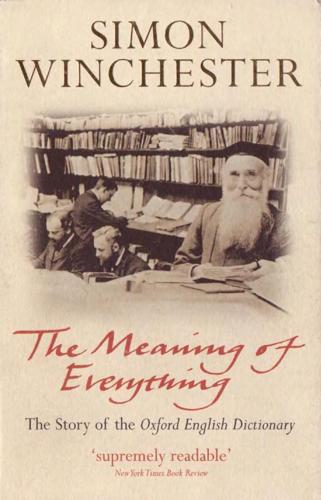
The Meaning of Everything: The Story of the Oxford English Dictionary
by
Simon Winchester
Published 1 Jan 2003
Charles Onions 3 was still alive, and helped Burchfield until the mid-1960s. In the end, 50,000 words were added— including (as Burchfield wrote in his final Preface to Volume IV) several which their creators helped to define: Anthony Powell, for example, helped with acceptance world, A. J. Ayer with drogulus, Buckminster Fuller with Dymaxion, J. R. R. Tolkien—a former assistant and walrus expert—with hobbit, and the cosmologist Murray Gell-Mann with quark. Psychedelic, coined in 1957, but popular at the time that Volume III was being printed, made it, just in time. Robert Burchfield, the New Zealand-born lexicographer who created the four-volume supplement to the completed OED, which appeared between 1972 and 1986.
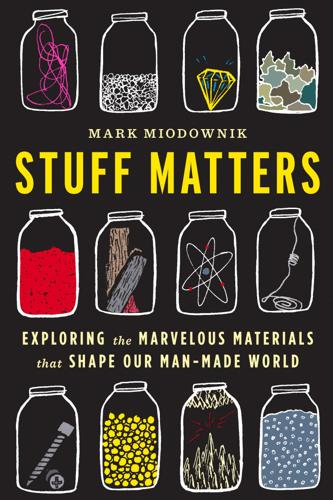
Stuff Matters: Exploring the Marvelous Materials That Shape Our Man-Made World
by
Mark Miodownik
Published 5 Jun 2013
A clue to how this might be done came with the discovery of a fourth carbon structure, one that was found in the most unlikely of places: the flame of a candle. In 1985 Professor Harry Kroto and his team discovered that inside a candle flame carbon atoms were miraculously self-assembling in groups of exactly sixty atoms to form super-molecules of carbon. The molecules looked like giant footballs and were nicknamed “buckyballs” after the architect Buckminster Fuller, who had designed geodesic domes with the same hexagonal structure. Kroto’s team received the 1996 Nobel Prize for chemistry for this discovery, and also woke everyone up to the fact that the microscopic world might contain a whole zoo of other carbon structures that had never been seen before.
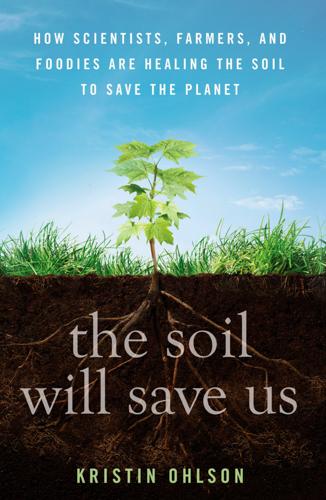
The Soil Will Save Us
by
Kristin Ohlson
Published 14 Oct 2014
Savory has many speaking engagements around the world, but many people visit him in Zimbabwe—scientists, cattlemen, politicians, filmmakers, journalists, environmentalists, and more—and many sit right where I was, near the fire pit, with the baboons and other animals looking on. When I visited, the center staff was still excited that Savory had won the 2010 Buckminster Fuller Challenge, which targets solutions to big global problems. They were stoked at the possibility of securing an even bigger honor: The center is a finalist for billionaire Sir Richard Branson’s $25 million award for the best plan for removing carbon dioxide from the air. Shortly after I returned to the States, a video of Prince Charles expressing his interest in Savory’s work was circulating.
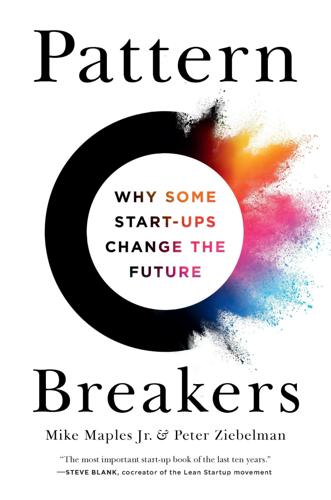
Pattern Breakers: Why Some Start-Ups Change the Future
by
Mike Maples
and
Peter Ziebelman
Published 8 Jul 2024
We’ll devote the rest of the book to exploring these concepts, beginning with the first and most foundational of them: inflections. 2 HARNESSING INFLECTIONS How Pattern Breakers Change the Rules You never change things by fighting the existing reality. To change something, build a new model that makes the existing model obsolete. —Buckminster Fuller, engineer, architect, and futurist Have we ever funded something illegal before?” my Floodgate partner Ann Miura-Ko asked as she poked her head in the doorway. That got my attention. Ann and I cofounded Floodgate as a venture capital partnership and have worked together for more than fifteen years.

Utopia Is Creepy: And Other Provocations
by
Nicholas Carr
Published 5 Sep 2016
“Within ten years after initiating space migration,” Leary wrote, “a group of a thousand people will be able to get together cooperatively and build a new mini-world cheaper than they could buy individual homes down here. When you’ve got new ideas you can’t hang around the old hive.” During the seventies, Leary had plenty of company in calling for the establishment of elite experimental colonies beyond the bounds of established society. Buckminster Fuller, Gerard O’Neill, and Jerry Brown, among others, argued for the necessity of expanding the American frontier to create zones of technological and social experimentation where innovation could proceed unhampered by outdated laws and traditions. The migration of the self-selecting elite would eventually help the more timid who chose to stay behind, Leary argued, as it “allows for new experiments—technological, political, and social—in a new ecological niche far from the home hive.”
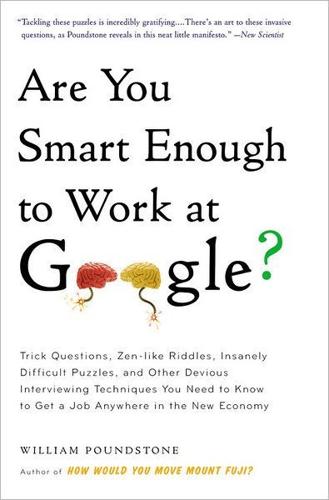
Are You Smart Enough to Work at Google?: Trick Questions, Zen-Like Riddles, Insanely Difficult Puzzles, and Other Devious Interviewing Techniques You ... Know to Get a Job Anywhere in the New Economy
by
William Poundstone
Published 4 Jan 2012
Kepler guessed this was the densest packing possible, but he was unable to supply a proof. Kepler’s conjecture, as it was called, remained a great unsolved problem for centuries. In 1900 it made David Hilbert’s famous list of twenty-three unsolved problems in mathematics. A number of people have claimed to prove it, including the architect Buckminster Fuller, of geodesic dome fame. All such resolutions were quickly rejected as wrong until 1998, when Thomas Hales offered a complicated, computer-assisted proof showing that Kepler was right. Most believe his result will stand up, though the construction of a formal proof is currently ongoing. Hales estimated it would take another twenty years.

Makers
by
Chris Anderson
Published 1 Oct 2012
Brand wrote on the first page of the first edition, “A realm of intimate, personal power is developing—power of the individual to conduct his own education, find his own inspiration, shape his own environment, and share his adventure with whoever is interested. Tools that aid this process are sought and promoted by The Whole Earth Catalog.” Buckminster Fuller followed with a poem that began, “I see God in the instruments and mechanisms that work reliably.”13 The Homebrew Computer Club, where Jobs and Wozniak brain-stormed the first Apple computer, was founded on these principles. Today it carries on in hundreds of makerspaces, each using twenty-first-century tools to try to effect the same sort of revolutionary social and economic change.

Immortality, Inc.
by
Chip Walter
Published 7 Jan 2020
Everything to Kurzweil was a pattern, from human consciousness to the sound of a plucked violin string to the letter “B” (what defines the “B”-ness of a “B”?). His inventioneering made him very acceptable sums of money, and also led to an assortment of prestigious prizes: the Lemelson-MIT Prize, Carnegie Mellon’s Dickson Prize, and the Grace Murray Hopper Award. Kurzweil soon found himself operating more in the mold of Edison or Buckminster Fuller than your average, workaday academic: a gifted inventor who sprayed ideas, software, and gadgets around like confetti. But all of that would come later. For now, Kurzweil was simply enjoying the benisons of life at MIT. He liked the room-size computers, the constant projects, and the ethereal confines of one of Cambridge’s finest schools.
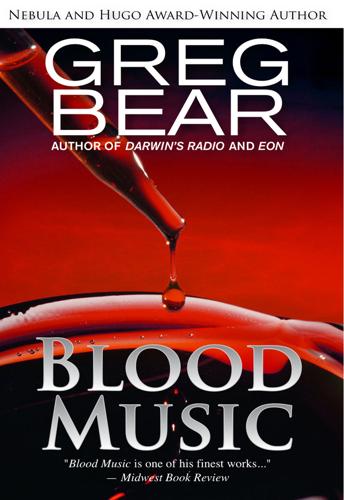
Blood Music
by
Greg Bear
Published 19 May 2014
“You don’t understand me, Edward. Look at the images again. That’s not trauma.” “Look, there’s thickening here,” he indicated the ankles, “and your ribs—that crazy zigzag interlocking. Broken somewhere, obviously. And—” “Look at my spine,” Vergil suggested. Edward slowly rotated the image on the screen. Buckminster Fuller came to mind immediately. It was fantastic. Vergil’s spine was a cage of triangular bones, coining together in ways Edward could not even follow, much less comprehend. “Mind if I feel?” Vergil shook his head. Edward reached through the slit in the robe and traced his fingers along the back.
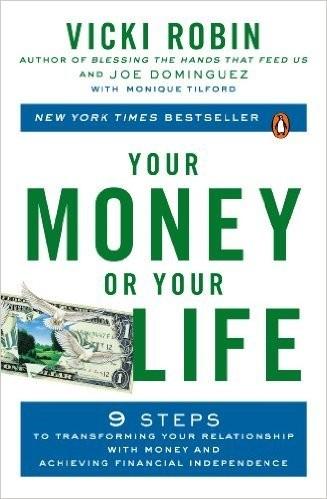
Your Money or Your Life: 9 Steps to Transforming Your Relationship With Money and Achieving Financial Independence: Revised and Updated for the 21st Century
by
Vicki Robin
,
Joe Dominguez
and
Monique Tilford
Published 31 Aug 1992
The “nine to five till you’re sixty-five” pattern, so recent in human history but so pervasive today, seems like the only choice for someone who is neither a sports nor entertainment superstar nor an eccentric. After all, there are bills to pay and an identity to maintain, and besides, what would I do with my life if I didn’t have a job? Is More Better? And many of us are out there “making a dying” because we’ve bought the pervasive consumer myth that more is better. Even though Buck-minster Fuller likened the earth to a spaceship, we cling to the silver-screen images of the Frontier, where “there’s always more where that came from.” We build our working lives on this myth of more. Our expectation is to make more money as the years go on. We will get more responsibility and more perks as we move up in our field.
…
Life After the Crossover Point The essence of FI is choice. Once you’ve passed the Crossover Point you have choice about how you fill the hours of your day and the days of your productive life. There is no formula for how you live after the Crossover Point. And that’s the point. You are free to invent your life. You are free to explore what Buck-minster Fuller meant when he said, “We are called to be architects of the future, not its victims.” You have a choice. SUMMARY OF STEP 8 Each month apply the following equation to your total accumulated capital and post the monthly investment income as a separate line on your Wall Chart: When you begin investing your money according to the guidelines offered in the next chapter, start entering your actual interest income for your monthly investment income on your Wall Chart (while still applying the formula to your further savings).
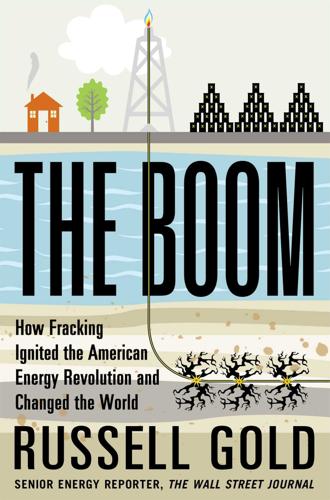
The Boom: How Fracking Ignited the American Energy Revolution and Changed the World
by
Russell Gold
Published 7 Apr 2014
Mitchell Energy was a substantial company—not a giant like Mobil or Amoco, but a respectably sized independent oil and gas explorer. Having pulled himself up from poverty to wealth, Mitchell’s focus began to meander. In the early 1970s, he attended a think-tank retreat in the Rocky Mountains, where he met and fell under the sway of Buckminster Fuller, the futurist and inventor. Fuller, an iconic figure at the time, popularized the term “Spaceship Earth.” The Earth’s resources, he argued, were limited and needed to be used wisely, not frittered away. Fuller first spurred Mitchell’s interest in growth and depletion. At the end of a few days spent with Fuller talking about global overpopulation and environmental catastrophes, the futurist asked the oilman, “What are you going to do about it?”
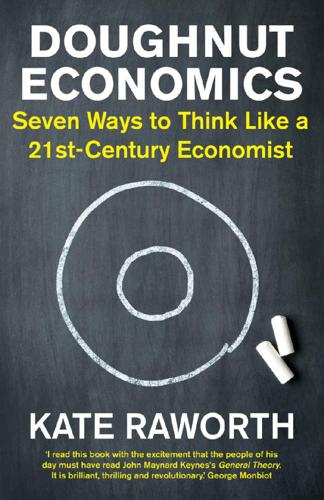
Doughnut Economics: Seven Ways to Think Like a 21st-Century Economist
by
Kate Raworth
Published 22 Mar 2017
No other academic discipline has managed to provoke its own students – the very people who have chosen to dedicate years of their life to studying its theories – into worldwide revolt. Their rebellion has made one thing clear: the revolution in economics has indeed begun. Its success depends not only on debunking the old ideas but, more importantly, on bringing forth the new. As the ingenious twentieth-century inventor Buckminster Fuller once said, ‘You never change things by fighting the existing reality. To change something, build a new model that makes the existing model obsolete.’ This book takes up his challenge, setting out seven mind-shifting ways in which we can all learn to think like twenty-first-century economists.
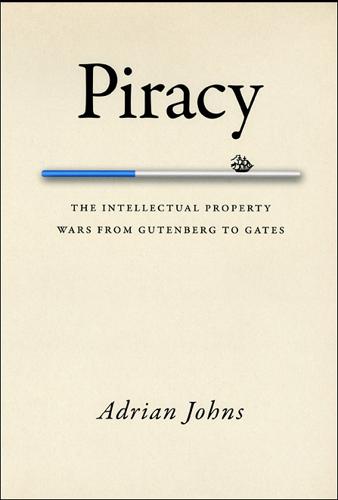
Piracy : The Intellectual Property Wars from Gutenberg to Gates
by
Adrian Johns
Published 5 Jan 2010
To make this pirate revolution work, experts (“technical freaks”) would be needed, and Hoffman recommended that readers find them in the world of amateur radio. He also directed them to Radical Software, a periodical emanating from a New York group of artists in the brandnew homeproduction medium of videotape. Operating oxymoronically as the Center for Decentralized Television, Radical Software was heavily influenced by Marshall McLuhan and Buckminster Fuller, and also by Norbert Wiener’s antiproprietorial vision of information. The magazine proclaimed in the first lines of its first issue the imperative to universalize access to information, not least by abjuring copyright. It included what it called a “pirated” interview with Fuller, and invented a symbol to represent the “antithesis” of ©.
…
In print, there was of course Stewart Brand’s Whole Earth Catalog, a guide to “tools” useful for readers impatient with the conformities of American consumerism. Launched in 1969, the catalogue touched on an extraordinary range of topics, from cybernetics and communication theories to agriculture and medicine, with an eclectic individualism purportedly inspired by Buckminster Fuller. It grew with successive editions until by 1971 it was almost 450 pages long. Its influence was demonstrated by the People’s Computer Company, a project overseen by Brand and Robert Albrecht (whom Ted Nelson hailed as the “caliph of counterculture computerdom”). The PCC was both a publication and an institution.
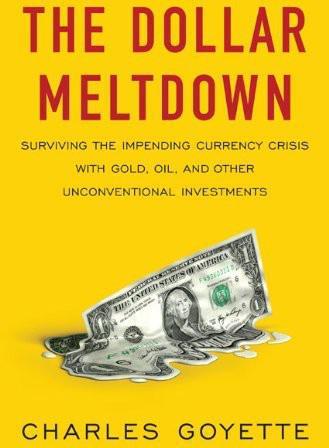
The Dollar Meltdown: Surviving the Coming Currency Crisis With Gold, Oil, and Other Unconventional Investments
by
Charles Goyette
Published 29 Oct 2009
Baytex Energy Trust, BTE; Enerplus Resources Fund Trust, ERF; Penn West Energy Trust, PWE. CHAPTER FOURTEEN Real Things Can’t Live Without ’Em One generation passeth away, and another generation cometh; but the earth abideth forever. —Ecclesiastes 1:4 Wealth is the progressive mastery of matter by mind. —Buckminster Fuller Agriculture When investment legend and commodities bull Jim Rogers says that ten years from now instead of twenty-nine-year-old stockbrokers driving Maseratis, it will be twenty-nine-year-old farmers, he’s making an important point about the shifting economy. People’s spending hierarchies experience dynamic changes in lean economic times.
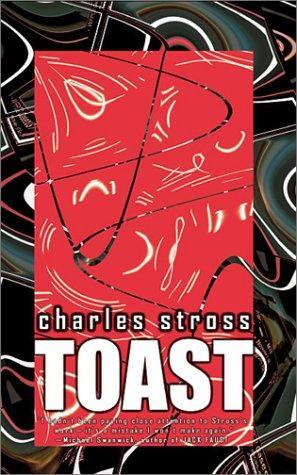
Toast
by
Stross, Charles
Published 1 Jan 2002
We don’t know how to create them or close them; all we can do is send people through, or pile bricks in the opening.” He nearly bites his tongue, because there are more than three worlds out there, and he’s been to at least one of them: the bolt-hole on XK-Masada, built by the NRO from their secret budget. He’s seen the mile-high dome Buckminster Fuller spent his last decade designing for them, the rings of Patriot air defense missiles. A squadron of black diamond-shaped fighters from the Skunk Works, said to be invisible to radar, patrols the empty skies of XK-Masada. Hydroponic farms and empty barracks and apartment blocks await the senators and congressmen and their families and thousands of support personnel.
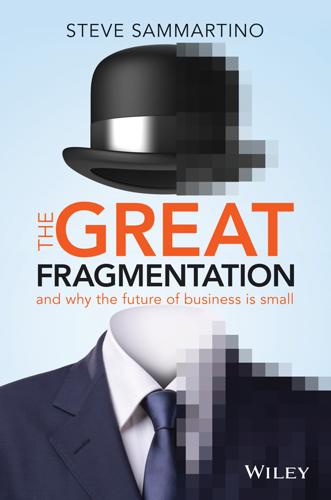
The Great Fragmentation: And Why the Future of All Business Is Small
by
Steve Sammartino
Published 25 Jun 2014
In this sense our world becomes one, where everything is information, where knowledge is converted into actual objects and where the internet crosses the chasm from the virtual into the physical. A virtual physical reality While technology has already been used extensively in the fields of dentistry, medicine, automobiles and aviation, it’s now entering our homes for the first time. Famed designer, inventor and futurist R. Buckminster Fuller spoke of a future where technology would advance to a point where we could do ‘more with less and less until eventually you can do everything with nothing’. Fuller spoke of this phenomenon in 1938 and coined the term ‘ephermalization’ to describe it. Fuller’s vision was that ephermalization would result in ever-increasing standards of living for an ever-growing population despite finite resources.
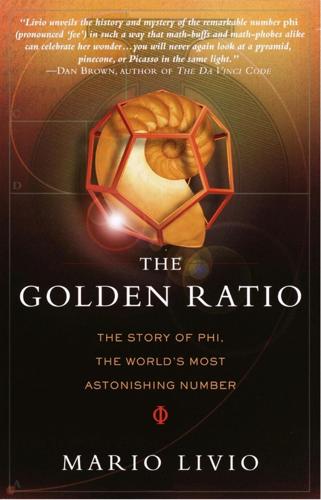
The Golden Ratio: The Story of Phi, the World's Most Astonishing Number
by
Mario Livio
Published 23 Sep 2003
Second, given that we define “beauty,” as, for example, in Webster's Unabridged Dictionary, “the quality which makes an object seem pleasing or satisfying in a certain way,” this raises the question: Is there an aesthetic component to mathematics? And if so, what is the essence of this component? This is a serious question because, as the American architect, mathematician, and engineer Richard Buckminster Fuller (1895–1983) once put it: “When I am working on a problem, I never think about beauty. I think only of how to solve the problem. But when I have finished, if the solution is not beautiful, I know it is wrong.” Finally, the most intriguing question is: What is it that makes mathematics so powerful and ubiquitous?
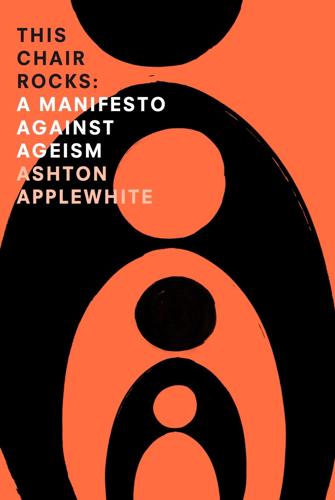
This Chair Rocks: A Manifiesto Against Ageism
by
Ashton Applewhite
Published 10 Feb 2016
It’s not an either/or proposition; people who use social networking sites like Facebook also have more active social lives offline. Inexpensive video technology and storage sites like YouTube give people a new way to tell their story and get feedback, and not just from the grandchildren. My father worked with Buckminster Fuller and enjoyed tracking the work of his acolytes online. It deeply engaged him and ensured a steady trickle of geeky visitors dropping in to talk about the remarkable inventor. Ruth, my partner’s mom, and a bookseller, Skypes prospective customers on her iPad to show them her wares, making her unusually wired for a nonagenarian.
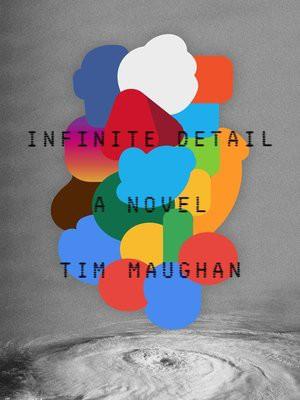
Infinite Detail
by
Tim Maughan
Published 1 Apr 2019
It seems alien to him, like this. He got so used to seeing it shattered for the last decade. Through the recording it looks like an ode to a forgotten, lost future—smeared with bird shit and graffiti, glass panels missing here and there, CCTV cameras retrofitted to its frame. For some reason his mind fills with Buckminster Fuller, that book he read about him, the way he was heralded by designers and architects as a neglected hero, the one that would have built us a utopia if he’d been given half a chance. And how someone had told him that was all bullshit, and people thought of him so well only because his plans never got built.

Brave New Work: Are You Ready to Reinvent Your Organization?
by
Aaron Dignan
Published 1 Feb 2019
Except, it turns out, it doesn’t, and it won’t.” Growth has delivered extraordinary benefits to humanity, but at a cost. The question is: Can we lift everyone up without destroying the planet? And even if we can, what then? GDP growth can’t continue forever with finite resources. Of course, this is not a new idea. In 1968 R. Buckminster Fuller warned us about this in his masterwork Operating Manual for Spaceship Earth. Decades earlier, philosopher Bertrand Russell offered a damning critique of our approach to abundance in his essay “In Praise of Idleness.” Suppose that, at a given moment, a certain number of people are engaged in the manufacture of pins.

The End of Medicine: How Silicon Valley (And Naked Mice) Will Reboot Your Doctor
by
Andy Kessler
Published 12 Oct 2009
The structure reminded Smalley of geodesic domes—the ones that were always on the cover of Popular Science magazine as the futuristic structure we might all someday be living in, except we couldn’t hang picture frames on the walls. Anyway, he called them Buckminsterfullerene balls, after, well, Buckminster Fuller, who came up with geodesic domes. The rest of the world called them buckyballs. Much better name. Buckyballs were strong and could carry electricity and because they were round, were kind of slippery. Kroto, Smalley and Curl split the 1996 Nobel Prize in Chemistry. But in 1991, researchers at NEC in Japan had opened up the fullerene structure.

User Friendly: How the Hidden Rules of Design Are Changing the Way We Live, Work & Play
by
Cliff Kuang
and
Robert Fabricant
Published 7 Nov 2019
But when I first visited, in the summer of 2017, about a year and a half into the decade-long project, the perfunctory lobby offered a hint of the constant construction and reconstruction that’s been going on. There was a steel door leading to the inner sanctum, and sprays of dust emanating from all around the door jamb, as if something had just exploded on the other side. Through the door, there was a reception desk and a painted message on the wall, seven feet tall, from Buckminster Fuller: “The best way to anticipate the future is to design it.” (Fuller, forefather of design thinking, had been a formative influence on the Stanford professor John Arnold.) It was dark, and the rooms beyond weren’t rooms but rather curtained-off sound-stages. There was a sundeck, a hallway, an elevator, a stateroom (the cruise-ship word for a hotel room), a casino, a bar—all the pieces of a real-life cruise experience.

Tools of Titans: The Tactics, Routines, and Habits of Billionaires, Icons, and World-Class Performers
by
Timothy Ferriss
Published 6 Dec 2016
Chris is one of the people who generously mentored me in the startup investing game. The other majors include Naval Ravikant (page 546), Kevin Rose (page 340), and Mike Maples, who got me started (see the Real-World MBA on page 250). Chris mentioned several books when he appeared on my podcast, including I Seem to Be a Verb by Buckminster Fuller. 48 hours later, used copies were selling for $999 on Amazon. Are You Playing Offense or Defense? Despite the fact that people refer to Chris as a “Silicon Valley investor,” he hasn’t lived in San Francisco since 2007. Instead, he bought a cabin in rural Truckee, Tahoe’s less-expensive neighbor, and moved to prime skiing and hiking country.
…
MacDonald), At Home: A Short History of Private Life; The Lost Continent: Travels in Small-Town America (Bill Bryson), A Curious Discovery: An Entrepreneur’s Story (John Hendricks) Rubin, Rick: Tao Te Ching (Lao Tzu, translation by Stephen Mitchell), Wherever You Go, There You Are (Jon Kabat-Zinn) Sacca, Chris: Not Fade Away: A Short Life Well Lived (Laurence Shames and Peter Barton), The Essential Scratch & Sniff Guide to Becoming a Whiskey Know-It-All; The Essential Scratch & Sniff Guide to Becoming a Wine Expert (Richard Betts), How to Get Filthy Rich in Rising Asia: A Novel (Mohsin Hamid), I Seem to Be a Verb (R. Buckminster Fuller) Schwarzenegger, Arnold: The Churchill Factor: How One Man Made History (Boris Johnson), Free to Choose (Milton Friedman), California (Kevin Starr) Sethi, Ramit: Age of Propaganda: The Everyday Use and Abuse of Persuasion (Anthony Pratkanis and Elliot Aronson), The Social Animal (Elliot Aronson), Getting Everything You Can Out of All You’ve Got (Jay Abraham), Mindless Eating (Brian Wansink), The Robert Collier Letter Book (Robert Collier), Never Eat Alone, Expanded and Updated: And Other Secrets to Success, One Relationship at a Time (Keith Ferrazzi), What They Don’t Teach You at Harvard Business School (Mark H.
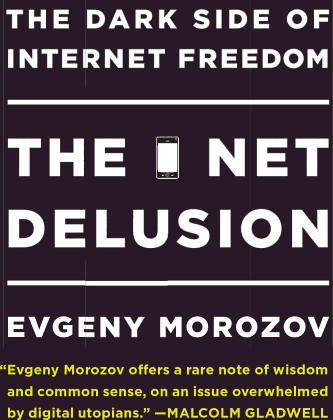
The Net Delusion: The Dark Side of Internet Freedom
by
Evgeny Morozov
Published 16 Nov 2010
Boorstin wrote these words when many political scientists and policymakers were still awaiting the triumph of “teledemocracy,” in which citizens would use television to not only observe but also directly participate in politics. (The hope that new technology could enable more public participation in politics predates television; back in 1940 Buckminster Fuller, the controversial American inventor and architect, was already lauding the virtues of “telephone democracy,” which could enable “voting by telephone on all prominent questions before Congress.”) In hindsight, the science-fiction writer Ray Bradbury was closer to the truth in 1953 than Boorstin ever was in 1978.
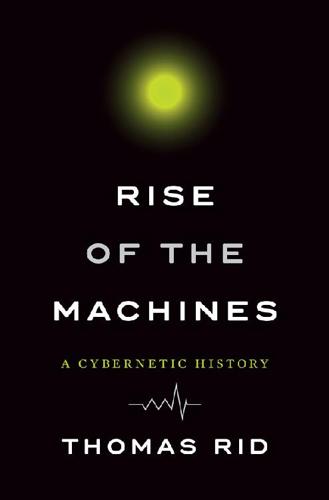
Rise of the Machines: A Cybernetic History
by
Thomas Rid
Published 27 Jun 2016
One afternoon, probably in March 1966 in the hills of San Francisco, Brand dropped a bit of LSD and went up on a roof overlooking the city. It was a form of escape. He sat in a blanket, shivering in the cold spring air, overlooking the hills, lost in enhanced thought: And so I’m watching the buildings, looking out at San Francisco, thinking of Buckminster Fuller’s notion that people think of the earth’s resources as unlimited because they think of the earth as flat. I’m looking at San Francisco from 300 feet and 200 micrograms up and thinking that I can see from here that the earth is curved. I had the idea that the higher you go the more you can see earth as round.29 Yet no photograph of the whole Earth was publicly available at the time, Brand thought, despite nearly ten years of US space exploration in a Cold War arms race that extended even beyond the planet.

Wonderland: How Play Made the Modern World
by
Steven Johnson
Published 15 Nov 2016
(Just imagine the impact on climate change if we’d had thirty years of using our automobiles only for weekend pleasure trips.) But, of course, that alternate past didn’t happen. Instead, the mall triggered decades of suburban ascendancy, and the Walt Disney Corporation turned EPCOT into yet another theme park, with its bizarre and sad hybrid of Buckminster Fuller futurism and It’s-a-Small-World globalism. Why weren’t progress cities built? The easiest way to dismiss the Gruen/EPCOT vision is to focus on the centrality of the mall itself. Now that mall culture is in decline—in the United States and Europe at least—we understand that the overly programmed nature of the mall environment ended up being its fatal flaw.
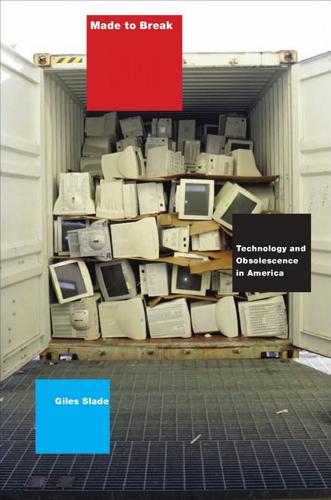
Made to Break: Technology and Obsolescence in America
by
Giles Slade
Published 14 Apr 2006
In the span of a few years, his mad-hatter effusions drew followers to him from a wide array of disciplines and professions. As the recipient of a prestigious Albert Schweitzer fellowship at New York’s Fordham University, he entered the American mainstream, where he alienated, befriended, or otherwise unsettled an impressive assortment of American cultural leaders, from Woody Allen, John Cage, Joseph Campbell, Buckminster Fuller, Abbie Hoffman, and William Jovanovich to Alan Kay, Stanley Kubrick, Timothy Leary, Victor Papanek, Ezra Pound, Carl Sagan, Tom Wolfe, and Andy Warhol. By mid-century, McLuhan had become a recognized critic of advertising, like Vance Packard before him. McLuhan also had a ready explanation for Packard’s popularity in criticizing the excesses of advertising.
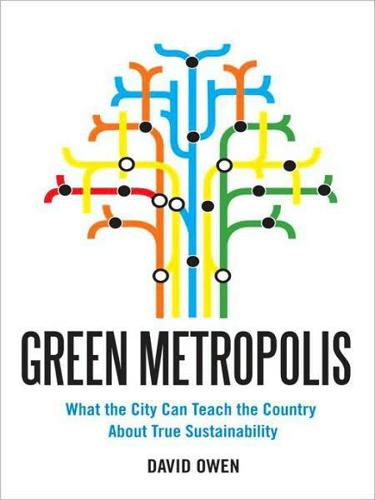
Green Metropolis: Why Living Smaller, Living Closer, and Driving Less Are Thekeys to Sustainability
by
David Owen
Published 16 Sep 2009
Stores, schools, factories, and other nonresidential uses would be concentrated, mall-style, in the central core. Individual heating and air-conditioning units would be unnecessary because the city itself would be climate-controlled. The domed roof would be made of triangular glass panels and would owe a design debt to R. Buckminster Fuller. “Most houses in Compact City would have two floors in order to conserve base area,” the authors wrote, with the self-assurance of professionally logical men who are certain they have thought of everything (Dantzig was an inventor of linear programming). “Design of both the interior and exterior of these houses would vary according to the preferences of the residents.

The Fourth Age: Smart Robots, Conscious Computers, and the Future of Humanity
by
Byron Reese
Published 23 Apr 2018
He did not reject property ownership itself; rather, he argued that we should create “a national fund, out of which there shall be paid to every person, when arrived at the age of twenty-one years, the sum of Fifteen Pounds sterling, as a compensation in part, for the loss of his or her natural inheritance, by the introduction of the system of landed property.” The idea of a UBI never fell entirely out of favor. Buckminster Fuller came out in favor of it quite forcefully: We must do away with the absolutely specious notion that everybody has to earn a living. . . . We keep inventing jobs because of this false idea that everybody has to be employed at some kind of drudgery because, according to Malthusian-Darwinism theory, he must justify his right to exist.
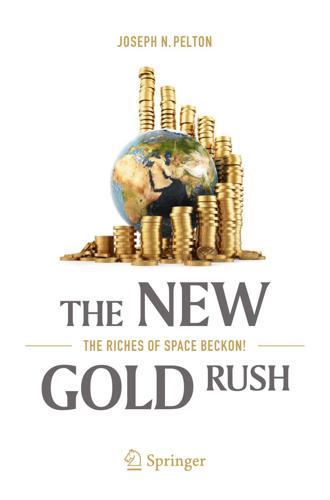
The New Gold Rush: The Riches of Space Beckon!
by
Joseph N. Pelton
Published 5 Nov 2016
It was Ray Kurzwiel, the Artificial Intelligence (AI) guru, who popularized the term Singularity. Dr. Peter Diamandis, who in cooperation with others founded the International Space University and then went on to found the Singularity University and also breathed life into the wonderful X-Prize initiative, simply calls it “abundance.” And before him R. Buckminster Fuller called it “transcendence.” No matter what you call it, the idea is to go ahead and think outside the box. Indeed the trick is to think outside the limits of the 6 sextillion-ton spaceship we call Planet Earth. Fuller, Kurzweil, Diamandis and other space enthusiasts, including the authors, are trying to convince our economic and political leaders that the trick is to think outside constraints of the current world economic systems and the resources we have trapped within the orb we call Earth.

Possible Minds: Twenty-Five Ways of Looking at AI
by
John Brockman
Published 19 Feb 2019
While Lois and the team did the heavy lifting on the final mechanicals for WEC, Stewart and I sat together in a corner for two days, reading, underlining, and annotating the same paperback copy of Cybernetics that Cage had handed to me the year before, and debating Wiener’s ideas. Inspired by this set of ideas, I began to develop a theme, a mantra of sorts, that has informed my endeavors since: “new technologies = new perceptions.” Inspired by communications theorist Marshall McLuhan, architect-designer Buckminster Fuller, futurist John McHale, and cultural anthropologists Edward T. “Ned” Hall and Edmund Carpenter, I started reading avidly in the fields of information theory, cybernetics, and systems theory. McLuhan suggested I read biologist J. Z. Young’s Doubt and Certainty in Science, in which he said that we create tools and we mold ourselves through our use of them.
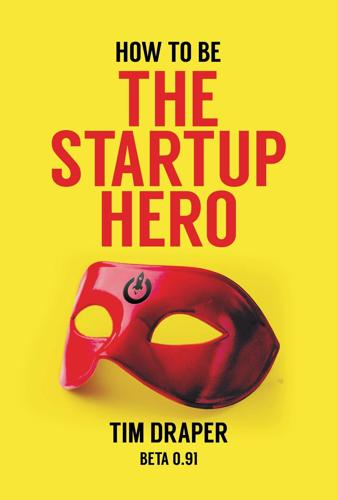
How to Be the Startup Hero: A Guide and Textbook for Entrepreneurs and Aspiring Entrepreneurs
by
Tim Draper
Published 18 Dec 2017
Eisenhower Real integrity is doing the right thing, knowing that nobody's going to know whether you did it or not. Oprah Winfrey Have the courage to say no. Have the courage to face the truth. Do the right thing because it is right. These are the magic keys to living your life with integrity. W. Clement Stone Integrity is the essence of everything successful. R. Buckminster Fuller The impossible often has a kind of integrity which the merely improbable lacks. Douglas Adams Nothing more completely baffles one who is full of trick and duplicity, than straightforward and simple integrity in another. Charles Caleb Colton Keeping your word can be extraordinarily painful, especially when people's interests and motivations change.

Green Swans: The Coming Boom in Regenerative Capitalism
by
John Elkington
Published 6 Apr 2020
LOSING CONTROL So how can we ensure that the coming transformations push us in the right direction, rather than pulling us down into exponential vortexes with increasingly Black Swan characteristics? Someone who had a profound influence on my thinking in this area, and with whom I had an impromptu breakfast in Reykjavik back in 1977, was R. Buckminster Fuller. “Bucky,” as his many fans called him, noted that the key thing about our planet, which he may have been the first to dub “Spaceship Earth,” is that we took over the controls only to find there was no operating manual. As a result, we often find out that things we have been doing to improve our lives are destroying the health—and even the futures—of other people and other species.
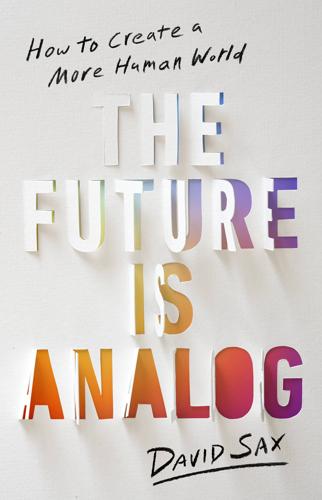
The Future Is Analog: How to Create a More Human World
by
David Sax
Published 15 Jan 2022
The smart city promised that our destiny lay in digitizing the city’s infrastructure, but the pandemic revealed a deeper truth about the analog heart of city life. The origins of the smart city date back to the 1930s and the rise of both automobiles and modernist design, when legendary architects such as Frank Lloyd Wright and Le Corbusier presented their sweeping visions for the future. Wright’s Broadacre City, Corbusier’s Radiant City, and, later, Buckminster Fuller’s insane plans to cover whole swaths of cities with giant glass structures were marvels of futurist technological utopianism. Each reflected the aesthetics of its creator, but they shared similar traits, including clusters of identical skyscrapers, broad boulevards and motorways, flying machines and pods, manicured lawns, and ample parking.
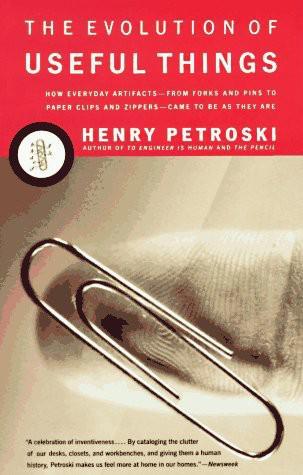
The Evolution of Useful Things
by
Henry Petroski
Published 2 Jan 1992
Such relative advantages and disadvantages among artifacts lead to diversity rather than extinction. (photo credit 13.4) Streamlining American automobiles began with some subtle changes introduced in the 1920s, but the solidly established squarish Fords set the aesthetic standard. Radical streamlining, such as introduced by Buckminster Fuller in his Dymaxion car exhibited in 1935 at the Chicago World’s Fair, was clearly “futuristic,” and hence not taken as seriously as cars of the present. The sensibly streamlined 1934 Chrysler Airflow rounded and tapered the boxy profile, fenders, and windows of contemporary designs, but it was not a commercial success.
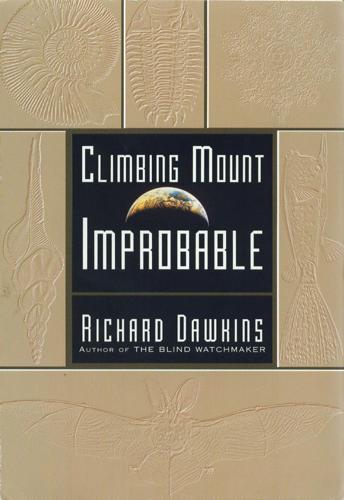
Climbing Mount Improbable
by
Richard Dawkins
and
Lalla Ward
Published 1 Jan 1996
They too illustrate beautiful symmetries of various orders, equivalent to kaleidoscopes with two, three, four, five, six and more mirrors. They have tiny skeletons made of chalk with a beauty and elegance that has kaleidoscopic embryology written all over it. The kaleidoscopic masterpiece in Figure 7.6 might have been designed by the visionary architect Buckminster Fuller (whom I was once privileged to hear, in his nineties, lecturing for a mesmerizing three hours without respite). Like his geodesic domes it relies for its strength on the structurally robust geometric form of the triangle. It is clearly the product of a kaleidoscopic embryology of a high order.

QI: The Second Book of General Ignorance
by
Lloyd, John
and
Mitchinson, John
Published 7 Oct 2010
It’s long been known that one form of pure carbon (graphite) can be turned into another (diamond) by heat and pressure. But the Bayreuth team used neither. They used a third form of pure carbon, fullerite, also known as buckminsterfullerene or ‘buckyballs’. Its sixty carbon atoms form a molecule shaped like a soccer ball, or like one of the geodesic domes invented by the American architect Richard Buckminster Fuller (1895–1983). The carbon atoms in diamond are arranged in cubes stacked in pyramids; the new substance is made of tiny, interlocking rods. These are called ‘nanorods’ because they are so small – nanos is Greek for ‘dwarf’. Each is 1 micron (one millionth of a metre) long and 20 nanometres (20 billionths of a metre) wide – about 1/50,000th of the width of a human hair.
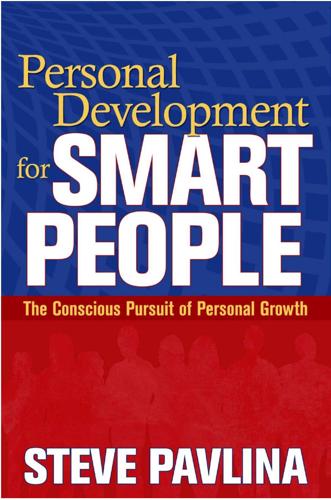
Personal Development for Smart People: The Conscious Pursuit of Personal Growth
by
Steve Pavlina
Published 14 Oct 2008
Contents Introduction "When I'm working on a problem, about beauty. I never think I think only how to solve the problem. But when I have finished, if the solution is not beautiful, I know it is wrong." — R. BUCKMINSTER FULLER 1 • Do y o u remember the exact m o m e n t you first became interested in personal development? I certainly do. It happened in January 1991 while I was sitting in a jail cell. I'd just been arrested for felony grand theft. This wasn't my first run-in with the law, so I knew was in trouble. I was 19 years old. I began stealing shortly after moving to Berkeley, California, during my first semester at UC Berkeley.

Heart of the Machine: Our Future in a World of Artificial Emotional Intelligence
by
Richard Yonck
Published 7 Mar 2017
In contrast, technological evolution follows a much more exponential pattern of growth, due at least in part to the positive feedback loops generated by prior advances. 3. A considerable volume of writing and research supports the concept of accelerating technological change, including the works of technologists Stanislaw Ulam, R. Buckminster Fuller, Ray Kurzweil, Vernor Vinge, and Kevin Kelly. 4. The Art of Human-Computer Interface Design. Laurel, B., Editor. Addison-Wesley. 1990. Chapter 1 1. “Emergence of Individuality in Genetically Identical Mice.” Julia Freund, Andreas M. Brandmaier, Lars Lewejohann, et al. Science, Vol. 340, No. 6133 (May 10, 2013), pp. 756–759, doi:10.1126/science.1235294. 2.
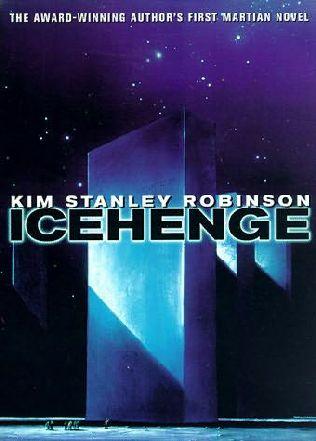
Icehenge
by
Kim Stanley Robinson
Published 29 May 1994
In the tapestry gallery, among the complicated wall hangings, there was a bulletin screen filled with messages and games and jokes. I stopped before it, and a sentence struck my eye. “Only under the stresses of total social emergencies do the effectively adequate alternative technical strategies synergetically emerge.” Jeez, I thought, what prose artist penned that? I looked down — the ascription was to one Buckminster Fuller. The quote continued: “Here we witness mind over matter and humanity’s escape from the limitations of his identity with some circumscribed geographical locality.” That was for sure. Part of the bulletin screen was reserved for suggestions for the name of the starship. Anyone could pick his color and typeface, and tap a name onto the space on the screen.

A Devil's Chaplain: Selected Writings
by
Richard Dawkins
Published 1 Jan 2004
Mirabile dictu, exactly this pattern has been discovered among carbon atoms. The team responsible, including Sir Harry Kroto of Sussex University, won the 1996 Nobel Prize for Chemistry. Called Buckminsterfullerene, it is an elegant sphere of 60 carbon atoms, linked up as 20 hexagons interspersed with 12 pentagons. The name honours the visionary American architect Buckminster Fuller (whom I was privileged to meet when he was a very old man2) and the spheres are affectionately known as buckyballs. They can combine together to make larger crystals. Like graphite sheets, buckyballs make good lubricants, probably because of their spherical shape: they presumably work like tiny ball bearings.
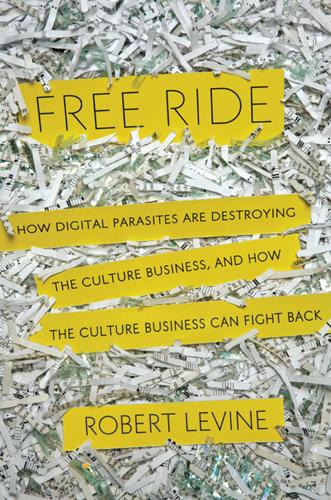
Free Ride
by
Robert Levine
Published 25 Oct 2011
On the other hand, information wants to be free, because the cost of getting it out is getting lower and lower all the time. So you have these two fighting against each other. Brand’s own information wanted to be expensive, and he made a small fortune in the publishing business. A bohemian intellectual who befriended both Buckminster Fuller and Ken Kesey, Brand appeared as a character in Tom Wolfe’s Electric Kool-Aid Acid Test and campaigned for NASA to release a picture of Earth from space. As living off the land became part of the post-hippie zeitgeist, he created the Whole Earth Catalog, an influential compendium of advice that Steve Jobs once referred to as “sort of like Google in paperback form.”19 He started out peddling an early version from the back of his truck and went on to sell more than a million copies of a later edition.

Kanban in Action
by
Marcus Hammarberg
and
Joakim Sunden
Published 17 Mar 2014
It consists of three katas, or routines, if you like, that build on the scientific method. The nice part about using the scientific method is that no result is bad; it’s only a result. You’ll use the outcome to learn and to improve your next hypothesis. There is no such thing as a failed experiment, only experiments with unexpected outcomes. R. Buckminster Fuller The next secret to why Kanban Kata works is that it takes small steps. You’re trying to improve from your current condition toward an improved target condition. The road toward the target is unknown, and the best way to navigate it is in small steps. These steps are the experiments that you’re conducting based on your hypothesis.
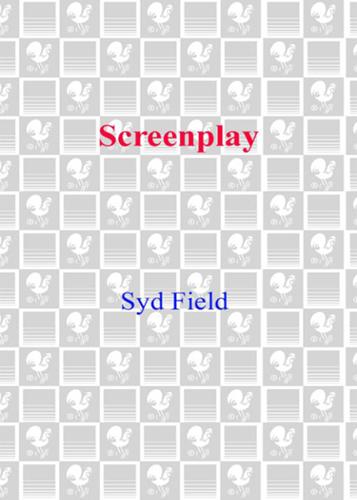
Screenplay: The Foundations of Screenwriting
by
Syd Field
Published 17 Dec 2007
Once you know what you’re doing, you’re ready for the next step—writing the sequence. 11 The Sequence “Form follows structure; structure doesn’t follow form.” —I. M. Pei Architect “Synergy” is the study of systems, the behavior of systems as a whole, independent of their working parts. R. Buckminster Fuller, the noted scientist and humanitarian, creator of the geodesic dome, stresses the concept of synergy as the relationship between the whole and its parts; that is, a system. The screenplay is comprised of a series of elements that can be compared to a system, a number of individually related parts arranged to form a unity, or whole: The solar system is composed of planets orbiting the sun; the circulatory system works in conjunction with all the organs of the body; a stereo system, either analog or digital, is made up of amplifier, preamp, tuner, CD/DVD player, cassette player, speakers, turntable, cartridge, needle, and/or other technology.
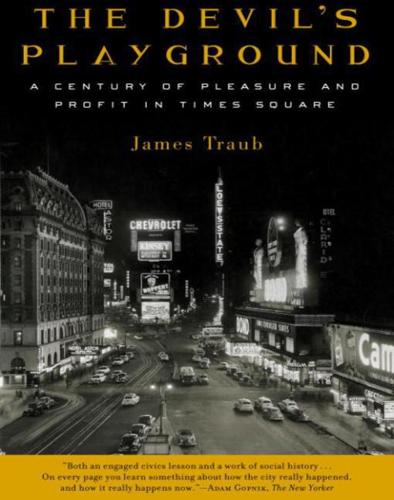
The Devil's Playground: A Century of Pleasure and Profit in Times Square
by
James Traub
Published 1 Jan 2004
Unlike Alexander Parker’s pastoralized plaza, Cityscape offered an extremely inventive and even playful rendition of 42nd Street’s character, adapting its identity as a rialto of popular entertainment to a new culture and new technology. Weinstein hired the artists and designers who had created the celebrated Czech pavilion at Expo 67 in Montreal, including Milos For-man, as well as the design firm of Chermayeff & Geismar, which was responsible for the American pavilion—the one with Buckminster Fuller’s geodesic dome—and the accompanying exhibit at Osaka in 1970. Cityscape was not a preservation project: its premise was that 42nd Street needed to be projected forward rather than backward. The design firm produced a cutaway aerial view of the project which today has about it a Flash Gordon sense of the fantastical.

Whole Earth Discipline: An Ecopragmatist Manifesto
by
Stewart Brand
Published 15 Mar 2009
Every interview with a public figure should include the question “What have you been wrong about, and how did that change your views?” The answer will tell us if the person is intellectually honest or a tale spinner with delusions of infallibility. Let me quickly furnish a partial list of things I’ve been wrong about in public. In the 1960s, I pushed communes as a path to the future, Buckminster Fuller domes as habitable, and cocaine as harmless. In the 1970s, I was sure the 1973 oil crisis would lead to police in the streets of the United States, that nuclear power was bad, and that small was always beautiful, villages especially. I was totally wrong about the Y2K bug in 2000. In 2003 I was so sure that a Democrat would win the 2004 presidential election that I made a public bet about it.
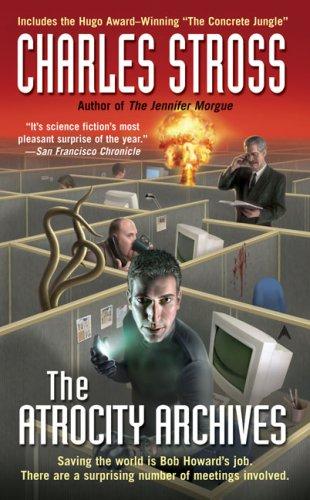
Atrocity Archives
by
Stross, Charles
Published 13 Jan 2004
More dead tree stumps; the ground beneath me, the crunching--now I can see that it's grass, freeze-dried and mummified beneath a layer of carbon dioxide frost. Hills or low mounds of some kind rise in the near distance, and then- "Disneyland?" I hear myself saying. Alan laughs quietly. "Not Disneyland. Think Mad King Ludwig's last commission, as executed by Buckminster Fuller." Cheesecake crenellations, battlements with machicolations, moat and drawbridge and turrets. Spiky pointed roofs on the towers--like the police stations in West Belfast, designed to deflect incoming mortar fire. Arrow slots filled with mirror glass half a metre thick. Radomes and antenna masts in the courtyard where you'd expect armoured knights to mount up.

Wireless
by
Charles Stross
Published 7 Jul 2009
We don’t know how to create them or close them; all we can do is send people through, or pile bricks in the opening.” He nearly bites his tongue, because there are more than three worlds out there, and he’s been to at least one of them: the bolt-hole on XK-Masada, built by the NRO from their secret budget. He’s seen the mile-high dome Buckminster Fuller spent his last decade designing for them, the rings of Patriot air-defense missiles. A squadron of black diamond-shaped fighters from the Skunk Works, said to be invisible to radar, patrols the empty skies of XK-Masada. Hydroponic farms and empty barracks and apartment blocks await the senators and congressmen and their families and thousands of support personnel.

Cities Are Good for You: The Genius of the Metropolis
by
Leo Hollis
Published 31 Mar 2013
Perhaps we should start again and build our cities from scratch? Masdar City is currently being built by the Abu Dhabi Future Energy Company, designed by the leading architect Norman Foster, in the desert. Foster’s career has always been about pushing the boundaries of architecture, having as a young man been deeply influenced by the American designer Buckminster Fuller, whose geodesic dome (famously designed on a massive scale as a protection for the city) was a shining example of ‘doing more with less’. With iconic commissions such as the HSBC Bank in Hong Kong, the Gherkin (30 St Mary Axe) in London, and the truly impressive Beijing Airport, Foster has been at the forefront of finding a technical solution to questions of sustainability, investing in new materials, working on designs that reduce energy use, and always remaining visually innovative.
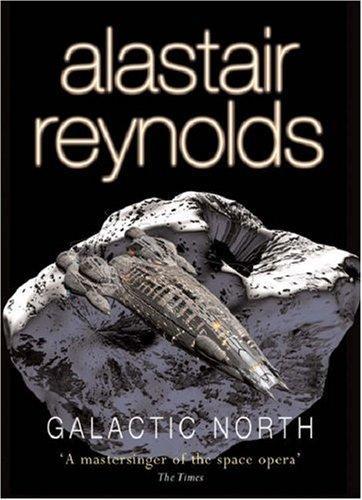
Galactic North
by
Alastair Reynolds
Published 14 Feb 2006
She ordered another mocha and downed it replying. "Use your imagination. Only the Demarchy knows how to synthesise it." "It's also useless as a weapon." "Depends. There's an application you should know about." "What?" "Keeping this city afloat - and I'm not talking about economic solvency. Do you know about Buckminster Fuller? He lived about four hundred years ago; believed absolute democracy could be achieved through technological means." "The fool." "Maybe. But Fuller also invented the geodesic lattice which determines the structure of the buckyball; the closed allotrope of tubular fullerene. The city owes him on two counts."
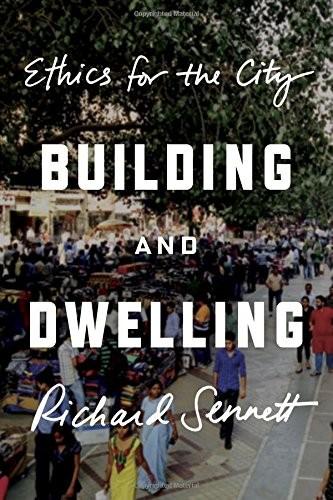
Building and Dwelling: Ethics for the City
by
Richard Sennett
Published 9 Apr 2018
The structural principles for floating shells came from the Russian engineer Vladimir Shukhov, who made a huge, self-supporting curved-roof shed in Vyksa in 1897; freed of any interior supports, it could be put to any use. The geodesic dome is Vyksa’s heir, the domes being constructed by a lattice of interlocking triangles covered by a protective skin. Buckminster Fuller thought such a dome, both super-light and super-strong, could be magnified almost to infinity; in his zanier moments he hoped to cover entire cities with geodesic domes. More modest in size, but still huge, geodesic domes like the Fukuoka Dome in Japan permit a variety of uses – as does the Millennium Dome (though not strictly geodesic) which Richard Rogers created in London in 1999.
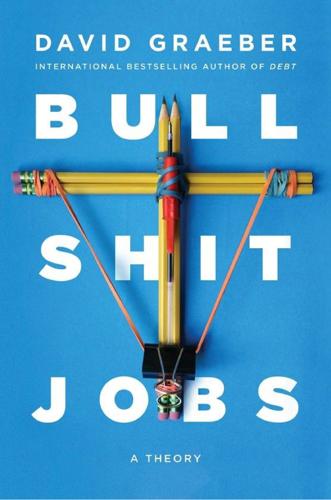
Bullshit Jobs: A Theory
by
David Graeber
Published 14 May 2018
how, over the course of the twentieth century, work came to be increasingly valued primarily as a form of discipline and self-sacrifice We keep inventing jobs because of this false idea that everyone has to be employed at some sort of drudgery because, according to Malthusian Darwinian theory, he must justify his right to exist. —Buckminster Fuller However this may be, the “Gospel of Wealth” counteroffensive has been successful, and the captains of industry, first in America, then increasingly everywhere, have been able to convince the public that they, and not those they employ, are the real creators of prosperity. Their very success, however, created an inevitable problem.

The Job: The Future of Work in the Modern Era
by
Ellen Ruppel Shell
Published 22 Oct 2018
Indeed, despite their staggering market caps, no American Internet information provider has come close to providing the 443,000 American jobs (many of them union jobs) directly supported by Kroger, the nation’s largest supermarket chain. In 2017 Apple, the nation’s most profitable company, had only 77,000 direct US employees. There’s a fancy word for this phenomenon: ephemeralization, coined by Buckminster Fuller in the 1930s to describe the concept of “doing more with less.” Throughout human history, doing more with less resulted in efficiencies that helped make our world a better place. But arguably, we have reached a limit. By building more human-like capabilities into our machines, we seem to have reduced the need for humans in most positions along the value chain in a growing number of industries.
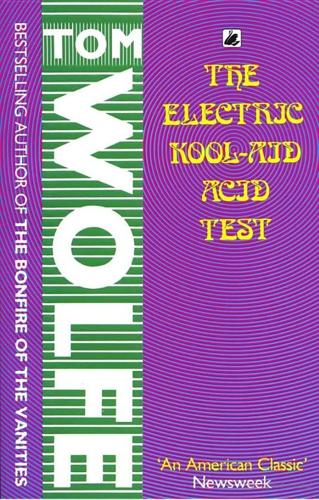
The Electric Kool-Aid Acid Test
by
Tom Wolfe
Published 1 Jan 1968
The sounds roiling around in the globe like a typhoon. Movies and tapes of the past, tapes and video tapes, broadcasts and pictures of the present, tapes and humanoid sounds of the future—but all brought together now—here and now— Kairos—into the dilated cerebral cortex ... The geodesic dome, of course, was Buckminster Fuller's inspiration. The light projections were chiefly Gerd Stern's, Gerd Stern of the USCO group, although Roy Seburn had already done a lot with them and Page Browning showed a talent that surprised everybody. But the magic dome, the new planet, was Kesey and the Pranksters. The idea went beyond what would later be known as mixed-media entertainment, now a standard practice in "psychedelic discotheques" and so forth.
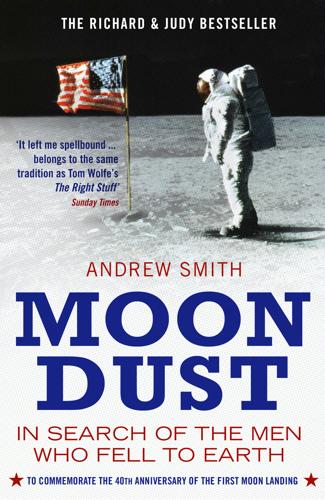
Moondust: In Search of the Men Who Fell to Earth
by
Andrew Smith
Published 3 Apr 2006
I realize that I’ve been holding my breath for some time: we both exhale and sit in silence for a moment, like a pair of strangers who’ve just had reckless sex and now don’t know what to say to each other. Later research reveals “buckyballs” to be a recently discovered form of molecule, named after the brilliant thinker/ inventor/engineer/cosmologist Buckminster Fuller. And if I can’t quite remember what the question was by this point, I have managed to grasp that I’m being asked to contemplate the near-certain extinction of my species through something other than boredom or stupidity, possibly in my own lifetime, or even next Tuesday. And now my mind reels back to the previous evening and a fund-raising dinner for Buzz Aldrin’s National Space Society.
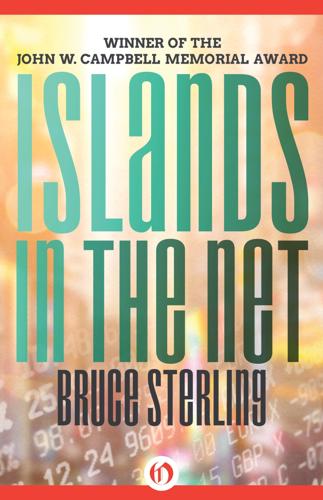
Islands in the Net
by
Bruce Sterling
Published 31 May 1988
He vanished with the baby and brought her back freshly changed, with her bottle. Laura sighed. “You had a good time, David, didn’t you?” “You wouldn’t believe what they have out there,” David said, sprawling onto the couch with the baby in his lap. “I met another one of the Andreis. I mean his name’s not Andrei, but he acted just like him. Korean guy. Big Buckminster Fuller fan. They’re making massive arcologies out of nothing! For nothing! Concretized sand and seastone. They sink these iron grates into the ocean, run some voltage through, and get this: solids begin to accrete … calcium carbonate, right? Like seashells! They’re growing buildings offshore. Out of this ‘seastone.’

City: A Guidebook for the Urban Age
by
P. D. Smith
Published 19 Jun 2012
If, as scientists predict, the glaciers melt and sea levels rise dramatically, then ship-cities such as Armada in China Miéville’s The Scar, or cities built out across water, as in architect Kenzo Tange’s elegant ‘Plan for Tokyo’ (1960) which extended the Japanese capital out into the bay, might become reality. Transparent domes protecting cities are another idea popular with science fiction authors. In 1968, American futurist Buckminster Fuller actually proposed covering part of New York City in a vast air-conditioned geodesic dome. And who knows – in an age of climate change, such a scheme might indeed be necessary to protect downtowns from violent storms or stifling heat. Other urban futures include walking cities and plug-in cities, such as those proposed in the 1960s by the wonderfully inventive British architectural group Archigram, mobile or nomadic cities as described in Christopher Priest’s novel Inverted World, underwater cities, inflatable cities, cities on stilts (for example, architect Arata Isozaki’s ‘City in the Air’, from 1960), and temporary cities such as Black Rock City.
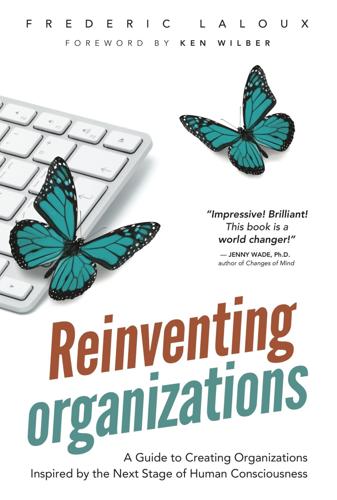
Reinventing Organizations: A Guide to Creating Organizations Inspired by the Next Stage of Human Consciousness
by
Frederic Laloux
and
Ken Wilber
Published 9 Feb 2014
May it help many readers gather inspiration to create businesses, schools, hospitals, or nonprofits inspired by this emerging new wave of consciousness that is starting to transform the world. Ken Wilber Denver, Colorado Fall 2013 Introduction THE EMERGENCE OF A NEW ORGANIZATIONAL MODEL You never change things by fighting the existing reality. To change something, build a new model that makes the existing model obsolete. Richard Buckminster Fuller Aristotle, the great Greek philosopher and scientist, proclaimed in a treatise written in 350 BC that women have fewer teeth than men.1 Today we know this is nonsense. But for almost 2,000 years, it was accepted wisdom in the Western World. Then one day, someone had the most revolutionary of ideas: let’s count!
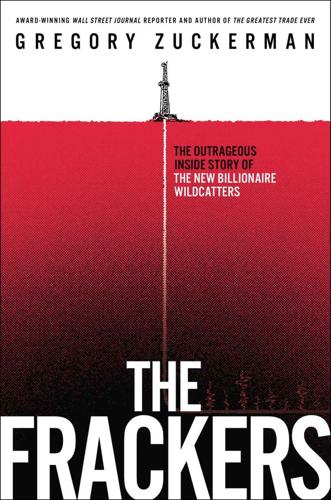
The Frackers: The Outrageous Inside Story of the New Billionaire Wildcatters
by
Gregory Zuckerman
Published 5 Nov 2013
He managed his company with an informality and dedication that inspired employees. “George avoided all publicity,” says Clark, the senior executive. “He was just work, tennis, work, tennis, work, tennis.”7 Mitchell evolved into an unusual energy baron. A few years earlier, he had met R. Buckminster Fuller, a futurist and an early environmental activist. Fuller believed human sustainability was in jeopardy and that societies needed to turn to renewable energy sources, including solar and wind power. Mitchell became convinced of the need to pursue alternative energy options in addition to fossil fuels.
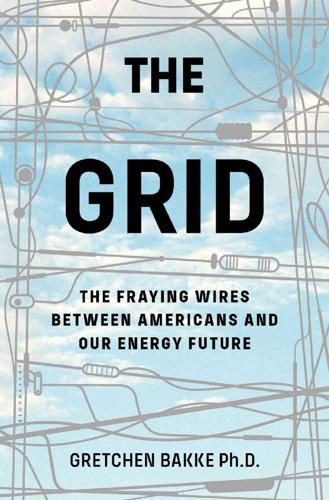
The Grid: The Fraying Wires Between Americans and Our Energy Future
by
Gretchen Bakke
Published 25 Jul 2016
decentralized power options: Carter also did a great deal to strengthen America’s reliance on fossil fuels, by encouraging more coal use and the exploitation of domestic oil. His problem was energy security and he was very catholic in his approach to solving it. Williams (1997), 325. commitment to fundamental change: This process might have been inevitable, for as Buckminster Fuller famously pointed out, “All the technical curves rise in tonnage and volumetric size to reach a giant peak after which miniaturization sets in. After that a more economic art takes over which also goes through the same cycle of doing progressively more with less.” Critical Path (1981). the project and opted out: Hirsh (1999), 82.
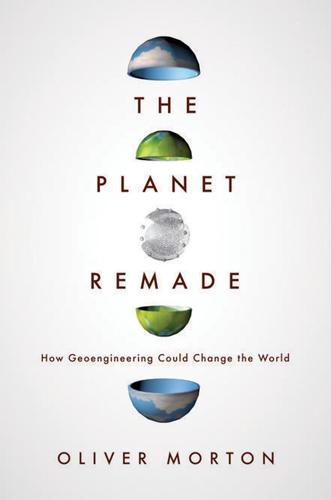
The Planet Remade: How Geoengineering Could Change the World
by
Oliver Morton
Published 26 Sep 2015
The increase he found over the years and decades that followed became perhaps the single most important piece of evidence for anthropogenic global warming. Others made the systems-thinking link from capsule to planet through imagination, rather than hardware. They pictured their homeworld as a sealed ‘Spaceship Earth’ equivalent to the capsules from which it was seen. The visionary thinker R. Buckminster Fuller probably invented the idea and certainly promulgated it. ‘Spaceship Earth’ became a rallying call, a way of expressing humanity’s common interest, a way of understanding the global environment as a system of sustenance. Computer models of natural and industrial flows of energy and material were employed to take inventory on its cargo and determine its ‘carrying capacity’ – a term originally used for the number of people who could be put on to a steamship, but since given new meaning as the amount of life an ecosystem could support.

Make Your Own Job: How the Entrepreneurial Work Ethic Exhausted America
by
Erik Baker
Published 13 Jan 2025
Jobs imbibed not only its sense of the liberatory potential of useful tools, but Brand’s identification of liberation with entrepreneurial work. In 1969, Brand told Rolling Stone that Ayn Rand and her novel Atlas Shrugged had “inspired” the Catalog, “just like” Brand’s more publicized muse, the techno-utopian philosopher Buckminster Fuller. As the Rolling Stone journalist put it, “the Catalog reflects Brand’s somewhat anarchistic political and economic philosophy, which puts a strong emphasis on entrepreneurship.” The PC, in Jobs’s view, was the ultimate Brand-style tool. It helped, of course, that Brand himself became extremely enthusiastic about computers in the 1970s, and even claimed to have coined the phrase “personal computing.”37 But as much as scholars have emphasized Brand’s influence on Jobs and other Silicon Valley leaders, it is important to recognize that squarer sources in the 1960s also laid the groundwork for the Apple vision of technological innovation as social entrepreneurship.
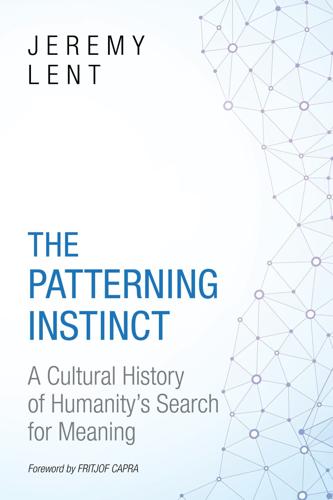
The Patterning Instinct: A Cultural History of Humanity's Search for Meaning
by
Jeremy Lent
Published 22 May 2017
At our current rate of energy usage, it has been calculated that our world is going through about fourteen thousand years’ worth of that fossilized sunshine from the Carboniferous age every day.38 We are so used to enjoying the benefits of oil's stored energy that it is difficult to comprehend precisely how much it is doing for us. A single barrel of oil holds as much energy as one man could produce in heavy manual labor over roughly ten years. Buckminster Fuller proposed a brilliant way to visualize the power of oil with the notion of “energy slaves”—the human equivalent of oil's energy. It would take one energy slave pedaling hard on a bicycle to keep a hundred-watt light bulb going. An average American, who consumes about twenty-four barrels of oil per year, would require about two hundred energy slaves to sustain her lifestyle, while the entire world population, using far less energy on average than Americans, would require a mind-boggling sixty-six billion energy slaves to produce the work currently provided by oil.

To Serve God and Wal-Mart: The Making of Christian Free Enterprise
by
Bethany Moreton
Published 15 May 2009
President Jack Shewmaker, a major force in pushing the digital revolution in Bentonville, even attended the same church as Holder.33 These creative collusions between business, technology, and belief shed new light on the supposed “paradox” of Wal-Mart: how the hightech rednecks mastered cybernetics and corporate culture without losing Christ or country music. Despite its gleam of pure sciÂ�enÂ�tific rationality, developing and deploying high technology has been in part a 132 MAKING CHRISTIAN BUSIN E S S M EN spiritual exercise from the beginning, no matter the political context. The countercultural devotees of Buckminster Fuller, Ken Kesey, and the Whole Earth Catalog brought their dreams of antiauthoritarian, transcendent elitism into the cyber revolution in California. Blending their privileged vision as “comprehensive designers” with the decentralized technologies they developed, this loose fraternity marked an entire wing of the postindustrial economy with their conviction that their new tools made them “as gods.”

Computer: A History of the Information Machine
by
Martin Campbell-Kelly
and
Nathan Ensmenger
Published 29 Jul 2013
Stewart Brand, Stanford University biology graduate turned publishing entrepreneur, became a leading voice for the New Communalists through creating The Whole Earth Catalog. Deeply influenced by cybernetics visionary Norbert Wiener, electronics media theorist Marshall McLuhan, and architect and designer Buckminster Fuller, Brand pressed NASA to publicly release a satellite photo of the Earth in 1966. Two years later the photo adorned the cover of the first edition of The Whole Earth Catalog. Publishing regularly between 1968 and 1971, Brand’s catalog identified and promoted key products or tools for communal living and, in doing so, sought to help “transform the individual into a capable, creative person.”
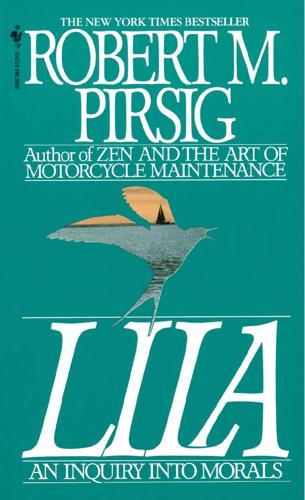
Lila: An Inquiry Into Morals
by
Robert M. Pirsig
Published 1 Jan 1991
In one dusty attic, he found a bulky manuscript called The Tribes and the States in which Sidis argues persuasively that the New England political system was profoundly influenced by the democratic federation of the Penacook Indians. At this sentence, a kind of shock passed through Phædrus, but the article went on. When Mahony sent Sidis’s book The Animate and Inanimate to another eccentric genius, Buckminster Fuller, Fuller found it a fine cosmological piece that astoundingly predicted the existence of black holes — in 1925! Mahony has unearthed a science fiction novel, economic and political writings, and eighty-nine weekly newspaper columns about Boston that Sidis wrote under a pen name. The amazing thing is that we may only have tapped the surface of what Sidis produced, says Mahony.

Track Changes
by
Matthew G. Kirschenbaum
Published 1 May 2016
People had not even heard of this stuff yet. It was a big deal for all of us. Alan talked for close to four hours about computers, education, music, early childhood, theatre, storytelling, science, psychology, learning, artificial intelligence, programming, science fiction, biology, humanism, evolution, Bach, Buckminster Fuller, philosophy, neurology, aesthetics, and the future, the future, and the future. Steven and I had our minds blown.38 MacBird had already been thinking that the film would hinge upon the contrast between the world inside and outside of the computer; the three developed a rapport, and she and Lisberger hired Kay as their technical consultant.
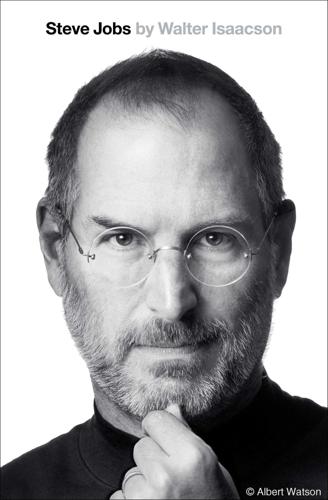
Steve Jobs
by
Walter Isaacson
Published 23 Oct 2011
Brand wrote on the first page of the first edition, “A realm of intimate, personal power is developing—power of the individual to conduct his own education, find his own inspiration, shape his own environment, and share his adventure with whoever is interested. Tools that aid this process are sought and promoted by the Whole Earth Catalog.” Buckminster Fuller followed with a poem that began: “I see God in the instruments and mechanisms that work reliably.” Jobs became a Whole Earth fan. He was particularly taken by the final issue, which came out in 1971, when he was still in high school, and he brought it with him to college and then to the All One Farm.
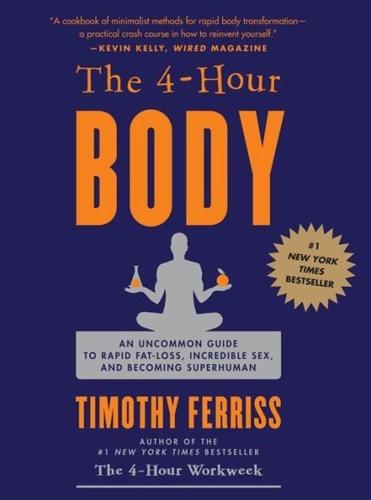
The 4-Hour Body: An Uncommon Guide to Rapid Fat-Loss, Incredible Sex, and Becoming Superhuman
by
Timothy Ferriss
Published 1 Dec 2010
Fun watching if you enjoy YouTube videos of folks face-planting off of Swiss balls, etc. Biopuncture: Common Questions and Answers (www.chiromedicalgroup.com/biopuncture) Overview of Biotensegrity (www.fourhourbody.com/biotensegrity) This explains the fascinating functions of fascia. Steven Levin, an orthopedic surgeon, explains how the principles of tensegrity seen in R. Buckminster Fuller’s geodesic domes apply in the human body, with bones acting as the compressive elements and the soft tissues as the tension elements. If you are at all geek-inclined, read “The Importance of Soft Tissues for Structural Support of the Body.” It’s outstanding. Egoscue (www.egoscue.com) Egoscue is a postural therapy program with 24 clinic locations worldwide.

To Save Everything, Click Here: The Folly of Technological Solutionism
by
Evgeny Morozov
Published 15 Nov 2013
An argument against rationalists who refused to acknowledge the importance of practices and traditions, rather than a celebration of cookery books, it’s a surprisingly upbeat moment in Oakeshott’s thought. However, one can only wonder if Oakeshott would need to revise his judgment today, now that cooking books have been replaced with the kinds of sophisticated gadgetry that would have Buckminster Fuller, the archsolutionist who never stopped fantasizing about the perfect kitchen, brimming with envy. Paradoxically, as technologies get smarter, the maneuvering space for interpretation—what Oakeshott thought would bring cooks in touch with the world of practices and traditions—begins to shrink and potentially disappear entirely.
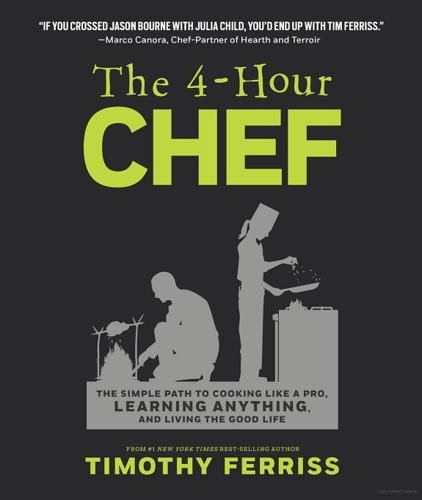
The 4-Hour Chef: The Simple Path to Cooking Like a Pro, Learning Anything, and Living the Good Life
by
Timothy Ferriss
Published 1 Jan 2012
Serve. Suggested Garnishes Sweet tomatoes and arugula Sautéed mushrooms Truffles/truffle oil (as always) Grant’s Principles #3 TECHNOLOGY “ANTI-GRIDDLE” PEPPERMINT CHOCOLATE POPS - * * * “I just invent, then wait until man comes around to needing what I’ve invented.” —R. BUCKMINSTER FULLER, ARCHITECT AND INVENTOR * * * These simple pops are a classic dark chocolate ganache,11 flash-frozen using dry ice. Imagine an elegant version of Girl Scout Thin Mint cookies, the crack cocaine of sweets. SHORTHAND Mix ½c simmered cream, 4oz chopped dark chocolate, pinch salt, ½t peppermint extract till melted ganache.
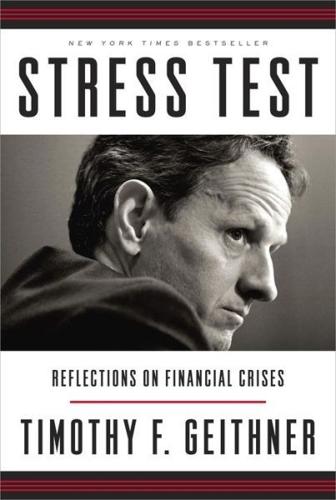
Stress Test: Reflections on Financial Crises
by
Timothy F. Geithner
Published 11 May 2014
He devoted his professional life to global development, not a typically conservative cause, and he voted for President Obama in 2008. But he supported Mitt Romney in 2012, even though I was still working for the President. My mother is from a New England family dating back to the Mayflower, with relatives including the architect Buckminster Fuller, the journalist Margaret Fuller, and the novelist John Marquand. Her father, Charles F. Moore, Jr., was, among other things, a newspaperman, vice president of Ford Motor Company, and an adviser to President Eisenhower. Later in life, he served as a town selectman in Orleans, the small town on the Cape where my parents now live.
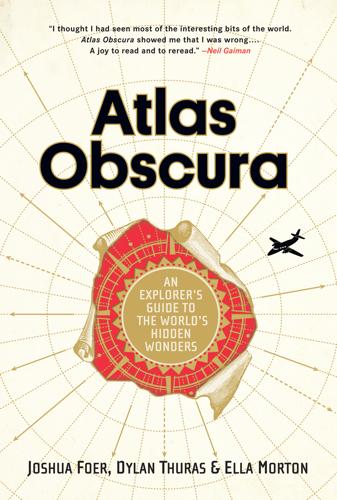
Atlas Obscura: An Explorer's Guide to the World's Hidden Wonders
by
Joshua Foer
,
Dylan Thuras
and
Ella Morton
Published 19 Sep 2016
The spillway is best seen during the rainy season when the lake is full. 38.512201 122.104748 Lake Berryessa’s massive overflow drain is known affectionately as the “glory hole.” Also in California Winchester Mystery House San Jose · The former home of Sarah Winchester, heir to the Winchester gun fortune, contains doors to nowhere, stairs that stop suddenly, and secret passages. Dymaxion Chronofile Stanford · From journals to blueprints to dry-cleaning bills, Buckminster Fuller documented his life in staggering detail. The full archive is stored at Stanford University Library. Methuselah Tree White Mountains · Germinated circa 2833 BCE, this gnarled bristlecone pine is one of the oldest trees in the world. OREGON Arborsmith Studios WILLIAMS Arborsculpture is the craft of shaping living trees into works of art and architecture.
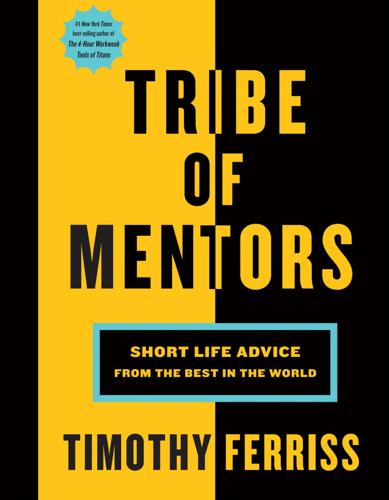
Tribe of Mentors: Short Life Advice From the Best in the World
by
Timothy Ferriss
Published 14 Jun 2017
If you were to Google who the top stars are, undoubtedly most stars, particularly the male actors, would have been born into the movie business. It takes time, but if you are consistently good at what you do, at least you get to call your success your own. What is one of the best or most worthwhile investments you’ve ever made? My father encouraged me to take a course called “Money and You,” devised around the ideas of Buckminster Fuller. I attended the four-day course in Kuala Lumpur. The first two days focused on money and the next two on “you.” It was very balanced, taught me to look at money differently, and imbued me with a sense of enterprise at a young age. It cost me $500. What is an unusual habit or an absurd thing that you love?

Valley of Genius: The Uncensored History of Silicon Valley (As Told by the Hackers, Founders, and Freaks Who Made It Boom)
by
Adam Fisher
Published 9 Jul 2018
That was the year Jobs finagled a return to the company which he had founded two decades before but had never actually controlled. This time he would be firmly in charge. The first thing that the older and wiser Jobs did was launch an advertising campaign, “Think Different,” which flattered the Apple faithful with comparisons to Albert Einstein, Buckminster Fuller, Pablo Picasso, and the like. Then he launched a new computer, the iMac, which piggybacked on the vogue for all things internet. The third launch was a clever new product aimed at the Napster generation. The iPod was a way to put an MP3 in your pocket. Apple’s update of Sony’s venerable Walkman idea proved to be a game changer, a completely new direction for the company.
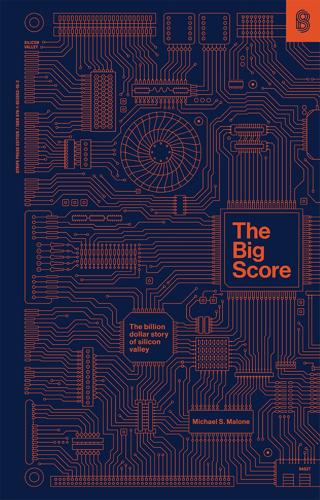
The Big Score
by
Michael S. Malone
Published 20 Jul 2021
Like doomed species of animals displayed in zoos, they were less remnants of another time than curiosities of the modern age. Mission Santa Clara might look the same, but it would never again see masses attended by devout old Indians and Mexicans. Now, electrical engineering students would come to hear speeches by Buckminster Fuller or listen to guitarists leading “folk masses.” The modern Silicon Valley was a Klondike boomtown adjusted to match the new world of the baby boom and the philosophies of William Levitt. No one really planned to stay in California, except those who had come out to retire or die. For the rest, Silicon Valley was the place you went to make a killing, to take care of business.

How the Mind Works
by
Steven Pinker
Published 1 Jan 1997
My “normal” mental equipment leaves me chronically dumbfounded at the fact that a microdot and a spoonful of semen can bring about a site of thinking and feeling and that a blood clot or a metal slug can end it. It gives me the delusion that London and chairs and vegetables are on the inventory of the world’s objects. Even the objects themselves are a kind of delusion. Buckminster Fuller once wrote: “Everything you’ve learned … as ‘obvious’ becomes less and less obvious as you begin to study the universe. For example, there are no solids in the universe. There’s not even a suggestion of a solid. There are no absolute continuums. There are no surfaces. There are no straight lines.”

Spillover: Animal Infections and the Next Human Pandemic
by
David Quammen
Published 30 Sep 2012
The capsid also defines the exterior shape of a virus. Virions of Ebola and Marburg, for instance, are long filaments, which is why they’ve been placed in a group known as filoviruses. Other viruses have particles that are spherical, or ovoid, or helical, or icosahedral (twenty-sided, like a soccer ball designed by Buckminster Fuller). HIV-1 particles are globular. Rabies virions are shaped like bullets. A plate of Ebola virions mixed with Hendra virions would resemble capellini in a light sauce of capers. Many viruses are wrapped with an additional layer, known as an envelope, comprising not only protein but also lipid molecules drawn from the host cell—in some cases, pulled from the wall of the cell when the virion made its exit.

The Code: Silicon Valley and the Remaking of America
by
Margaret O'Mara
Published 8 Jul 2019
“When you enter our buildings, we want you to feel how much left there is to be done in our mission to connect the world.”7 Even stripped-down Amazon couldn’t resist adding a grand architectural flourish to the generally undistinguished set of buildings that made up its headquarters in central Seattle, building a striking pair of “biospheres” housing indoor gardens for Amazonians to enjoy. On the other side of Lake Washington, Microsoft tried to keep up with its crosstown rival’s riff on Buckminster Fuller by building treehouses for employees’ midday retreats. But the most stunning monument of them all was Apple’s massive new Cupertino headquarters, a sleek ring of glass and steel housing twelve thousand employees. “Apple Park” had been one of Steve Jobs’s last ideas before he died. In homage to their founder and the Valley that once was, Apple planted an apricot orchard in the building’s shadow.8 THE NEW MONEY MEN The Silicon Valley money machine seemed unstoppable.
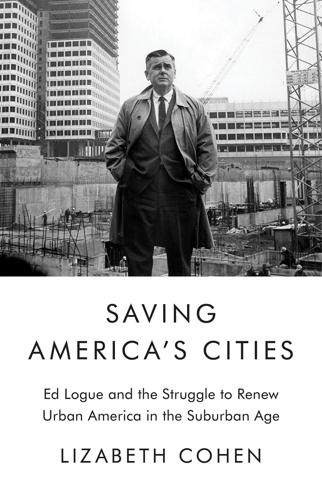
Saving America's Cities: Ed Logue and the Struggle to Renew Urban America in the Suburban Age
by
Lizabeth Cohen
Published 30 Sep 2019
Complaints remained, but the UDC tried to balance the often-competing demands of architects, tenants, budget watchers, and the Feds. The UDC’s prototypes frequently used new technology to make housing construction easier, quicker, and cheaper. Applying the methods of mass production to creating “industrial housing” had long been a dream of prominent modernists including Le Corbusier, Walter Gropius, Jean Prouvé, R. Buckminster Fuller, Charles and Ray Eames, Moshe Safdie, and Paul Rudolph. But supply and demand for the concept had been weak in the United States, except for occasional bursts like the short-lived Lustron homes experiment immediately after World War II.170 Logue nonetheless remained intrigued, particularly in efforts to shift prefab production from single-family houses to multi-family dwellings.

Accessory to War: The Unspoken Alliance Between Astrophysics and the Military
by
Neil Degrasse Tyson
and
Avis Lang
Published 10 Sep 2018
Interplanetary space is the next arena where the soft power of technological bravado, augmented by the lure of unlimited resources, urges us to take flight. 9 A TIME TO HEAL On July 21, 1969—the day the New York Times banner headline read “MEN WALK ON MOON: ASTRONAUTS LAND ON PLAIN; COLLECT ROCKS, PLANT FLAG”—the paper also provided space for reactions from several dozen notable individuals: the Dalai Lama, R. Buckminster Fuller, Jesse Jackson, Charles Lindbergh, Arthur Miller, Pablo Picasso. Some were enthusiastic, some were ambivalent, Picasso was completely uninterested. The admired historian of cities and technology Lewis Mumford was disgusted. Five years earlier, Mumford had received the Presidential Medal of Freedom.
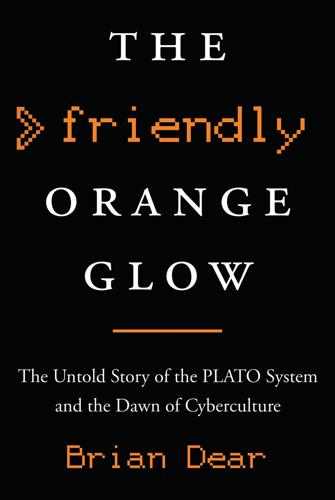
The Friendly Orange Glow: The Untold Story of the PLATO System and the Dawn of Cyberculture
by
Brian Dear
Published 14 Jun 2017
He had a general rule that editorials needed to be on topics so ridiculous that no one could possibly believe they were real. “That was my rule,” he says. One editorial advocated for getting rid of the earth’s ozone layer, “because it was just too damn fragile.” That spawned a series of replies, including one suggesting enclosing the earth in a dome and that they should hire R. Buckminster Fuller to design it. Another editorial, written when the gun control debate was raging in the national media, was based on a homicide study that had been done in Europe. “We came across a survey showing that 55 percent of murders committed by German women were done with frying pans. In the United States it was the telephone.
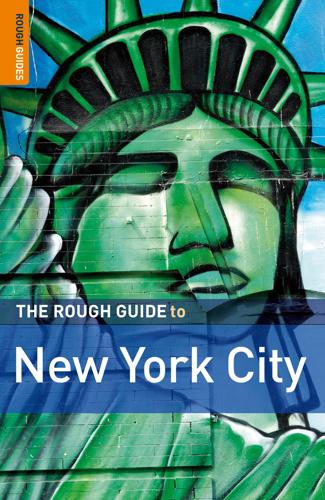
The Rough Guide to New York City
by
Martin Dunford
Published 2 Jan 2009
Parking ($10) is not available during the US Open. The adjacent Queens Zoo, 53-51 111th St (April–Oct Mon–Fri 10am– 5pm, Sat & Sun 10am–5.30pm; Nov–March daily 10am–4.30pm; $6, ages 3–12 $2, seniors $2.25; T 718/271-1500, W www.queenszoo.org), is not nearly as spectacular as those in Central Park and the Bronx, although it has transformed Buckminster Fuller’s 1964 geodesic dome into a dizzying aviary, and some beautiful big animals, including bison, Shetland cattle, and elk, roam the grounds. East of the zoo, the Unisphere is a 140-foot-high, stainless-steel globe that weighs 380 tons – probably the main reason why it was never moved after the 1964 fair.
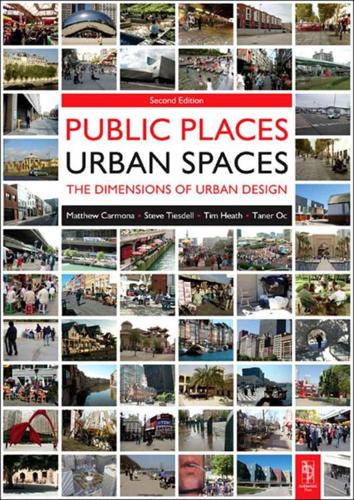
Public Places, Urban Spaces: The Dimensions of Urban Design
by
Matthew Carmona
,
Tim Heath
,
Steve Tiesdell
and
Taner Oc
Published 15 Feb 2010
A fourth criteria of ‘economy’ should also be added, not merely in a narrow financial sense of respecting budget constraints, but also in the wider sense of minimising environmental costs. These (and other desirable) criteria cannot be put into a hierarchy of importance: good design must achieve them all simultaneously. Designers are often accused of concentrating too much on visual appearance. In some cases this may be true – though Richard Buckminster Fuller gave a much better explanation of the role of beauty in the design process:‘When I am working on a problem, I never think about beauty. I think only how to solve the problem. But when I have finished, if the solution is not beautiful, I know it is wrong.’ Design involves more than just aesthetics and superficial styling: what matters in the design of a car, for example, is not just the styling of the external shell, but also the power, performance, reliability and fuel economy of its engine; its internal comfort and the ergonomic design of the driver’s seating position; its weather resistance and longevity; its security system; etc.

The Rough Guide to New York City
by
Rough Guides
Published 21 May 2018
Queens Zoo 53-51 111th St • April–Oct Mon–Fri 10am–5pm, Sat & Sun 10am–5.30pm; Nov–March daily 10am–4.30pm • $8, ages 3–12 $5 • 718 271 1500, queenszoo.com • Subway #7 to 111th Adjacent to the New York Hall of Science, the Queens Zoo is not nearly as spectacular as those in Central Park and the Bronx, although it has transformed Buckminster Fuller’s 1964 geodesic dome into a dizzying aviary, and some beautiful animals both big (bison, Shetland cattle) and small (coyote pups, pudú deer) roam the grounds. Unisphere and New York Pavilion East of the Queens Zoo, the Unisphere is a 140ft-high, stainless-steel globe that weighs 450 tonnes – probably the main reason why it was never moved after the 1964 fair.

Code Complete (Developer Best Practices)
by
Steve McConnell
Published 8 Jun 2004
Some characteristics of design quality are also characteristics of a good program: reliability, performance, and so on. Others are internal characteristics of the design. When I am working on a problem I never think about beauty. I think only how to solve the problem. But when I have finished, if the solution is not beautiful, I know it is wrong. — R. Buckminster Fuller Here's a list of internal design characteristics: Cross-Reference These characteristics are related to general software-quality attributes. For details on general attributes, see Characteristics of Software Quality. Minimal complexity. The primary goal of design should be to minimize complexity for all the reasons just described.
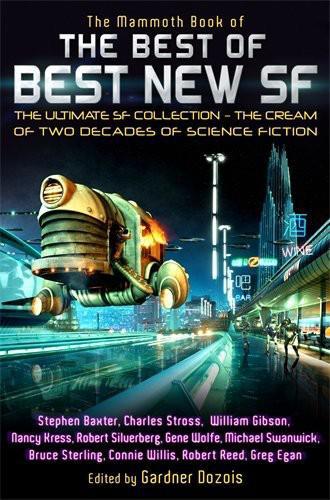
The Best of Best New SF
by
Gardner R. Dozois
Published 1 Jan 2005
“You don’t understand me, Edward. Look at the images again. I’m not damaged.” “Look, there’s thickening here” – I indicated the ankles – “and your ribs – that crazy zigzag pattern of interlocks. Broken sometime, obviously. And – ” “Look at my spine,” he said. I rotated the image in the video frame. Buckminster Fuller, I thought. It was fantastic. A cage of triangular projections, all interlocking in ways I couldn’t begin to follow, much less understand. I reached around and tried to feel his spine with my fingers. He lifted his arms and looked off at the ceiling. “I can’t find it,” I said. “It’s all smooth back there.”
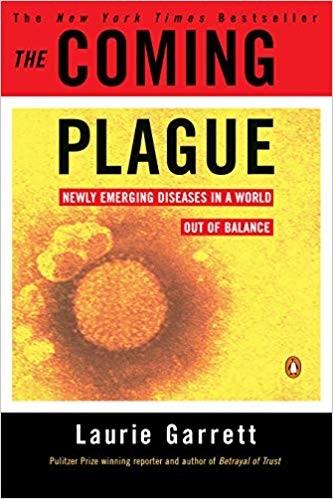
The Coming Plague: Newly Emerging Diseases in a World Out of Balance
by
Laurie Garrett
Published 31 Oct 1994
This information, in conjunction with that obtained by electron microscope examination of … particles, might be enough for us to make a preliminary identification.12 Scientists could “see” viruses with the aid of microscopes powerful enough to magnify up to visual level objects that were nearly a million times smaller than a dime. With that power of magnification they could detect clear differences in the appearance of various species of viruses, from the chaotic-looking mumps virus that visually resembles a bowl full of spaghetti to the absolutely symmetrical polio virus that looked as if it were a Buckminster Fuller-designed sphere composed of alternating triangles. Researchers also understood that viruses had a variety of different types of proteins protruding from their capsules, most of which were used by the tiny microbes to lock on to cells and gain entry for invasion. Some of the most sophisticated viruses, such as influenza, sugarcoated those proteins so that the human immune system might fail to notice the disguised invaders.
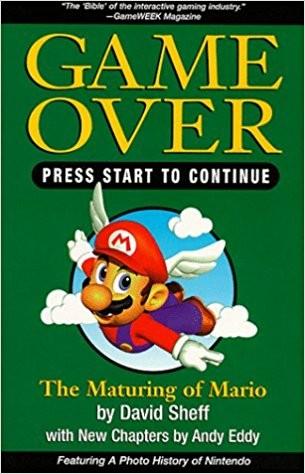
Game Over Press Start to Continue
by
David Sheff
and
Andy Eddy
Published 1 Jan 1993